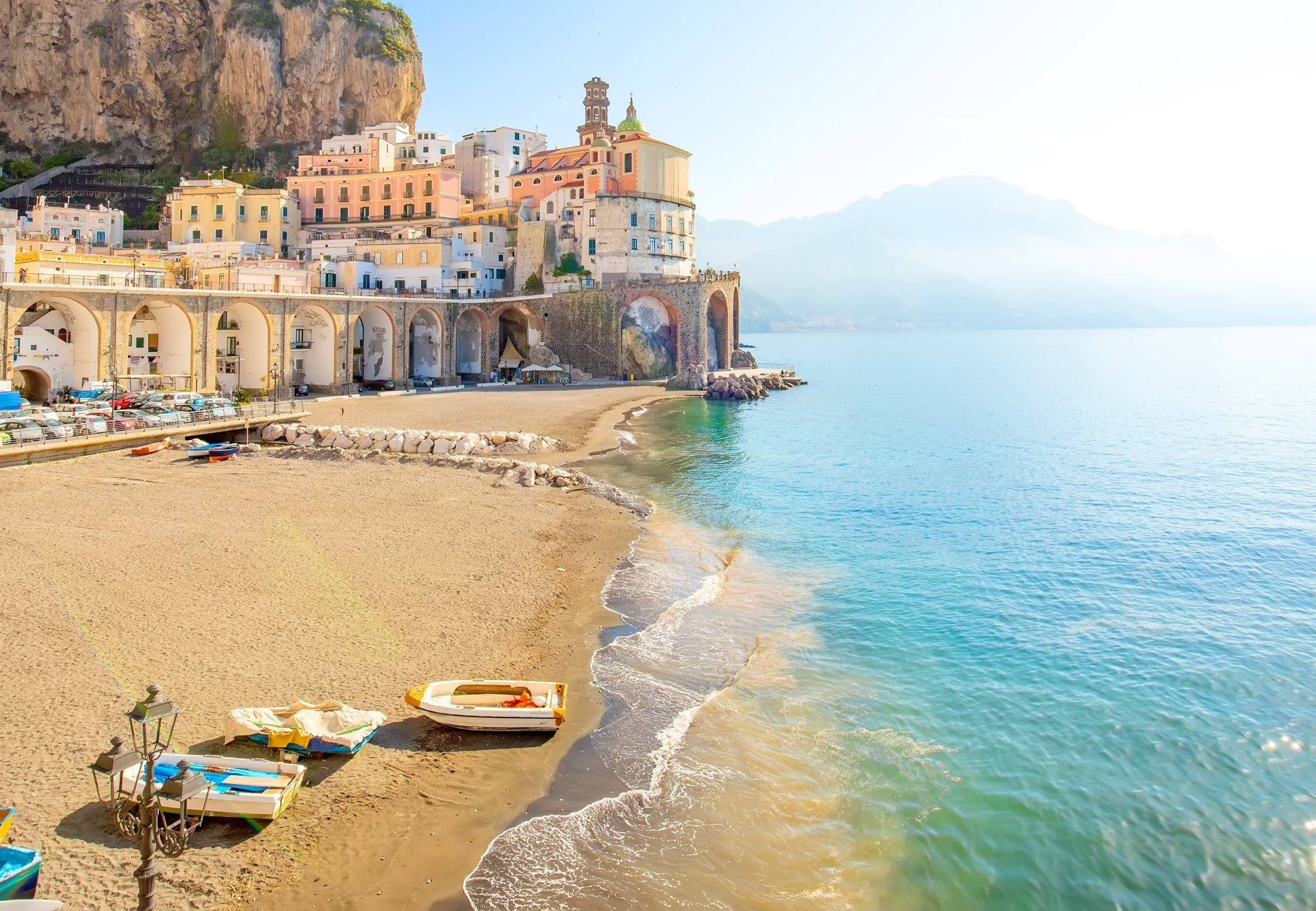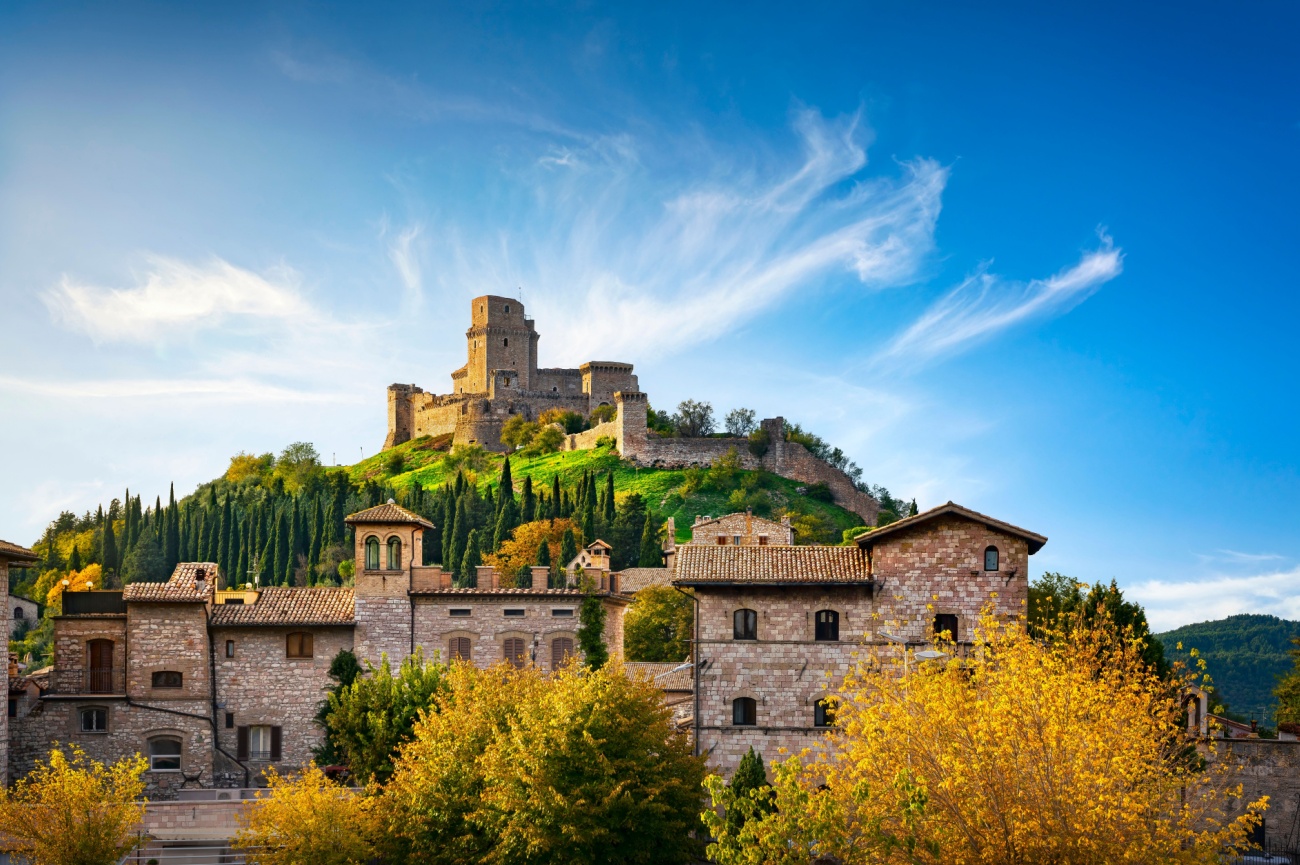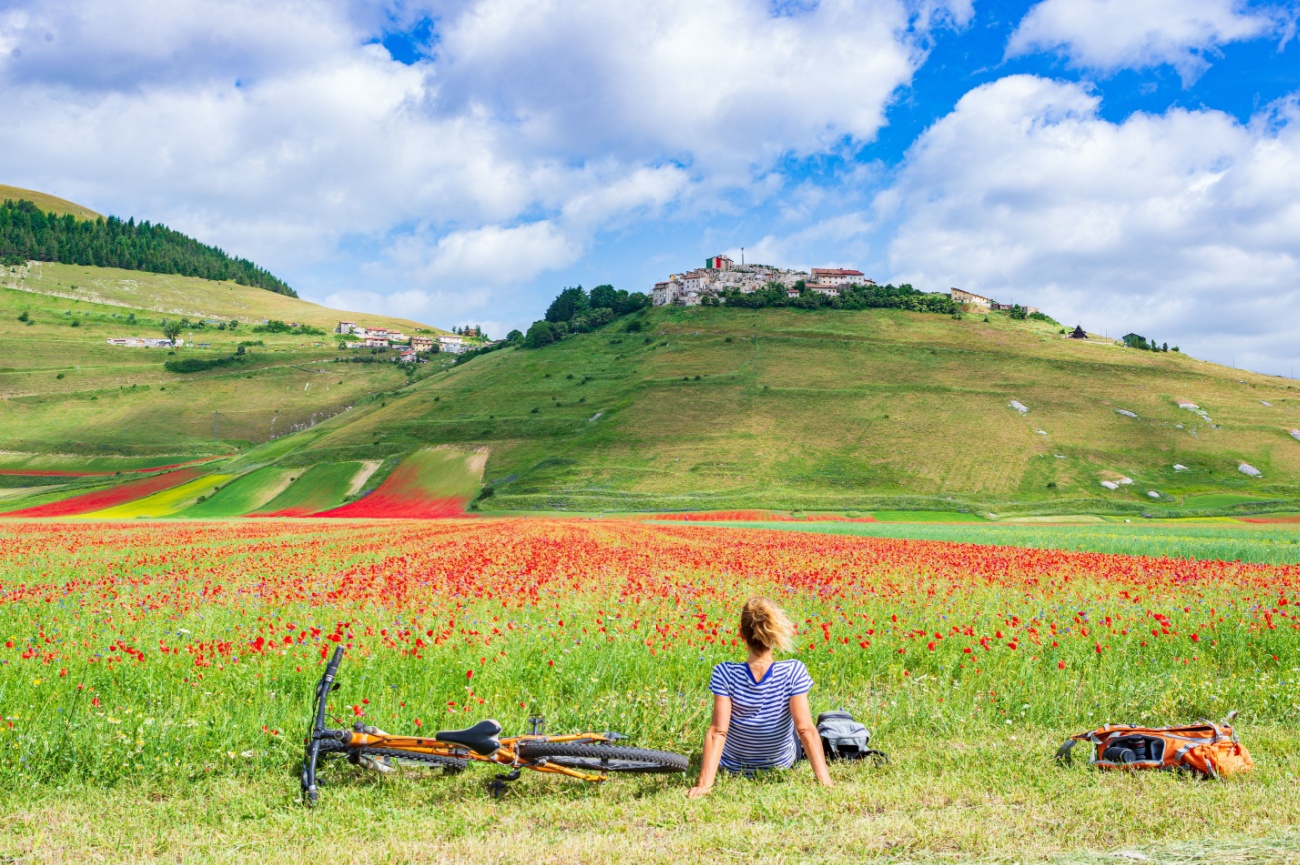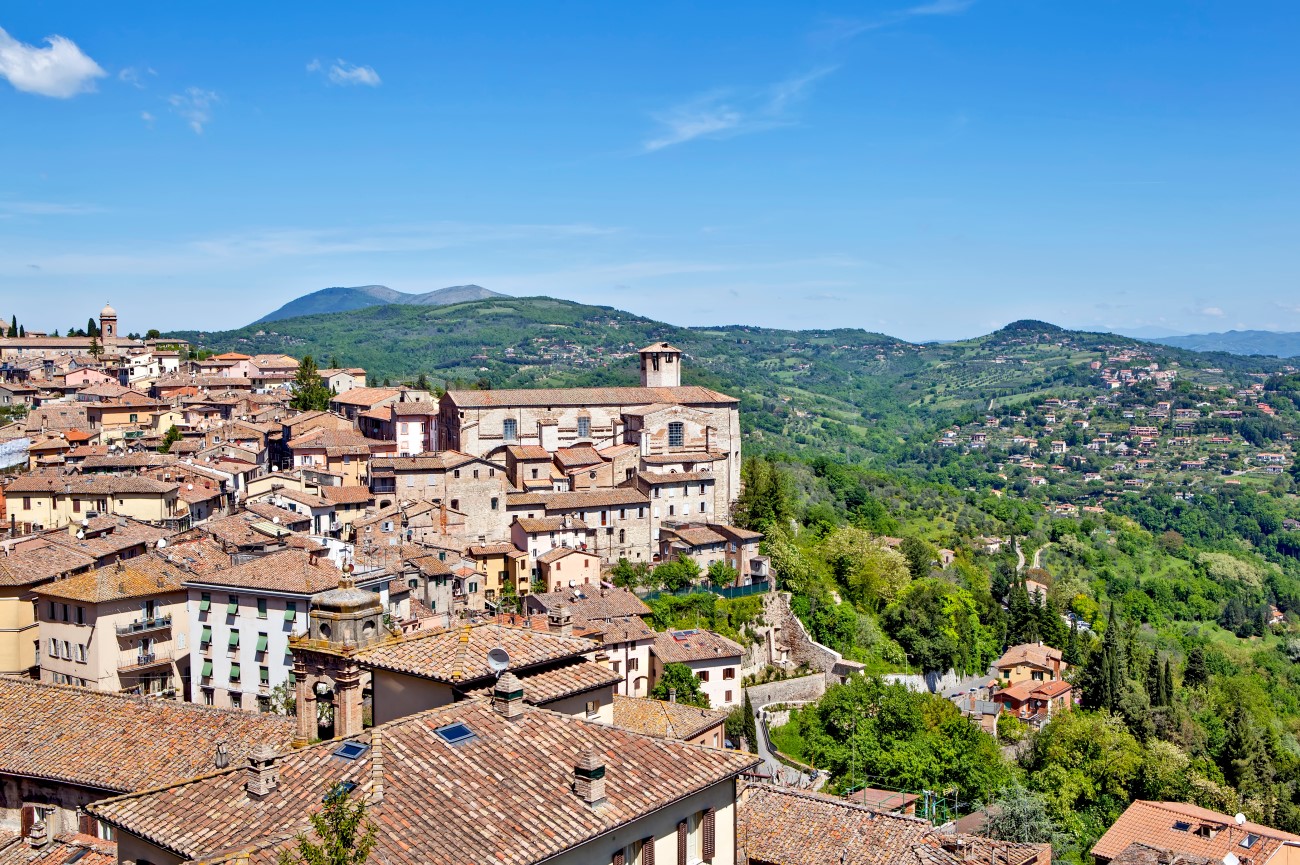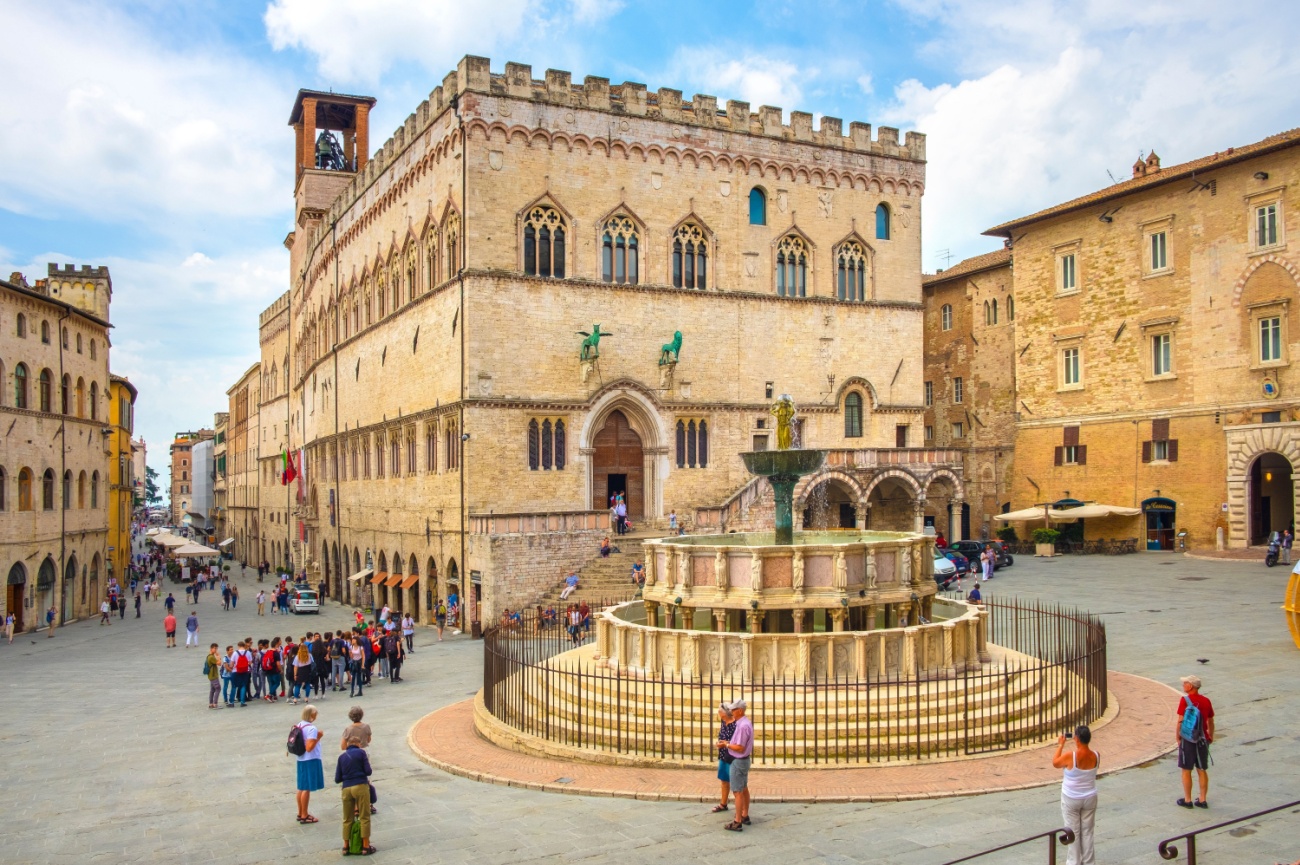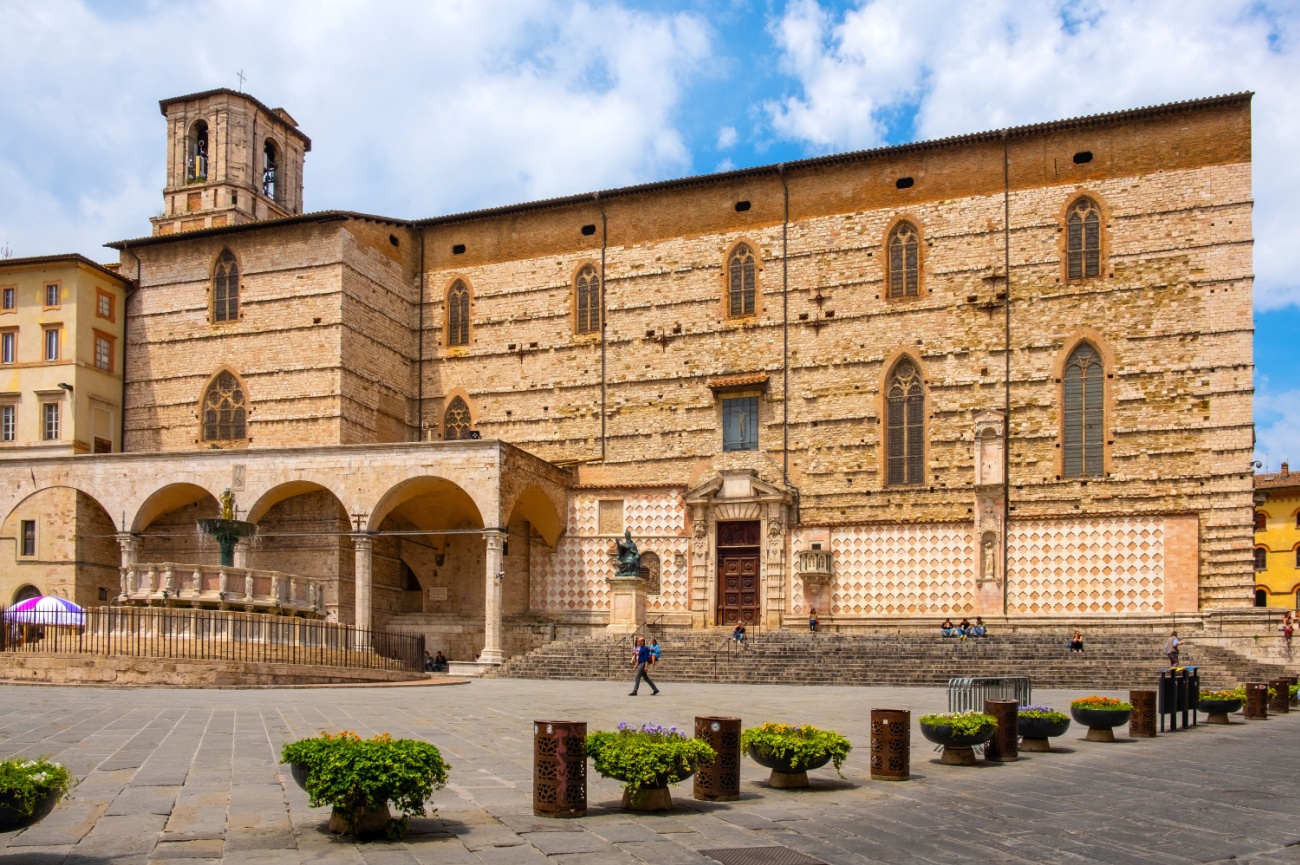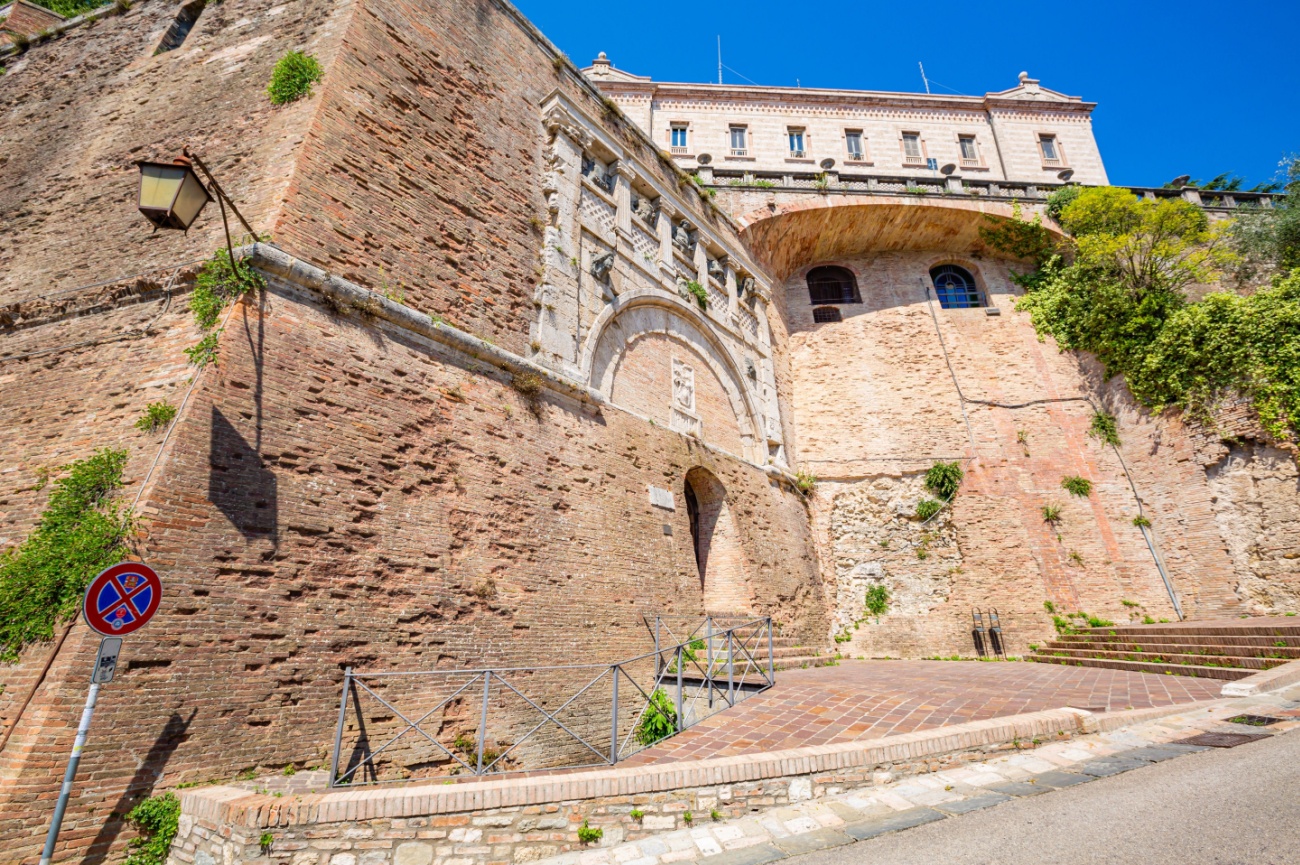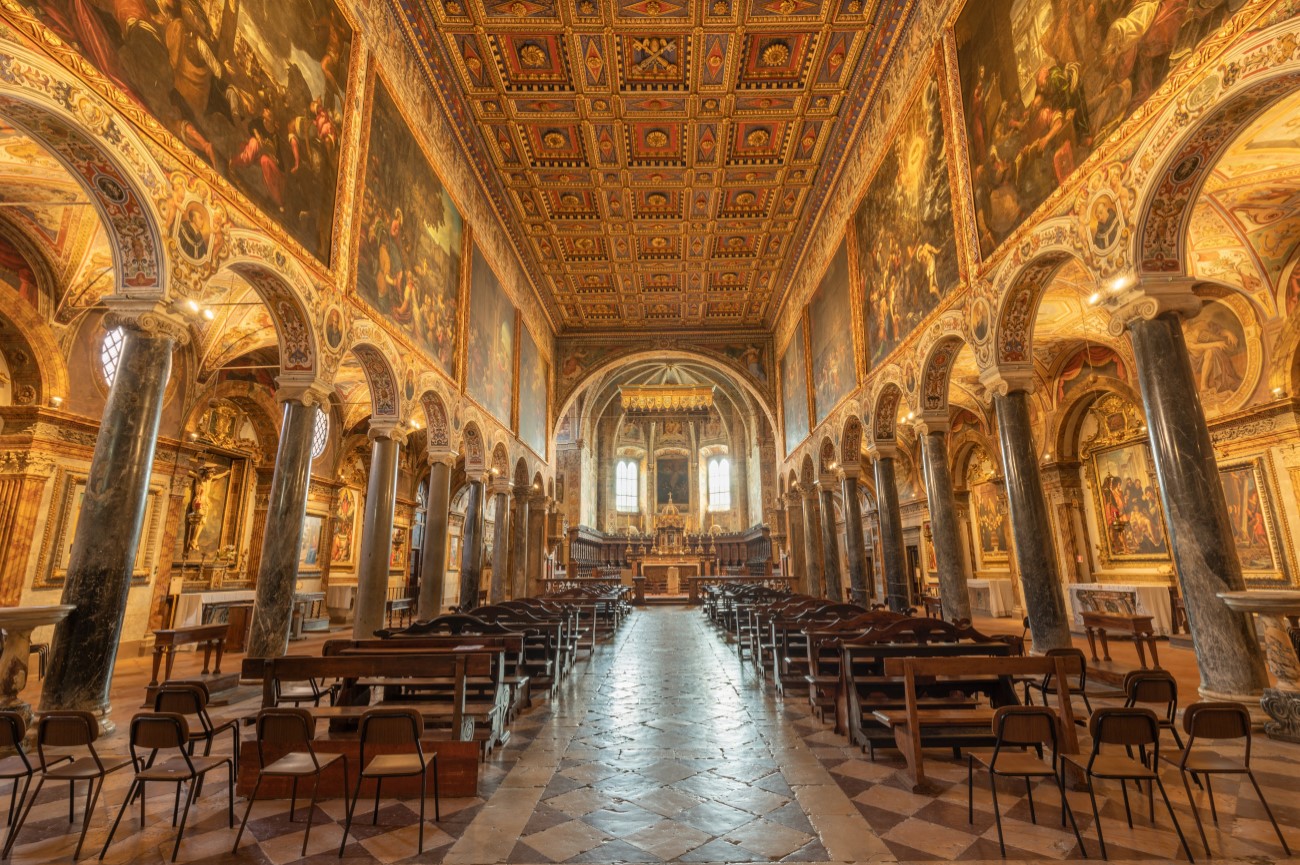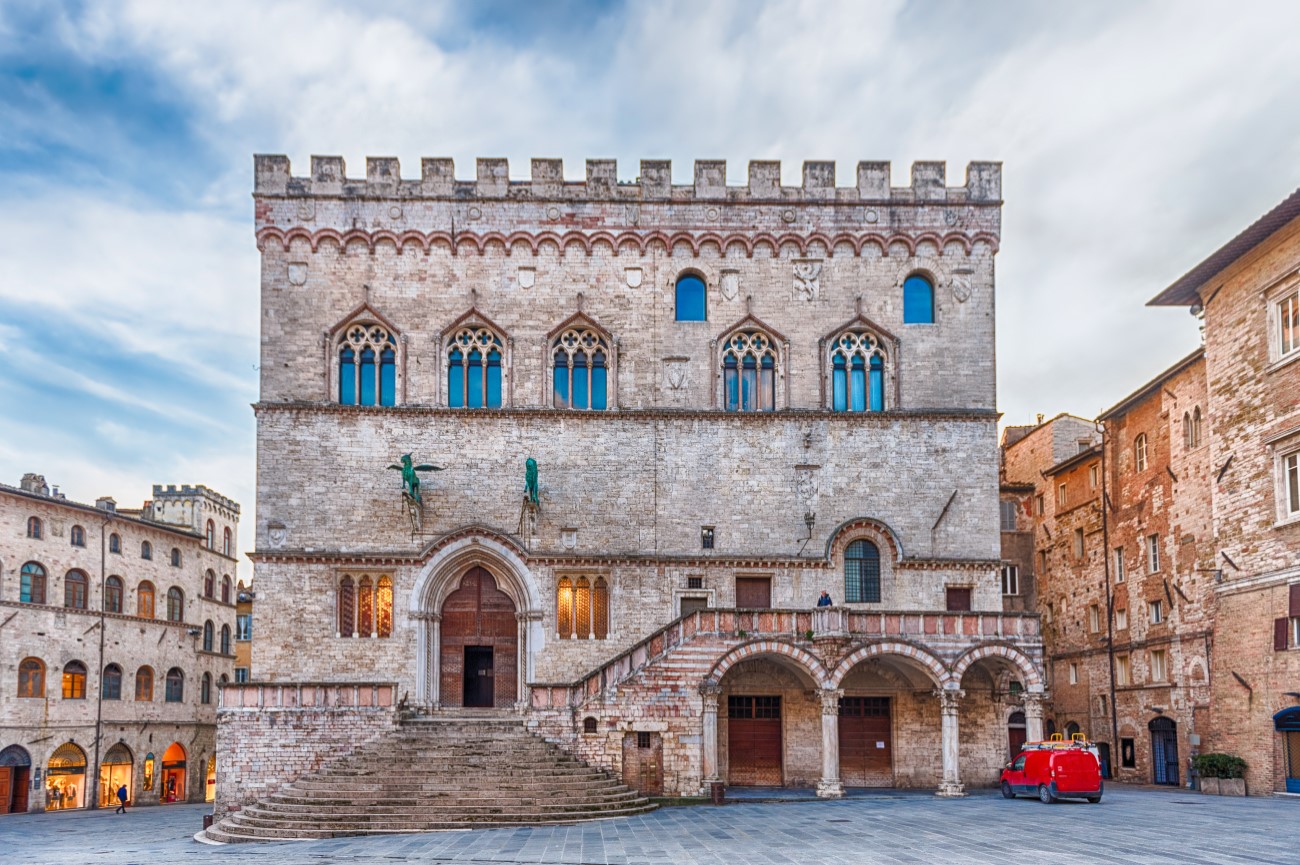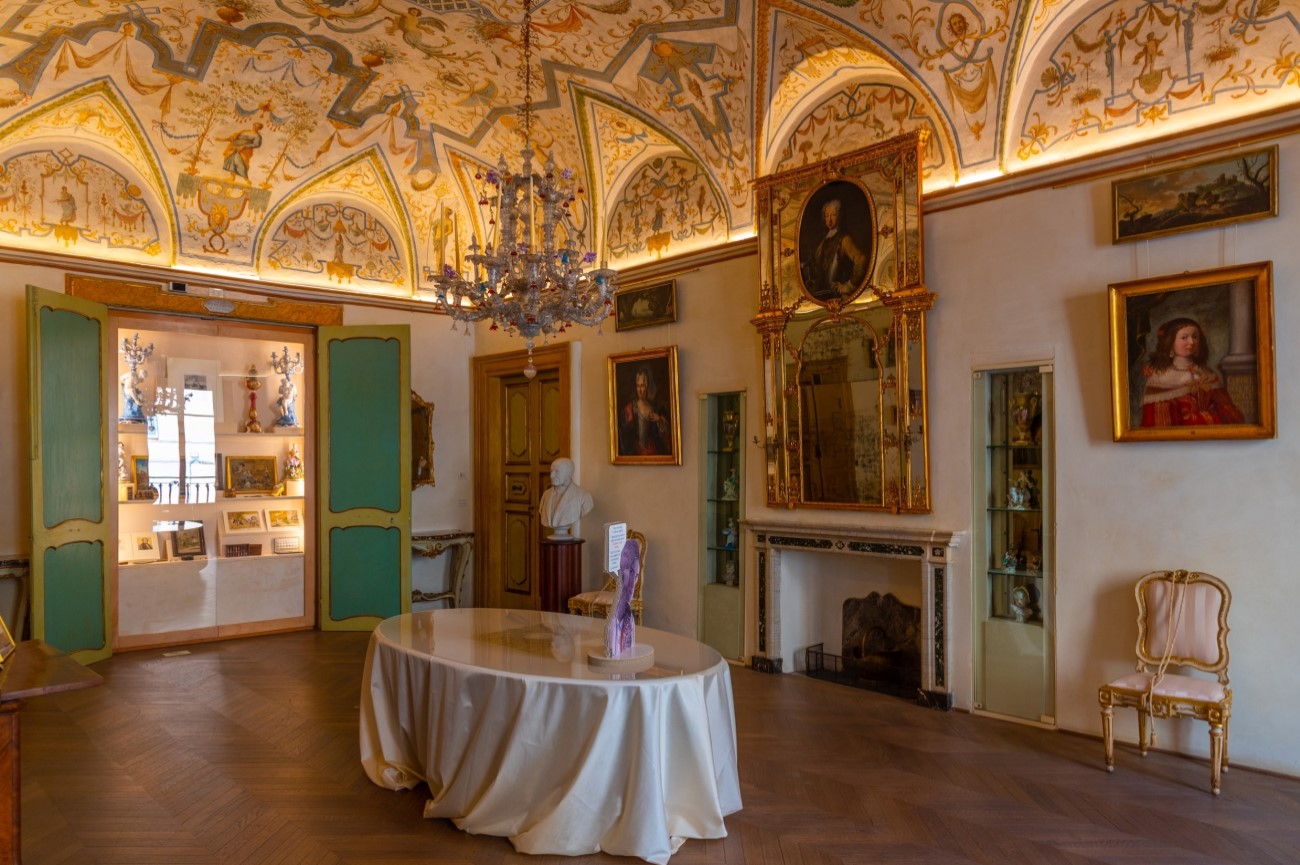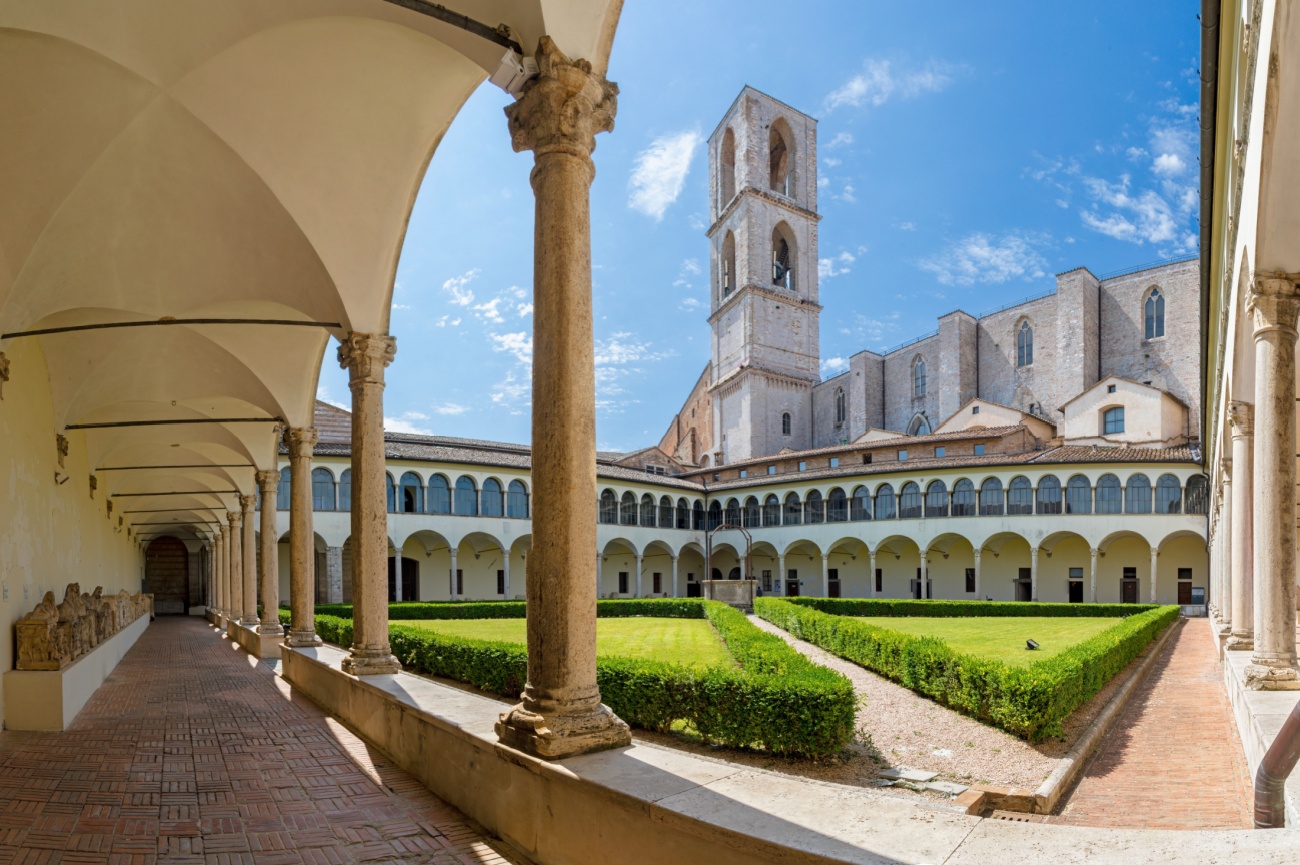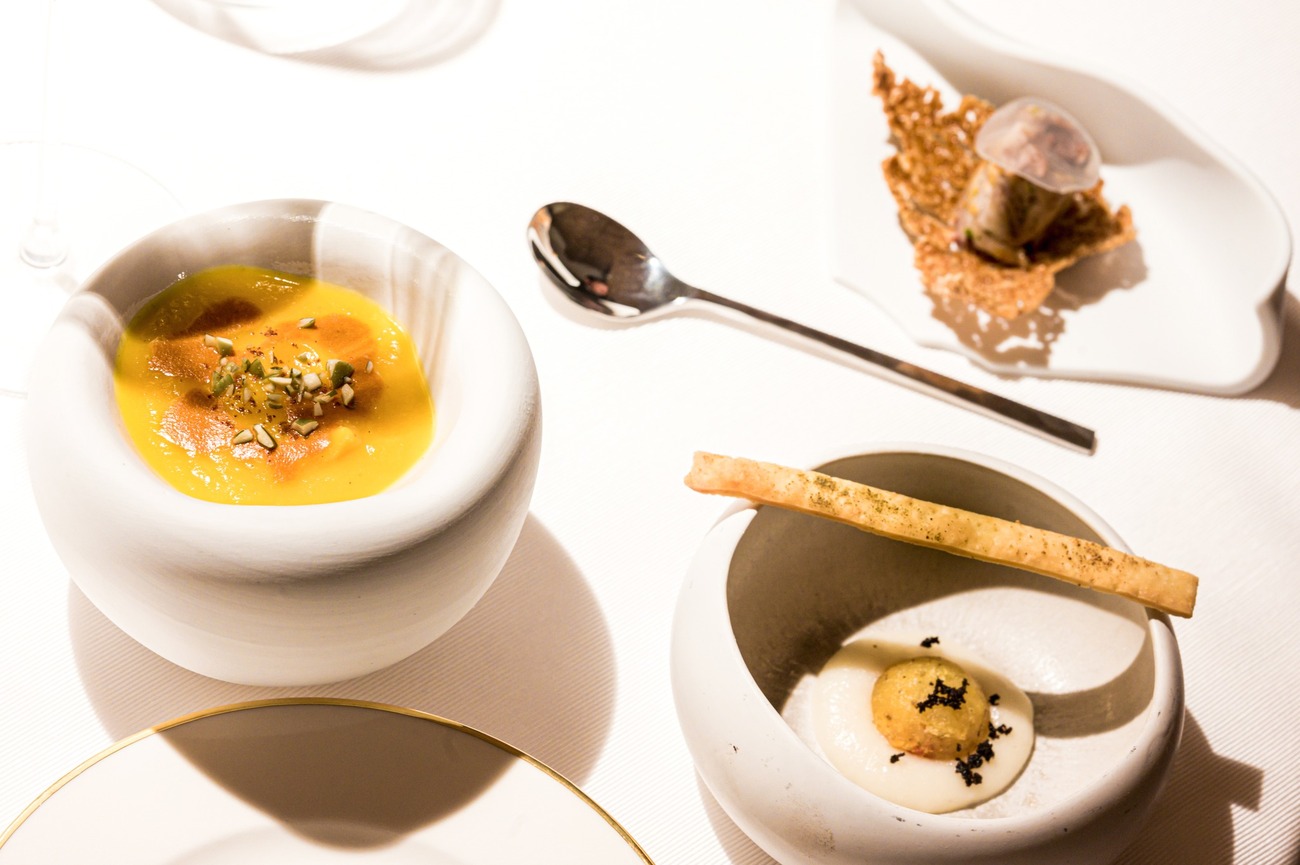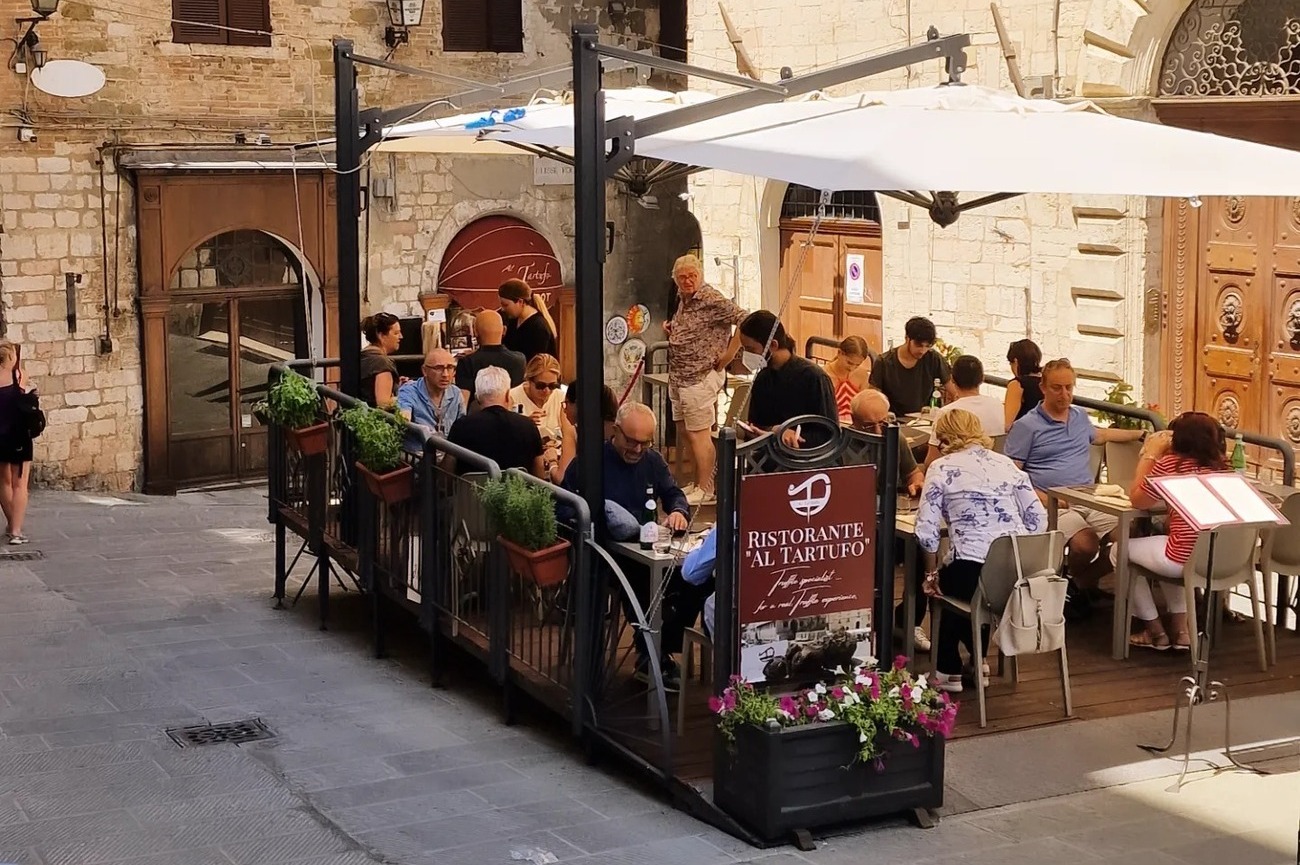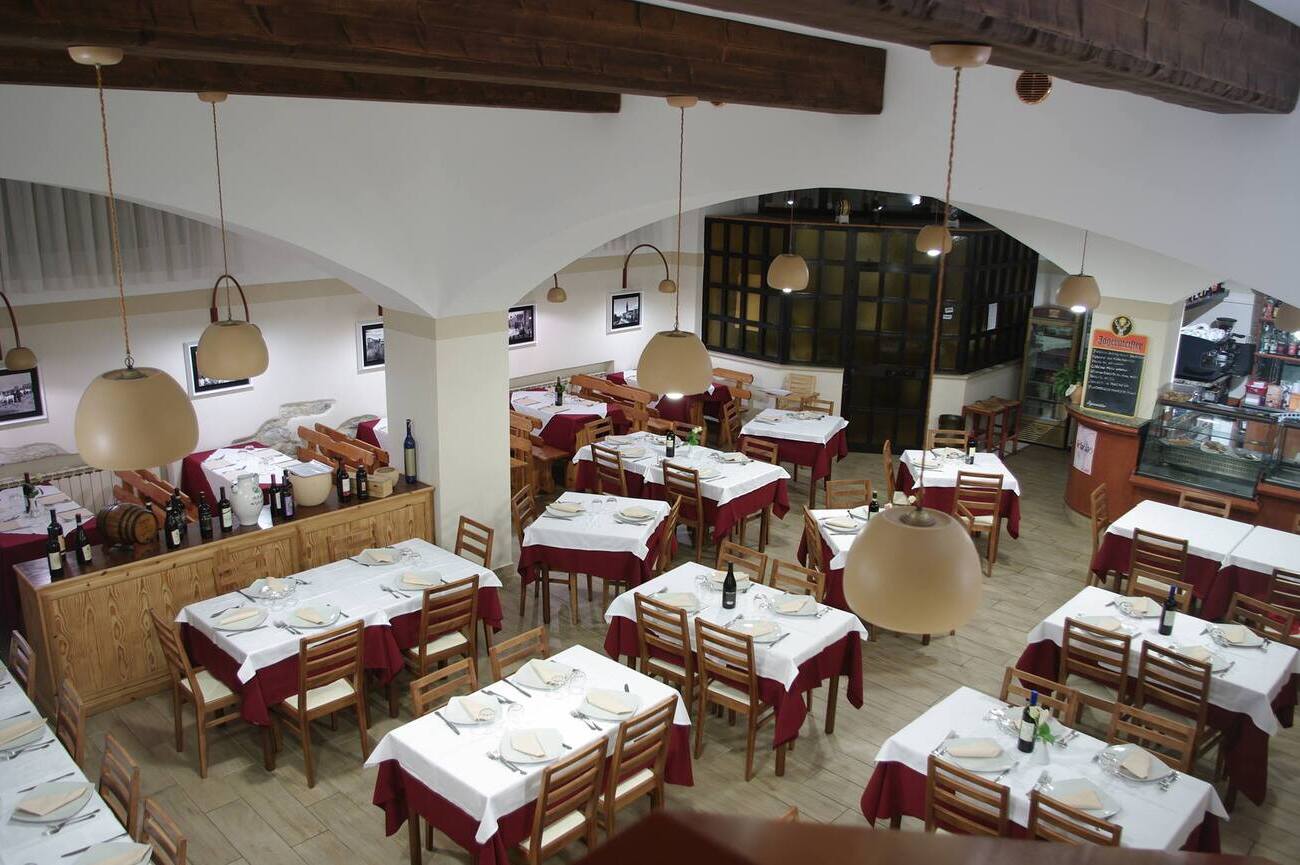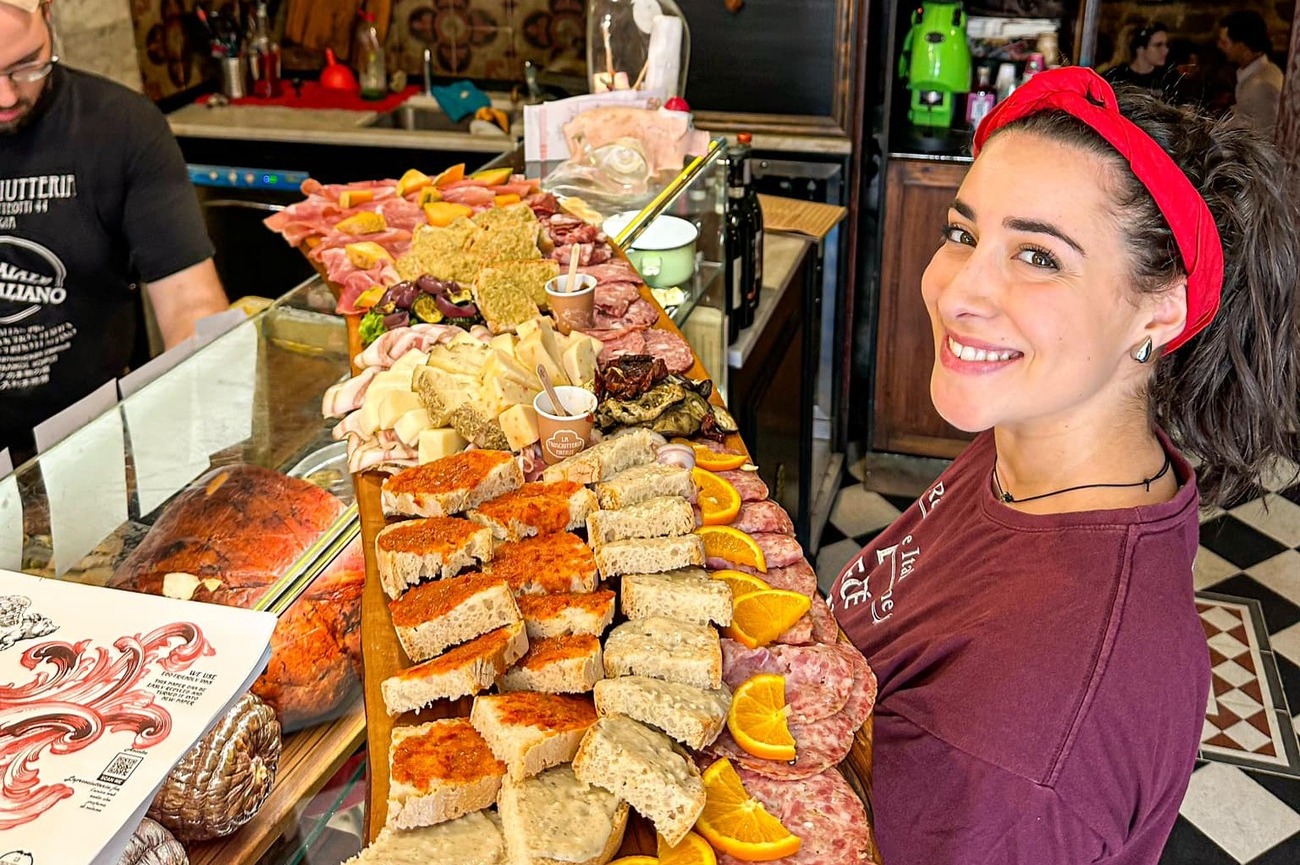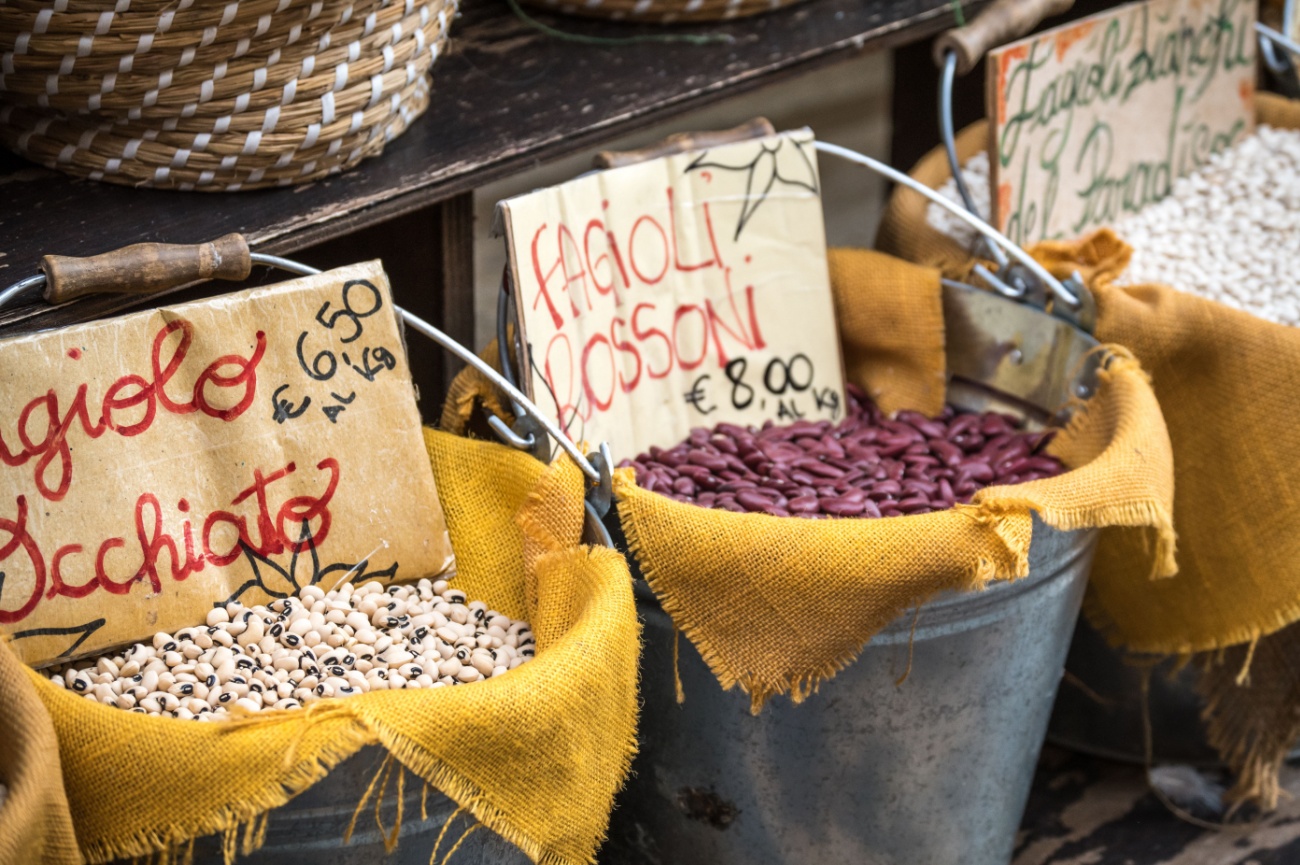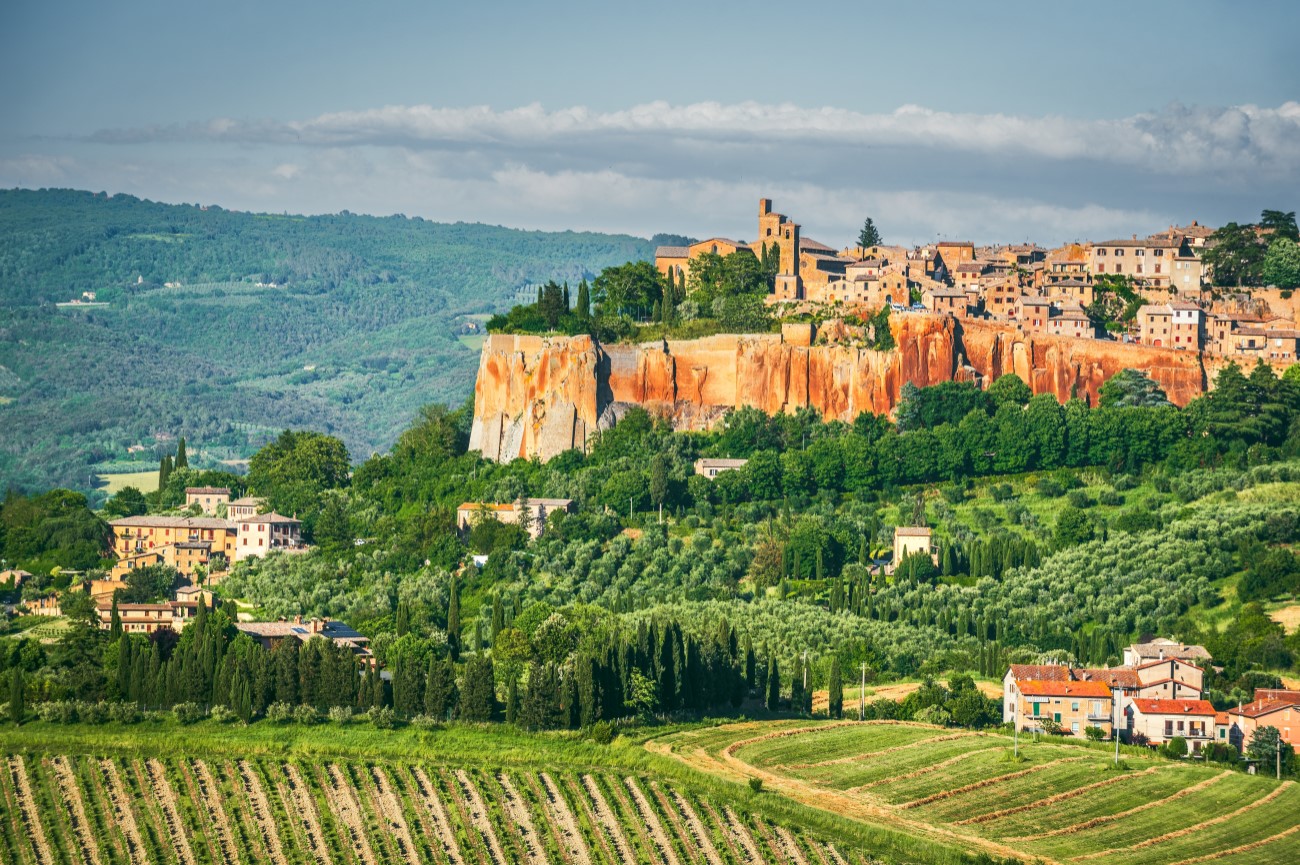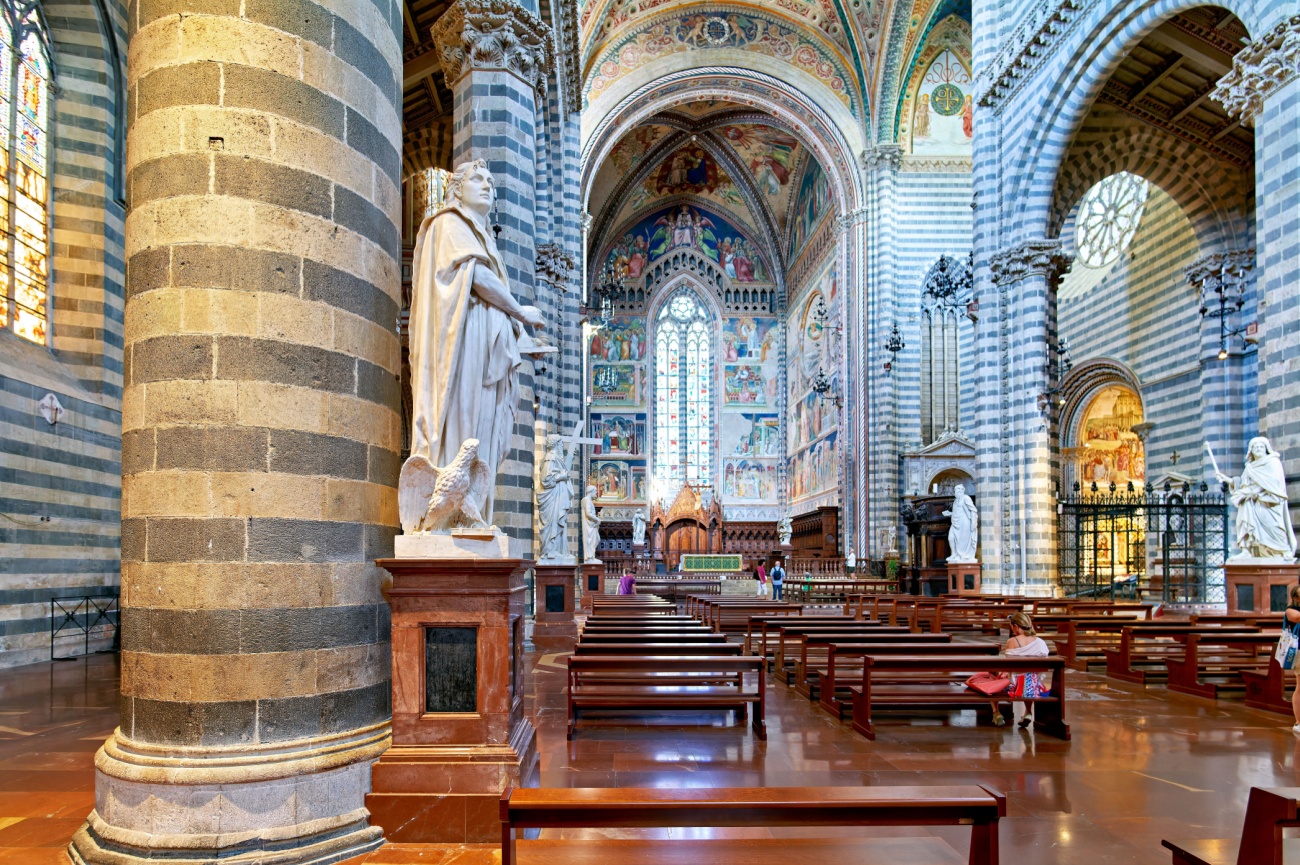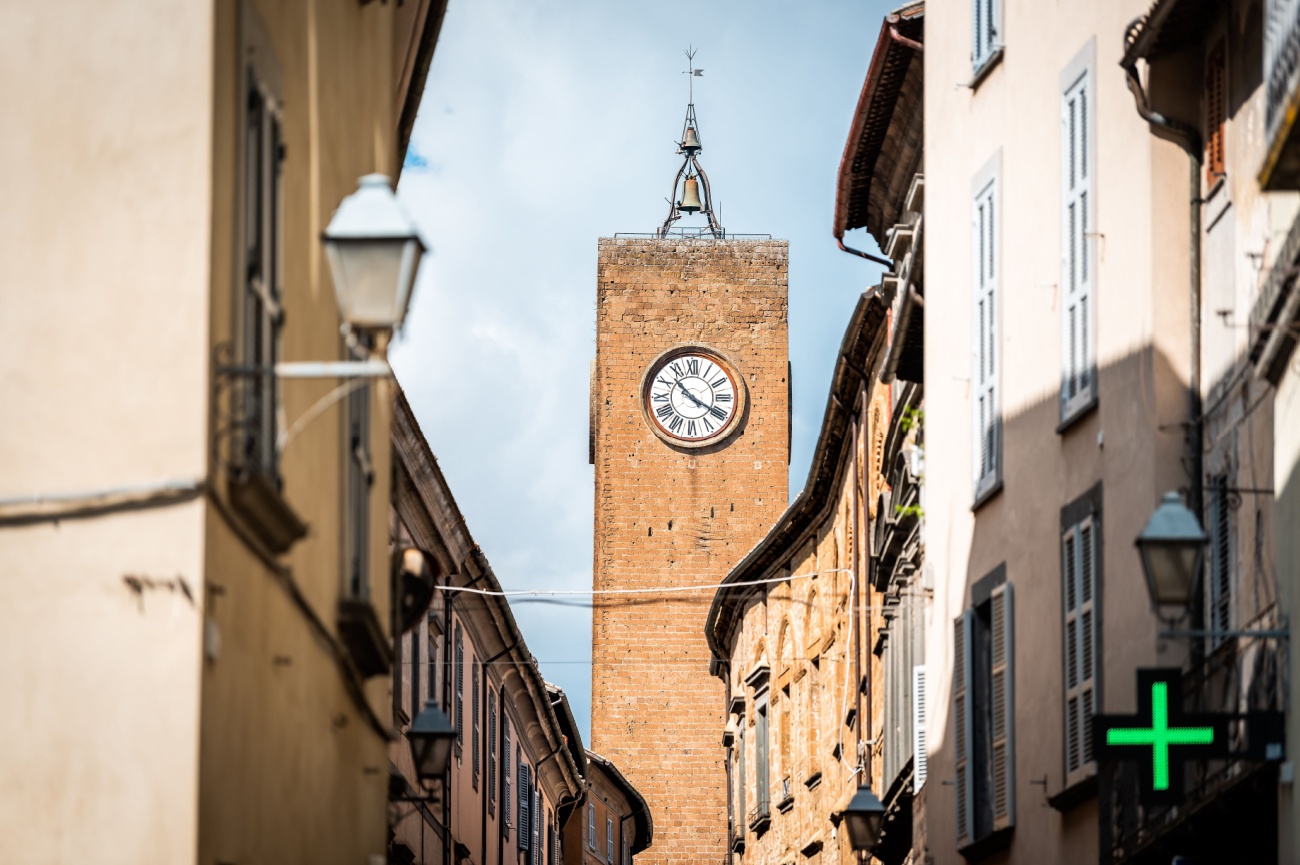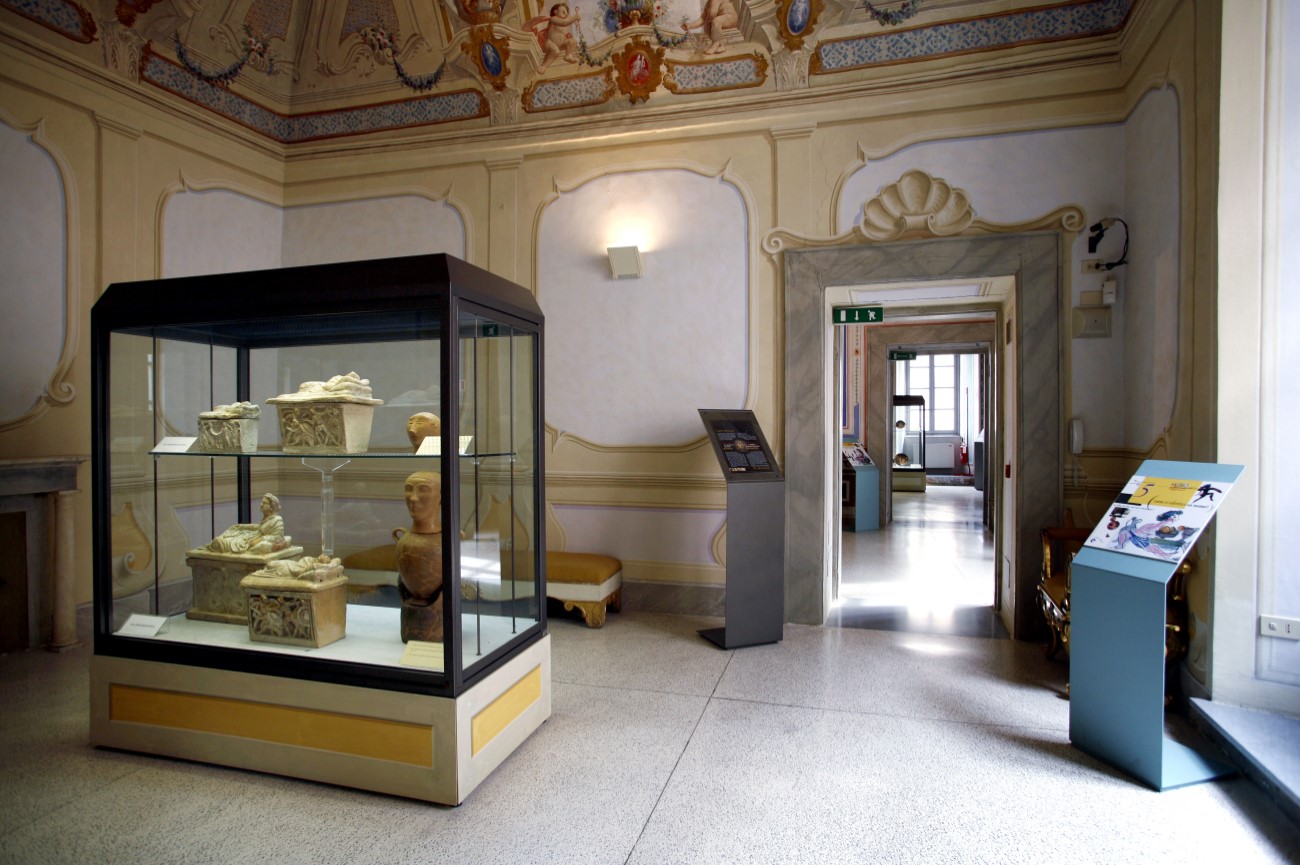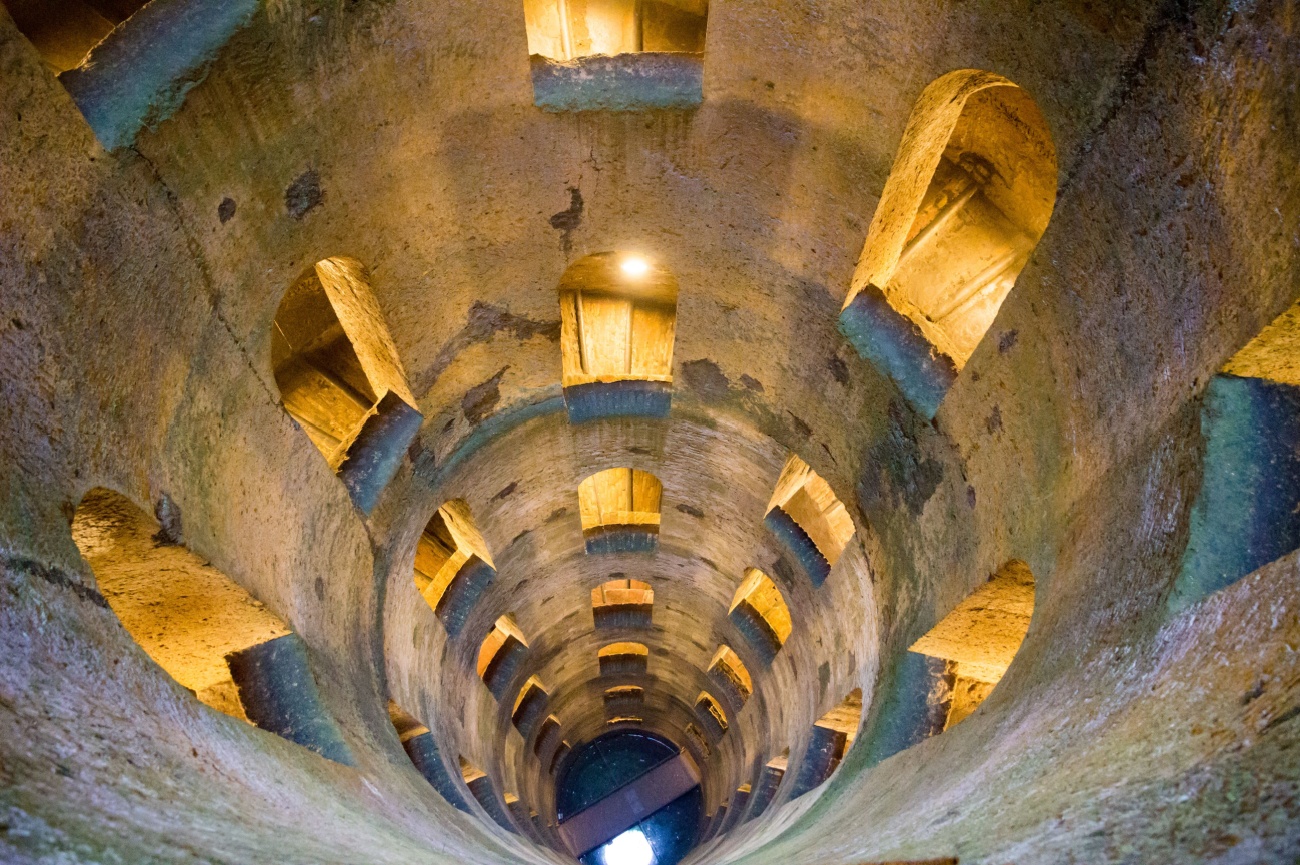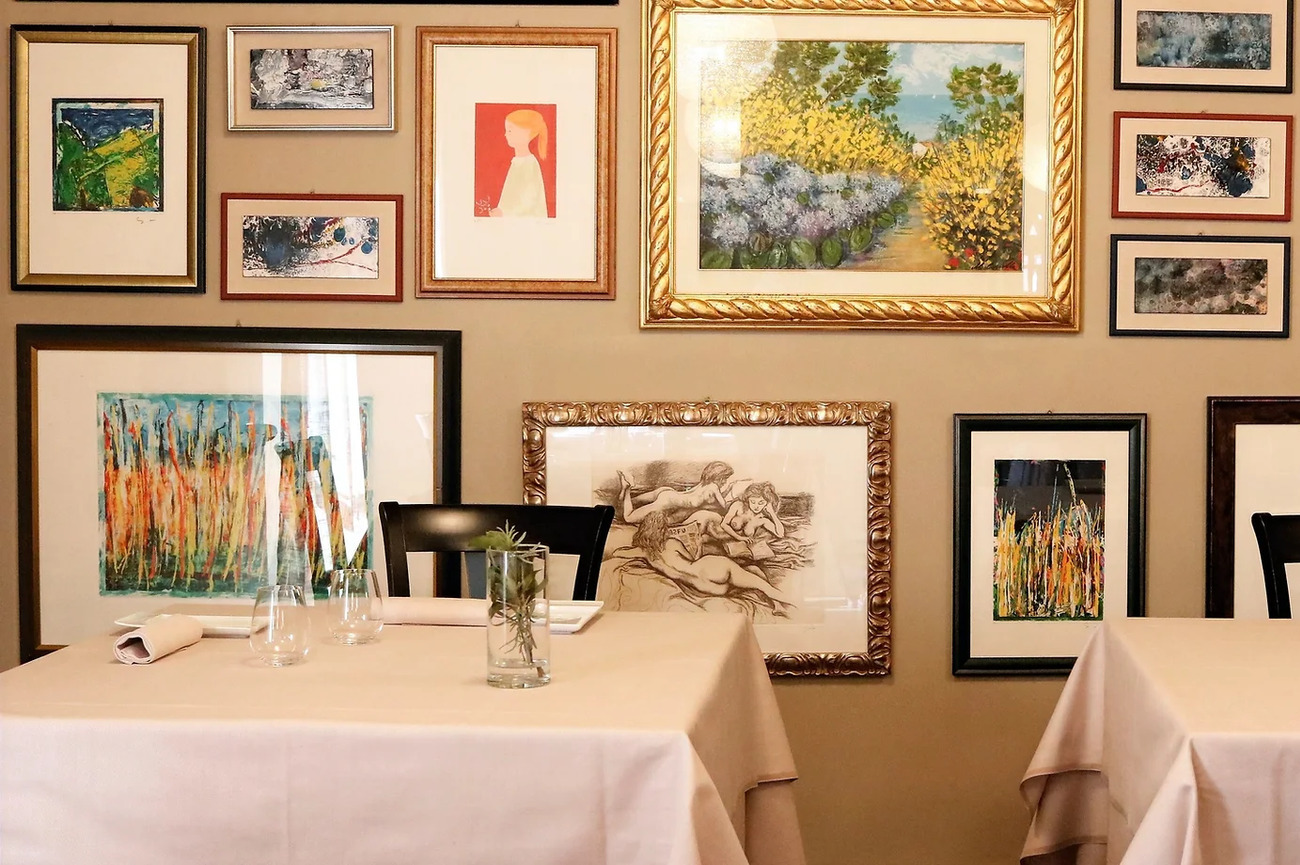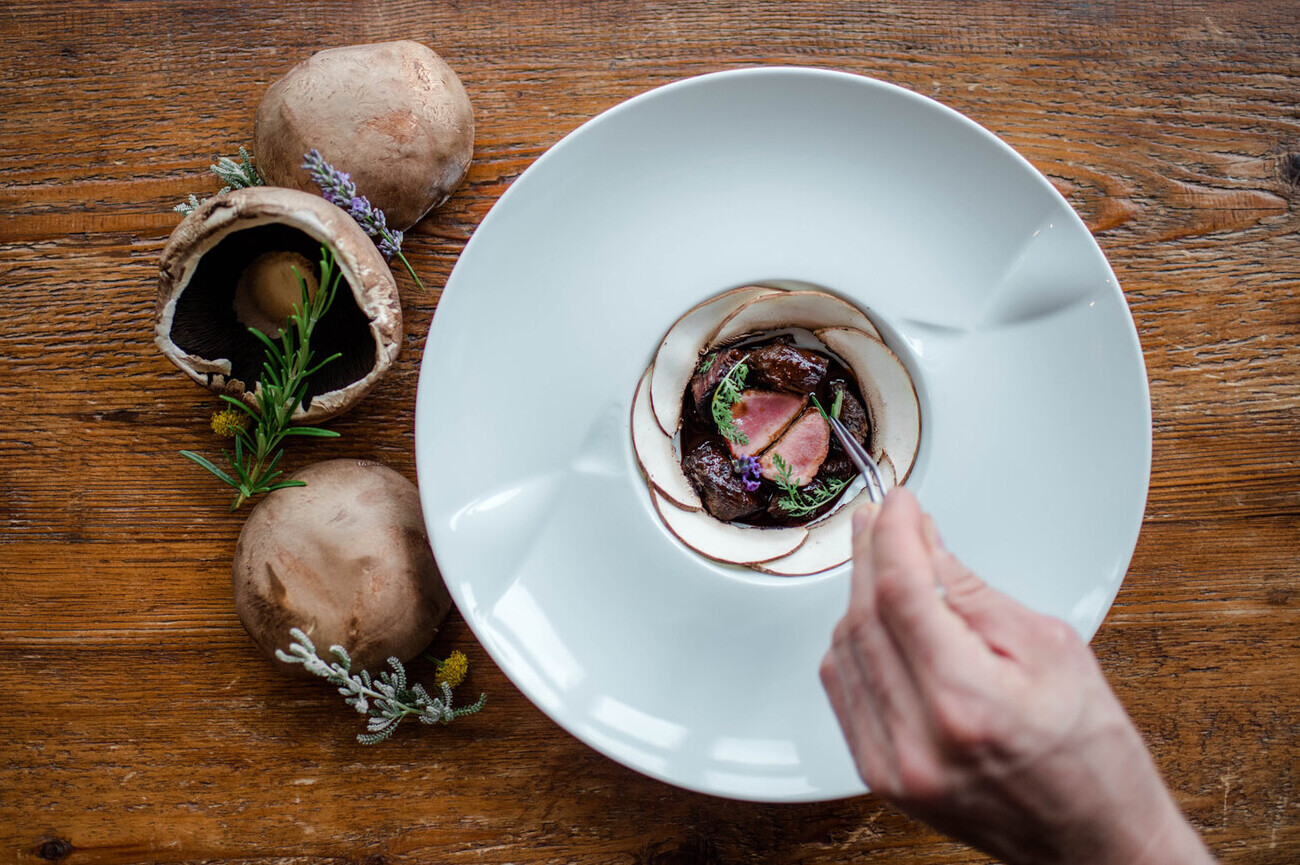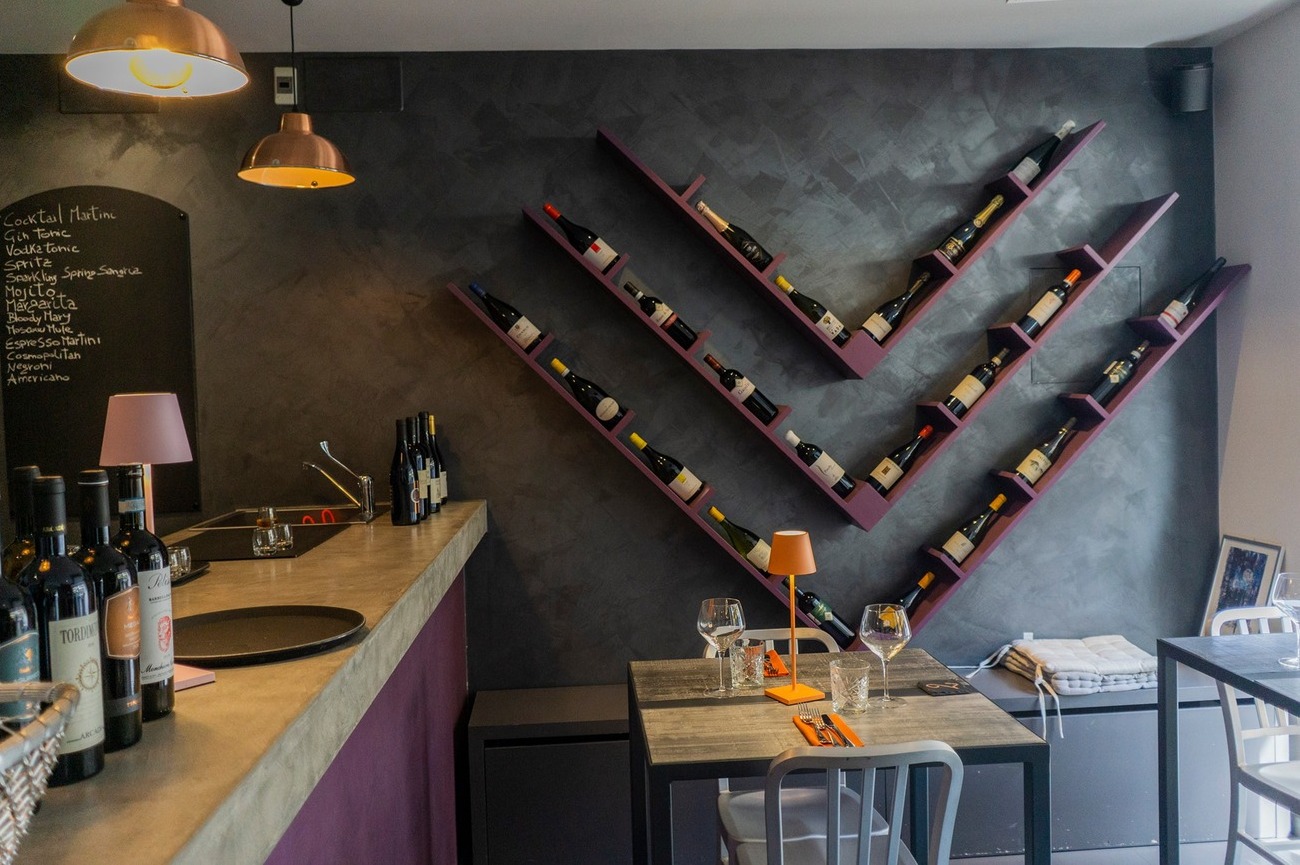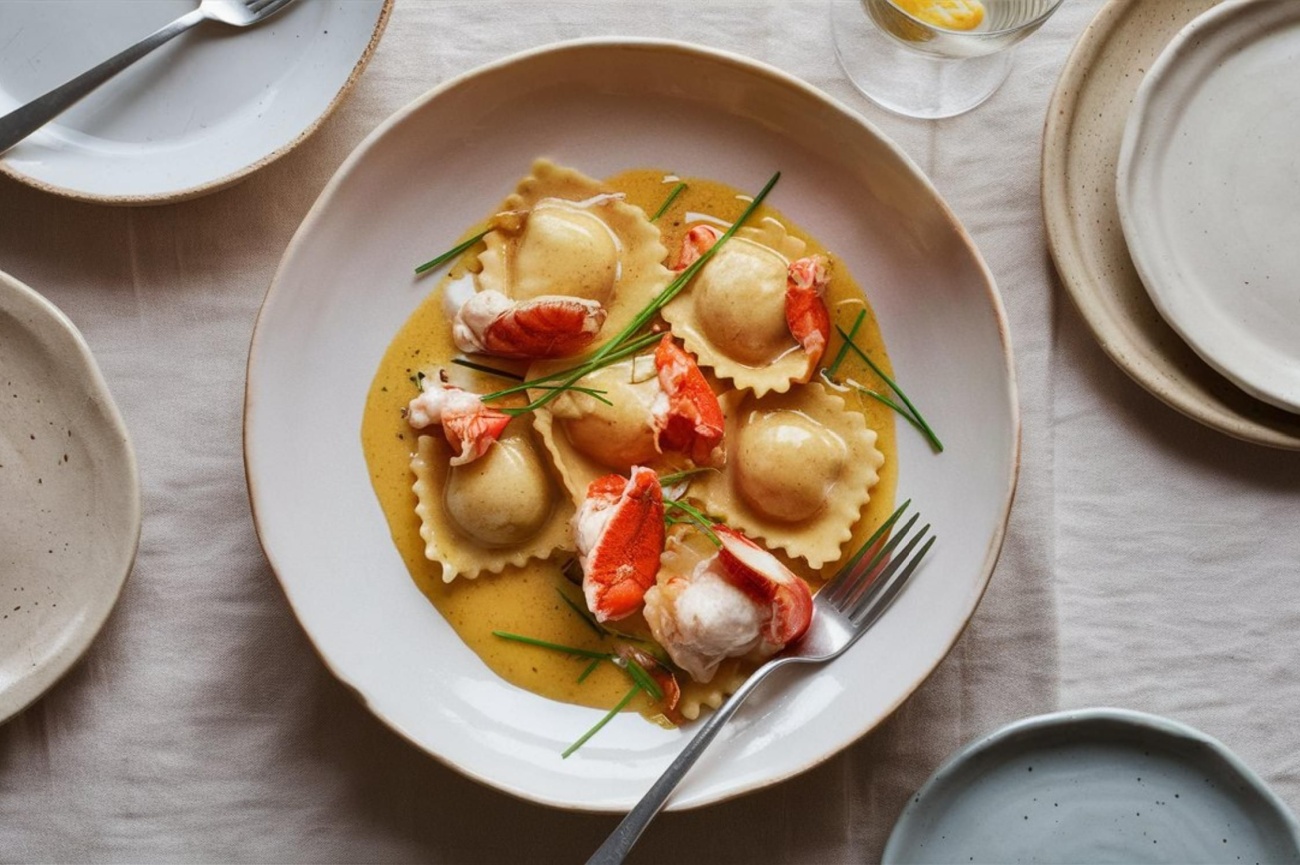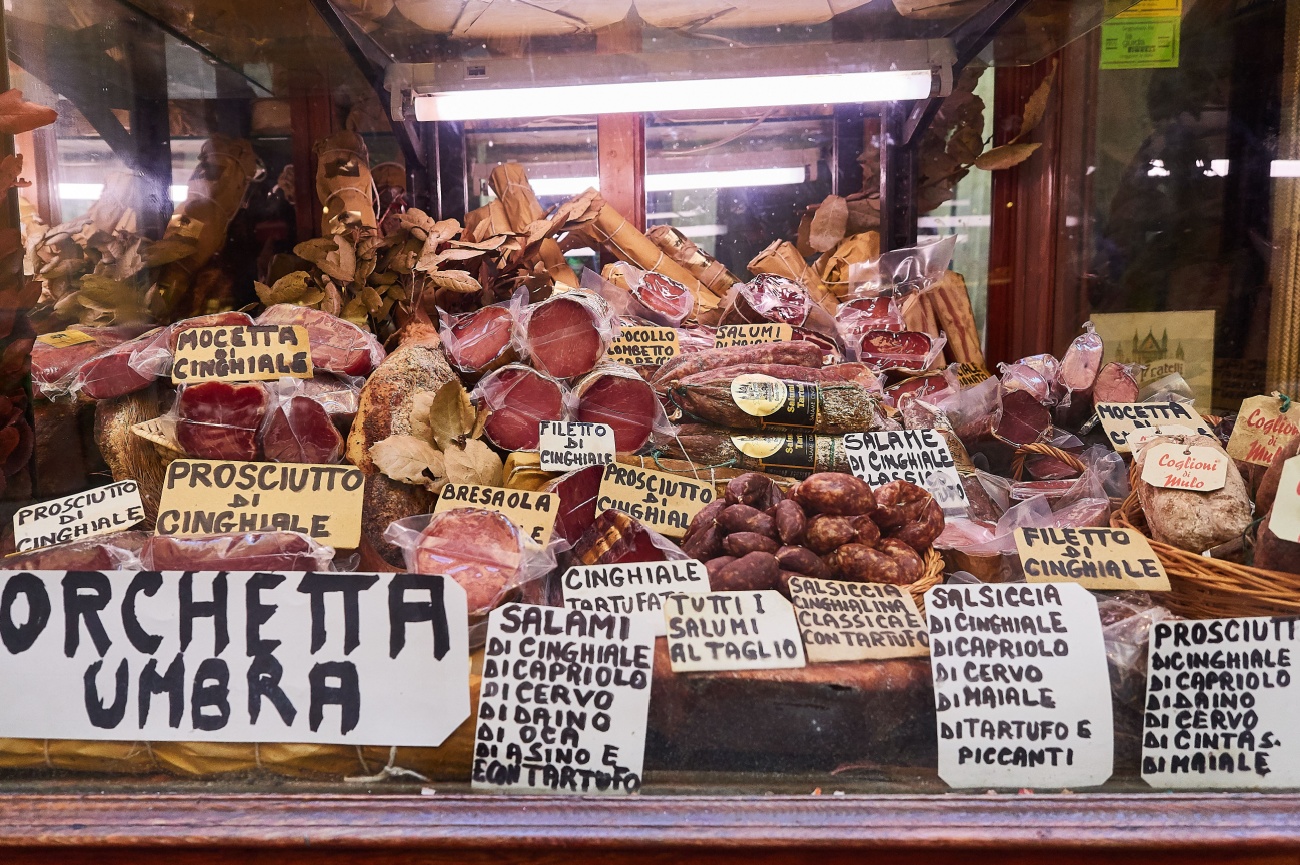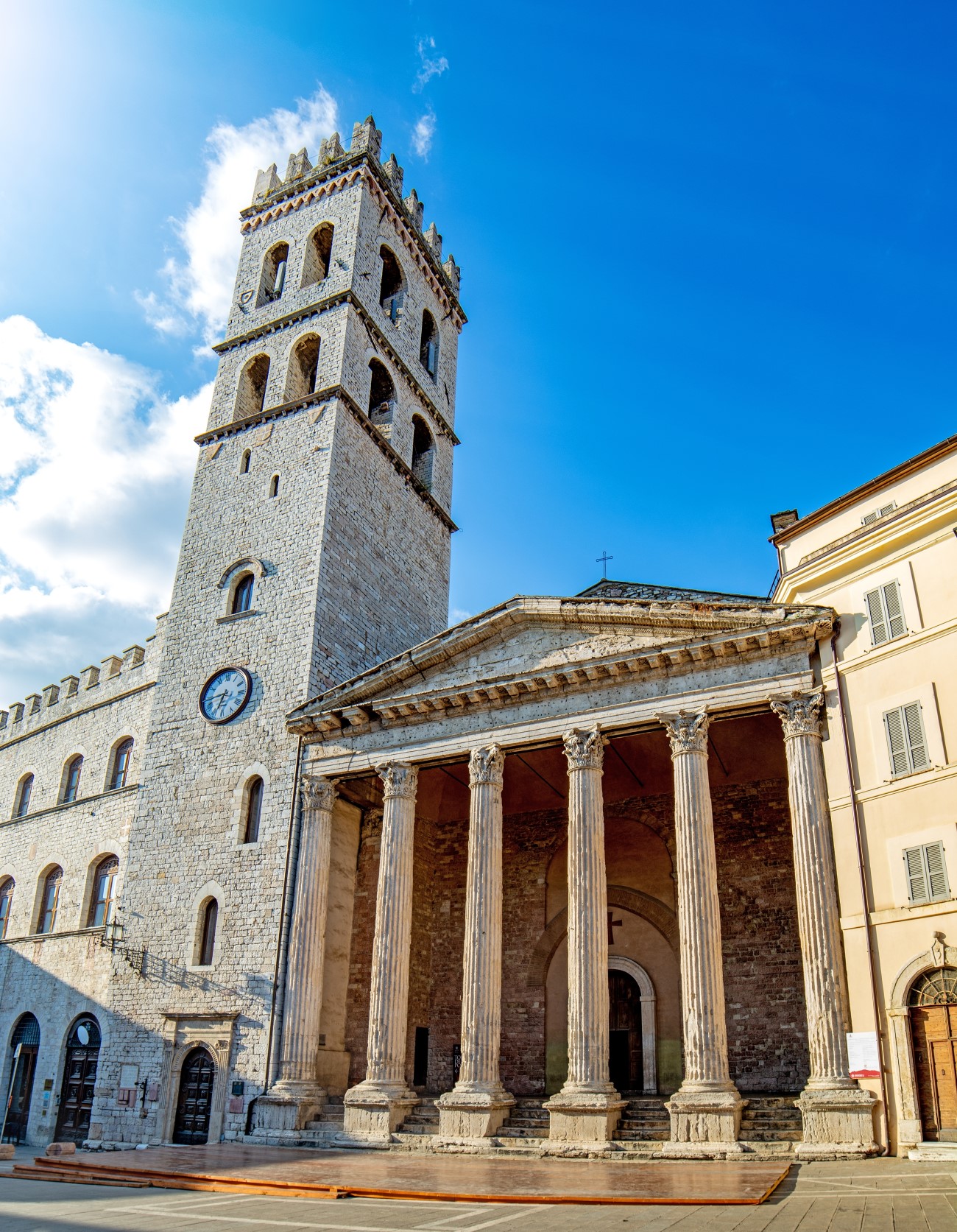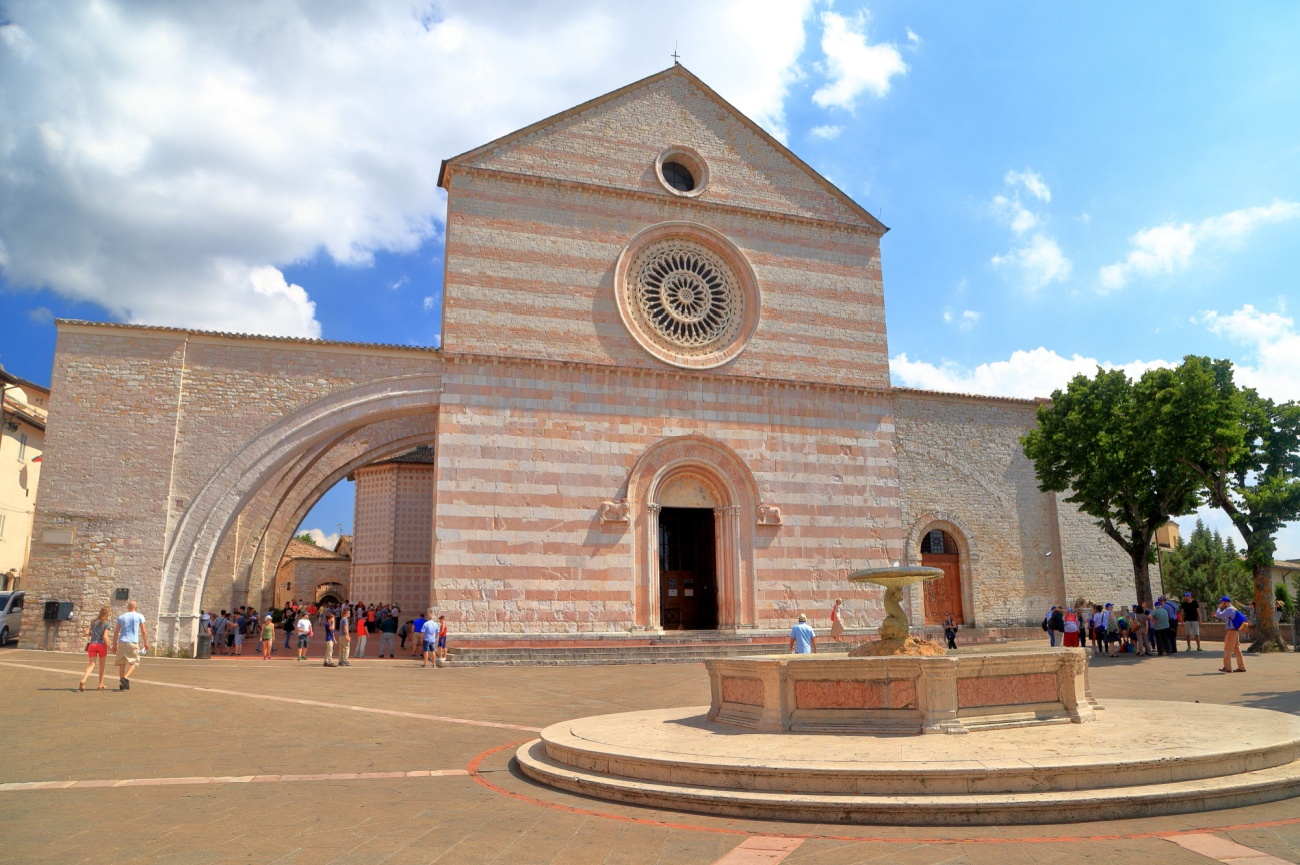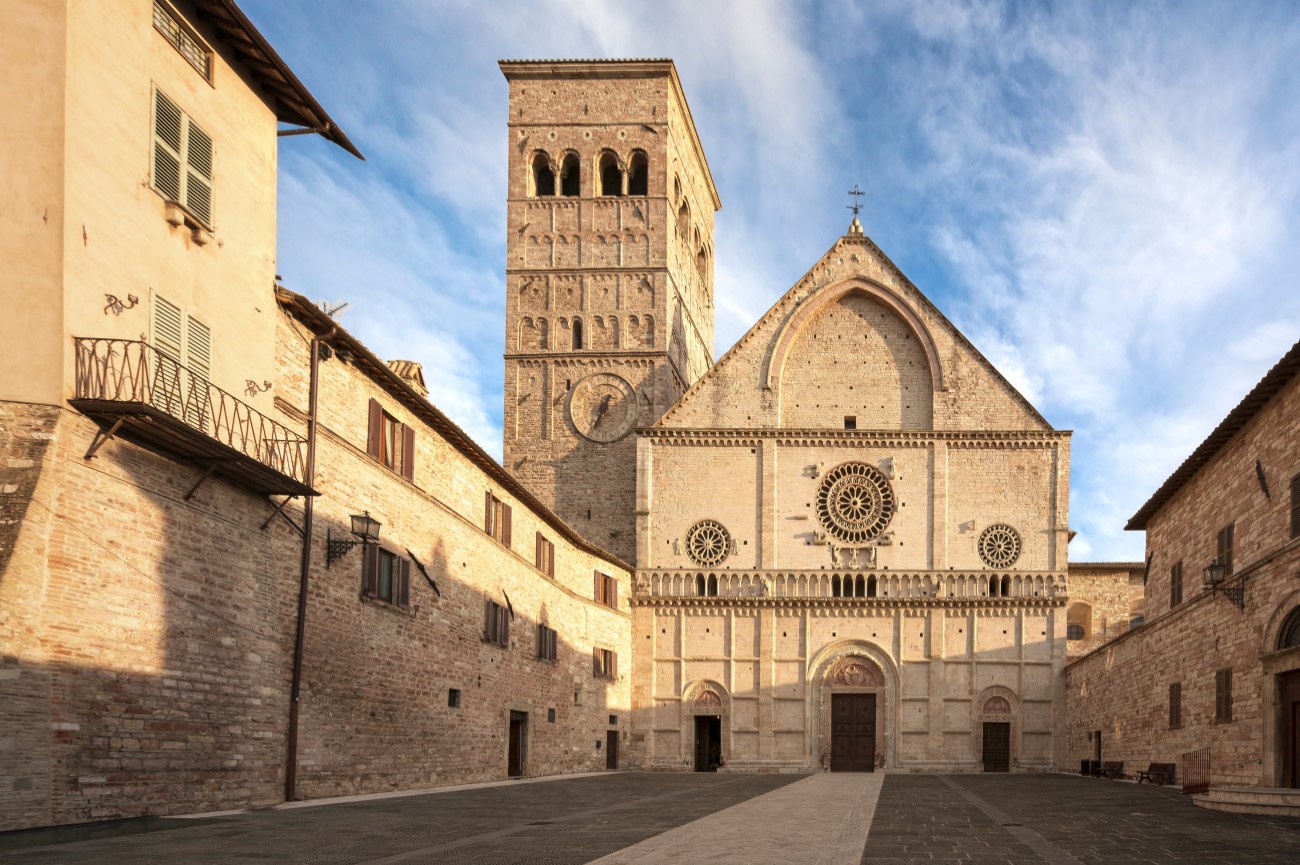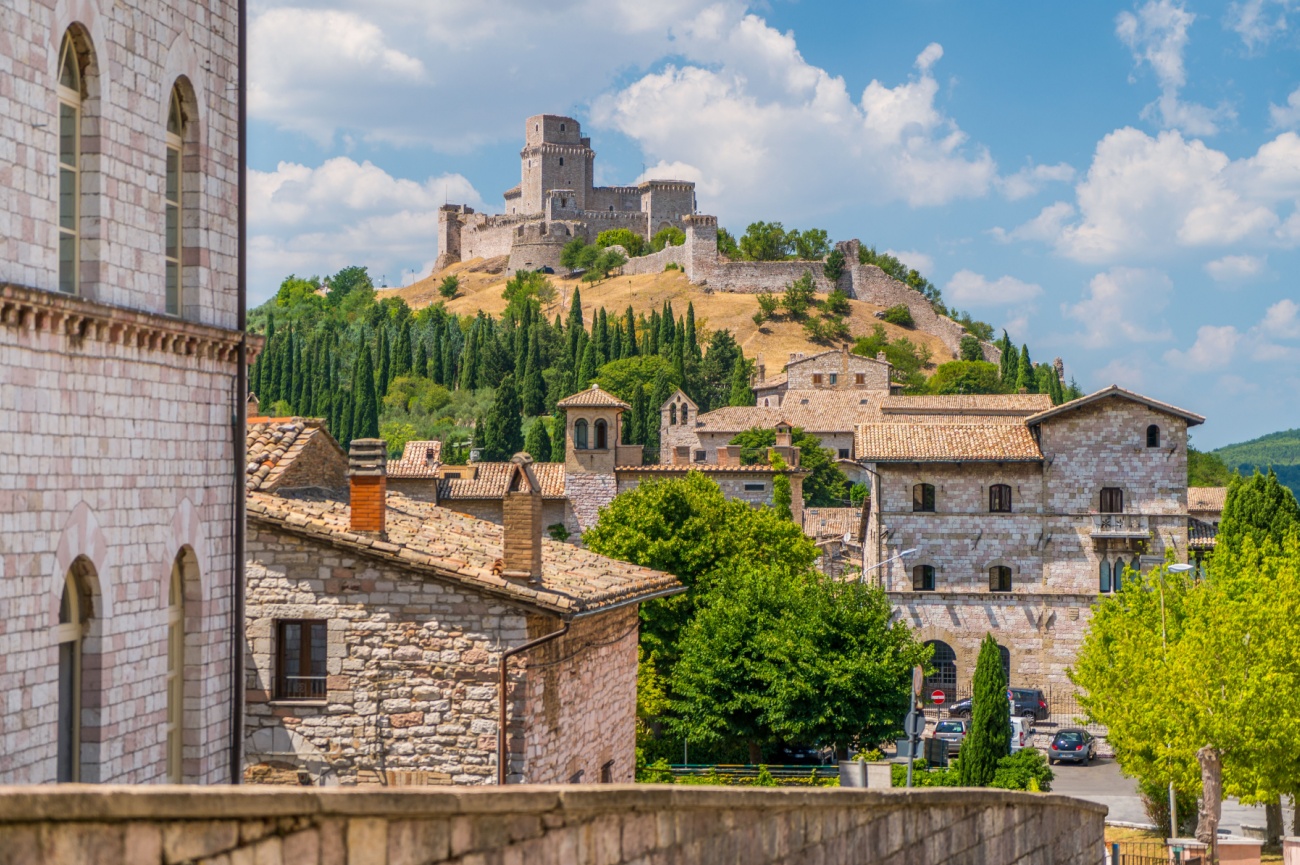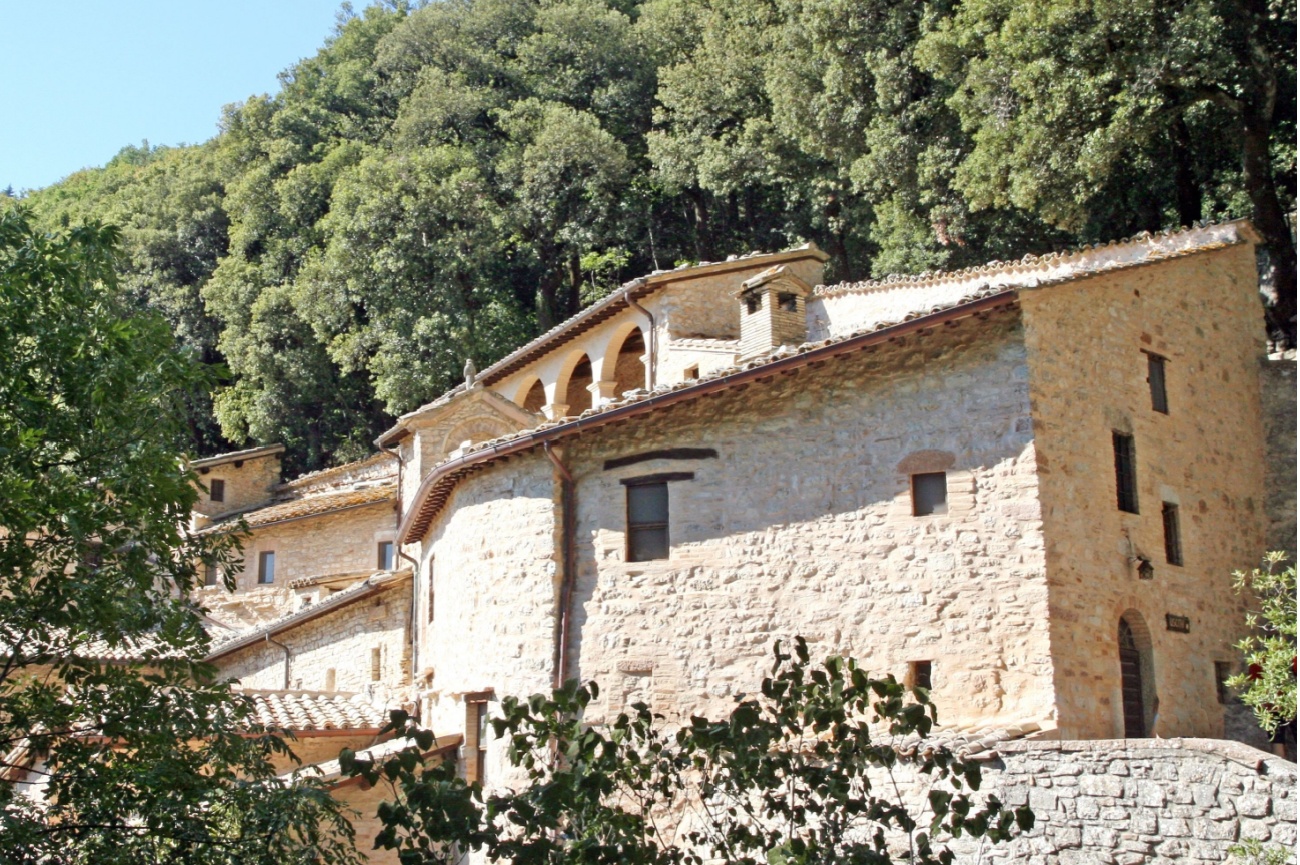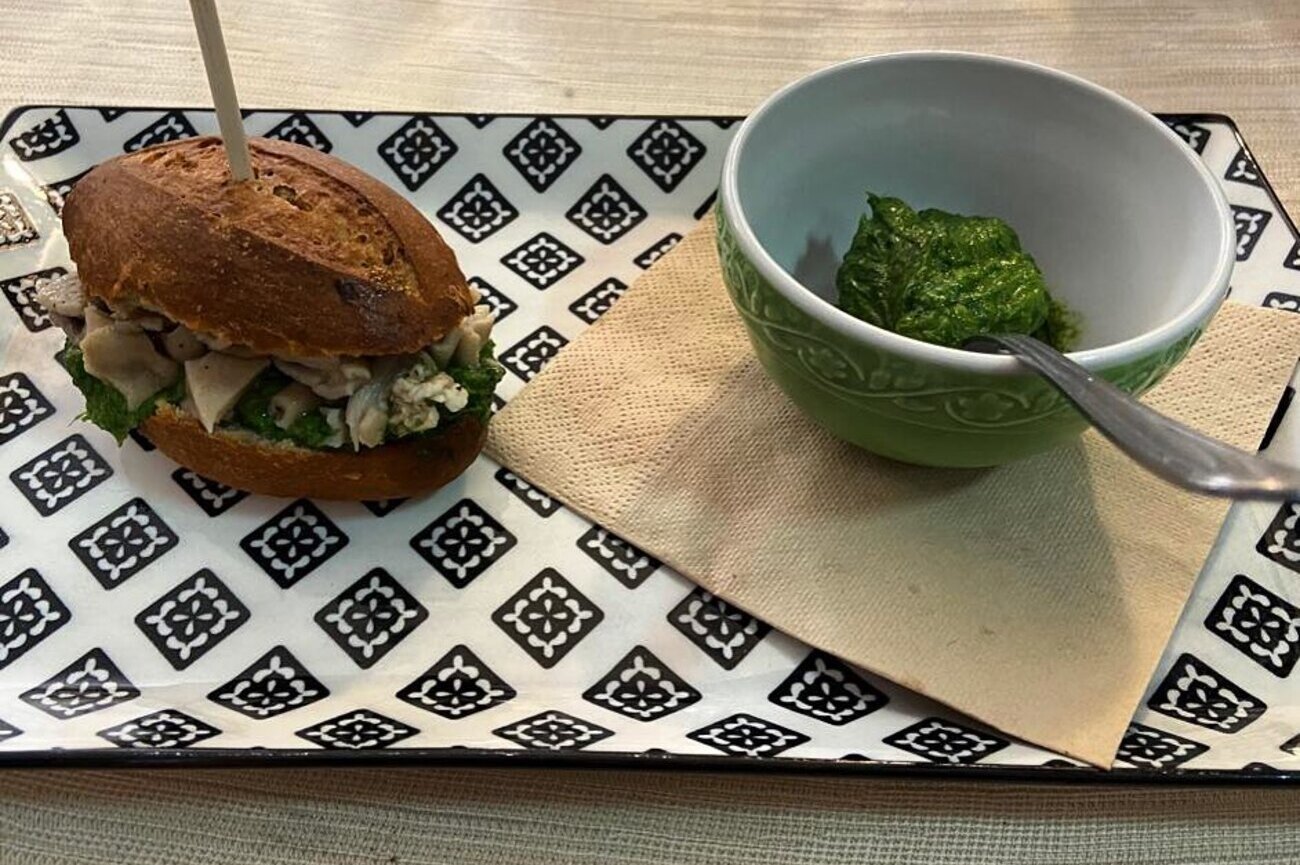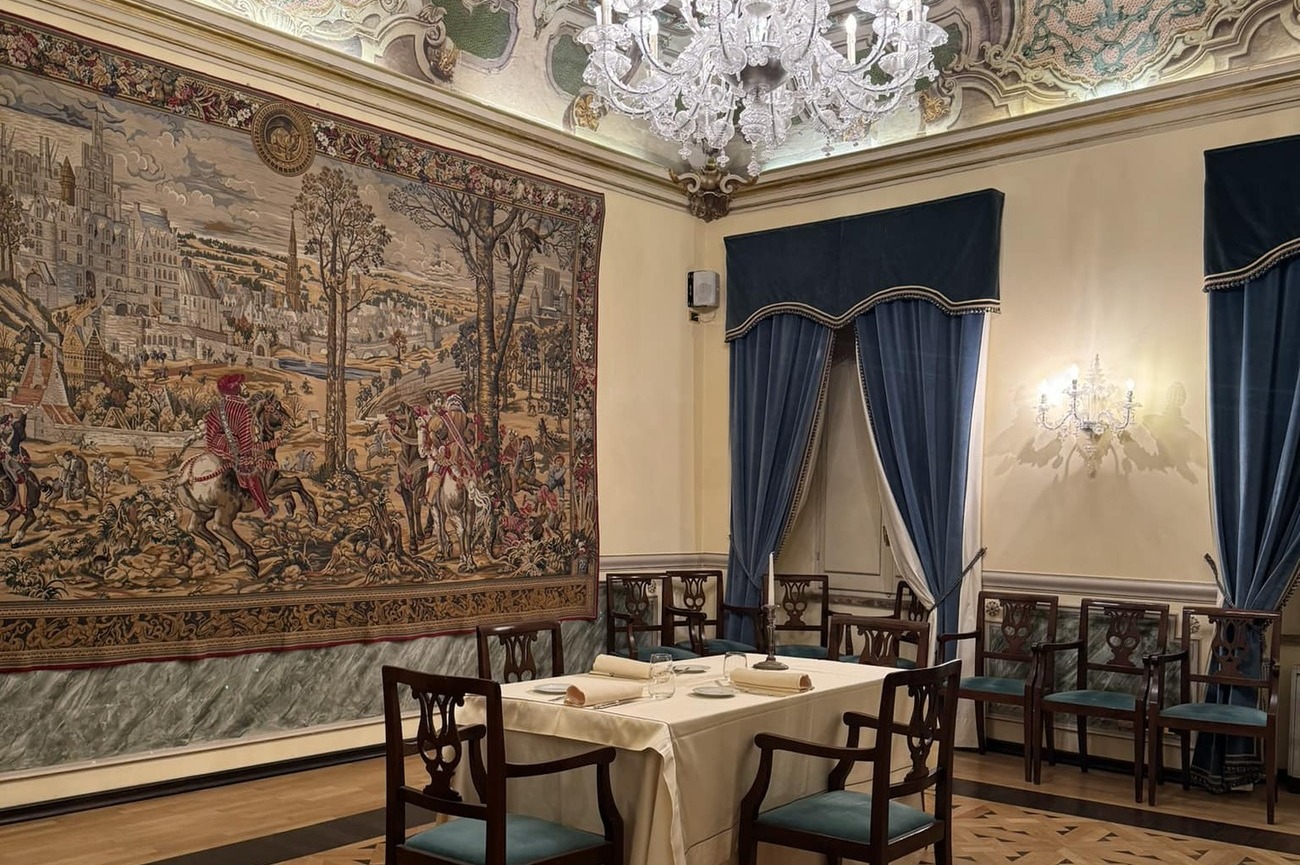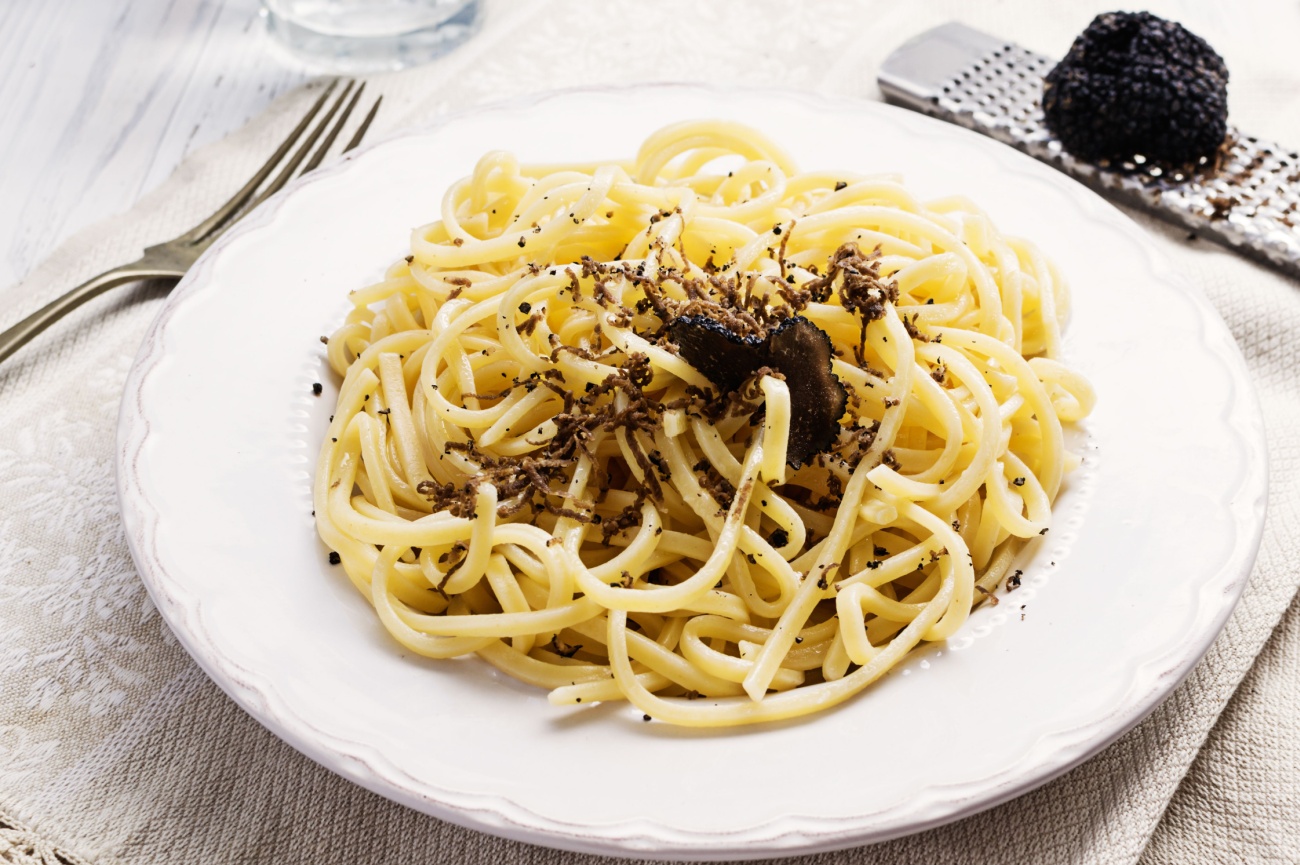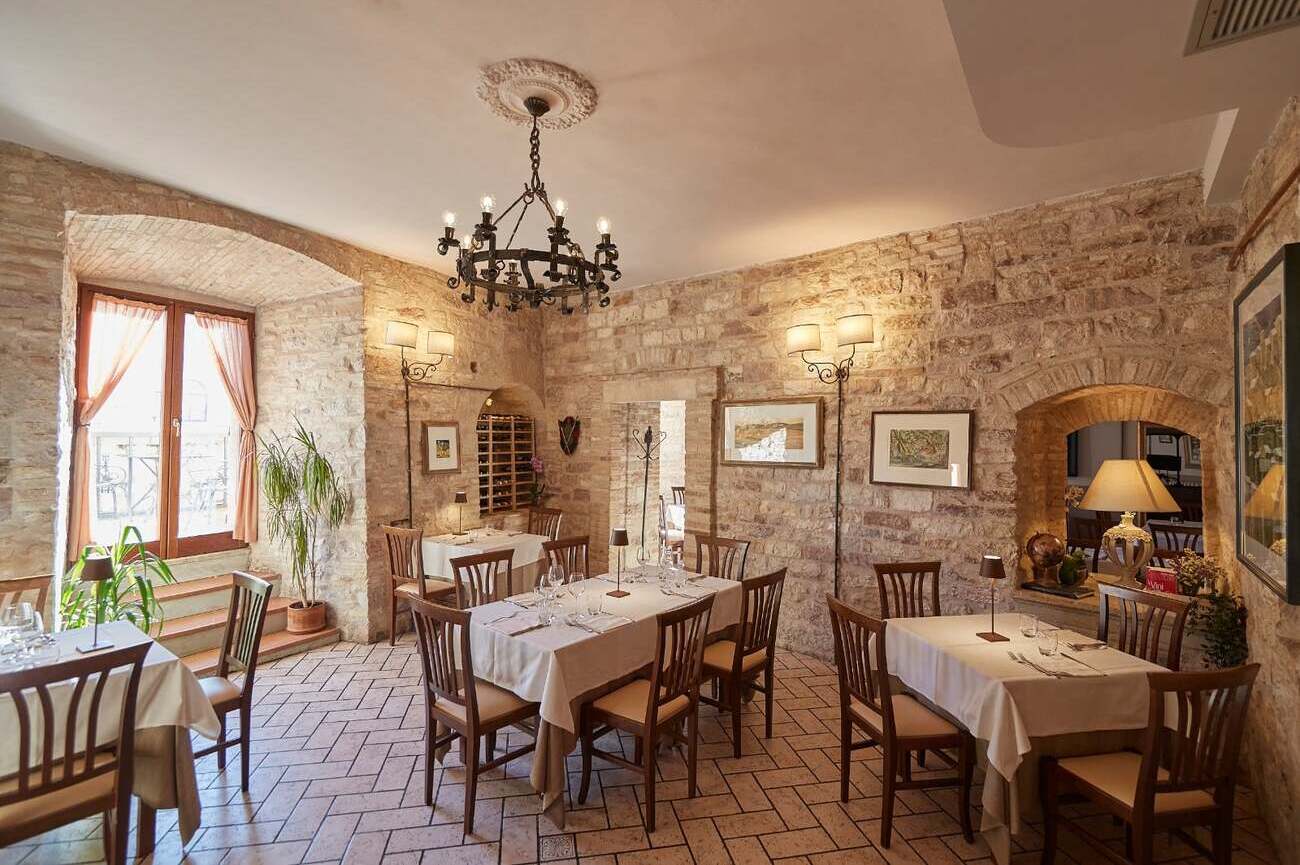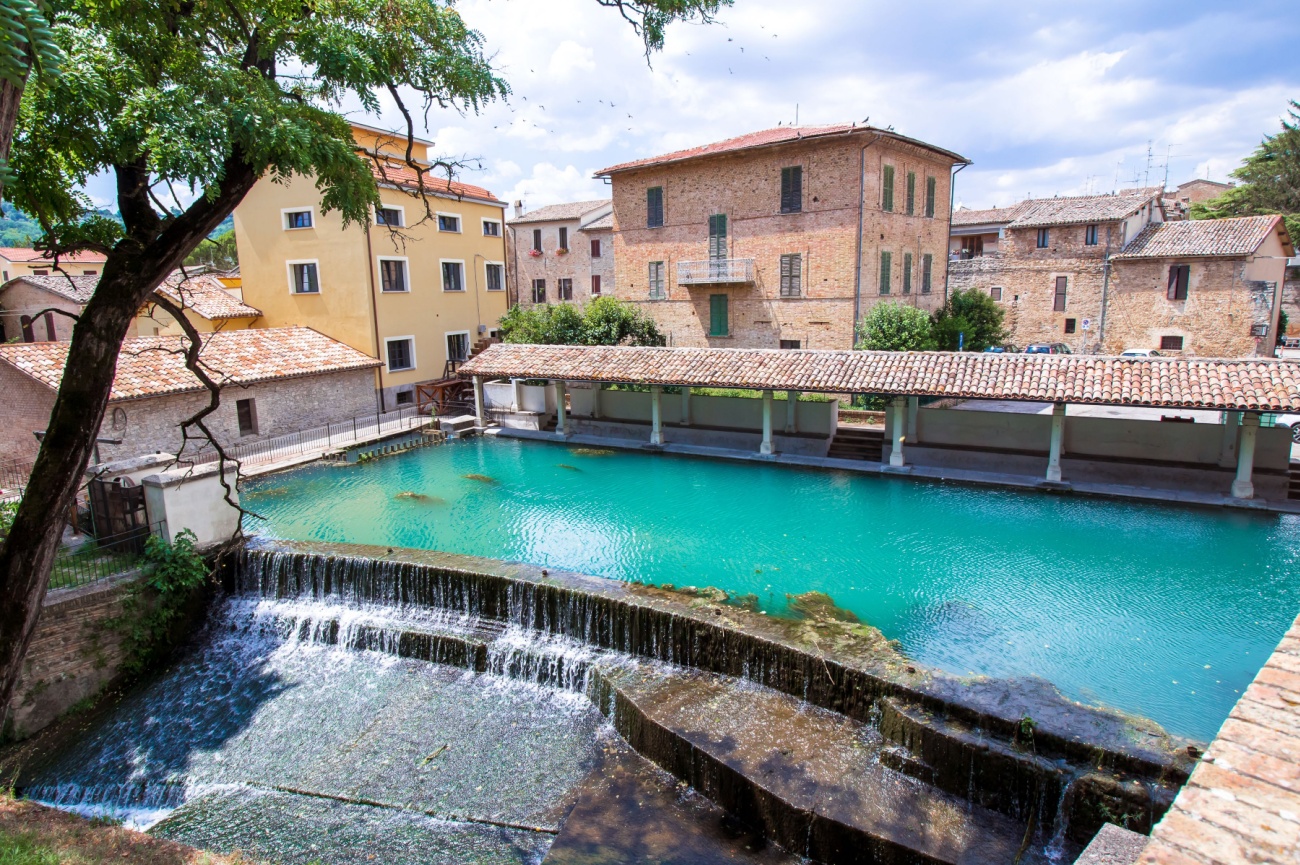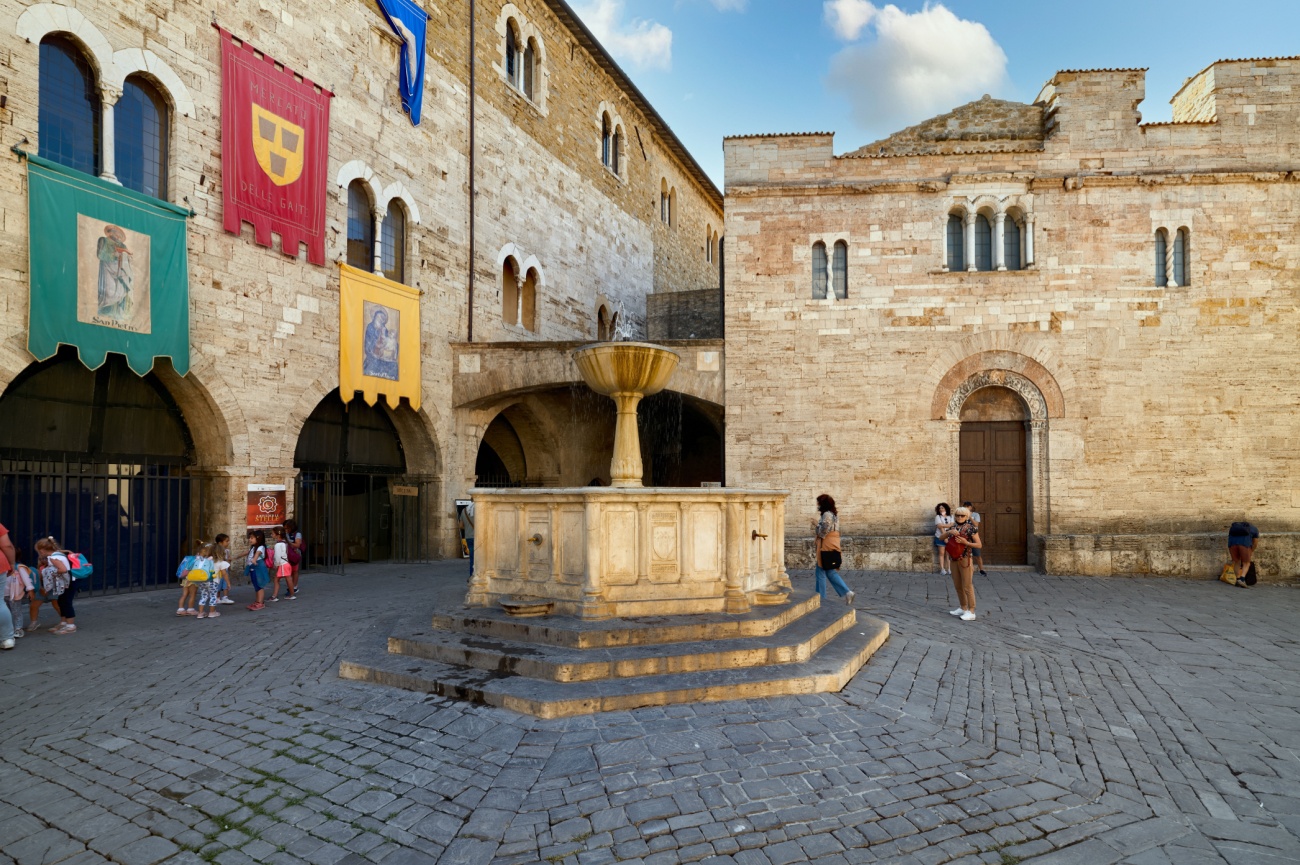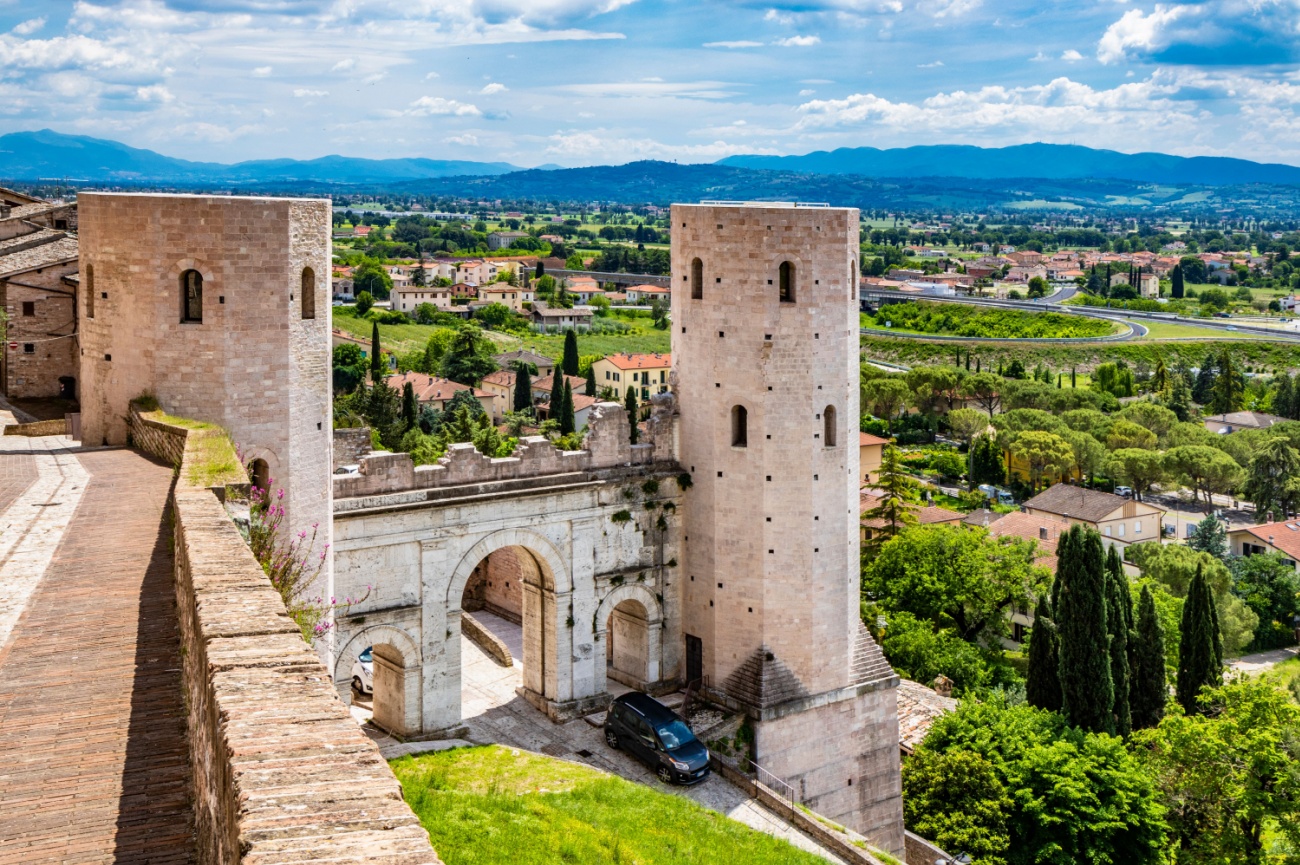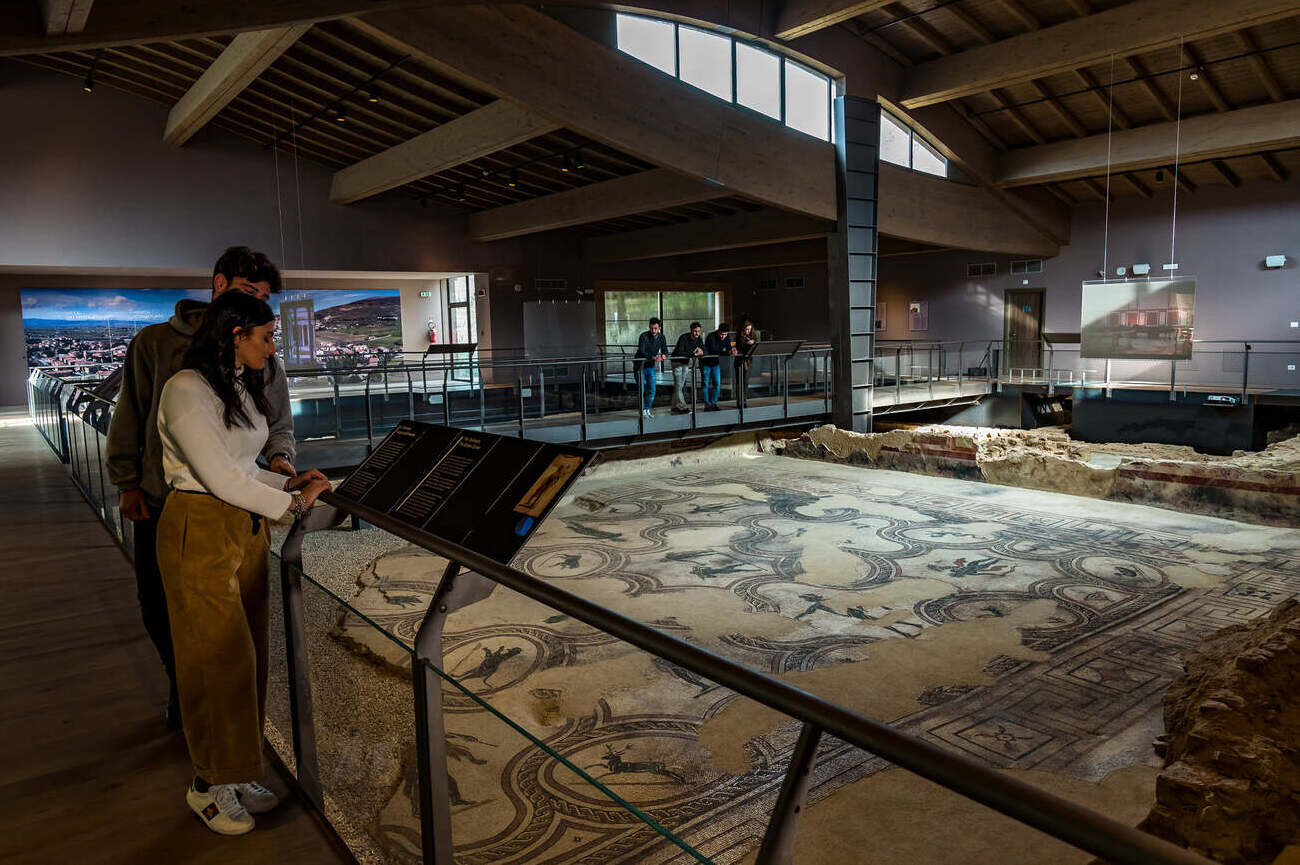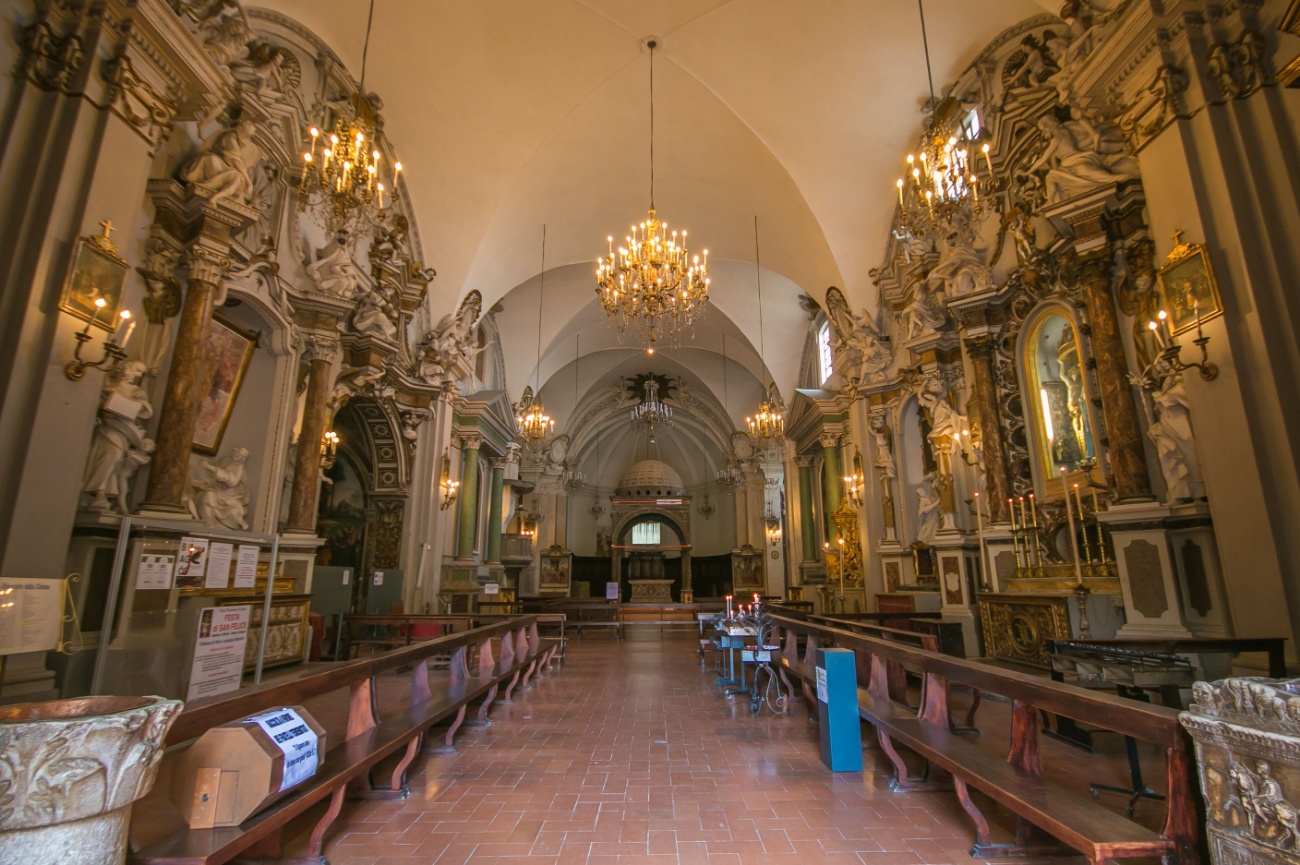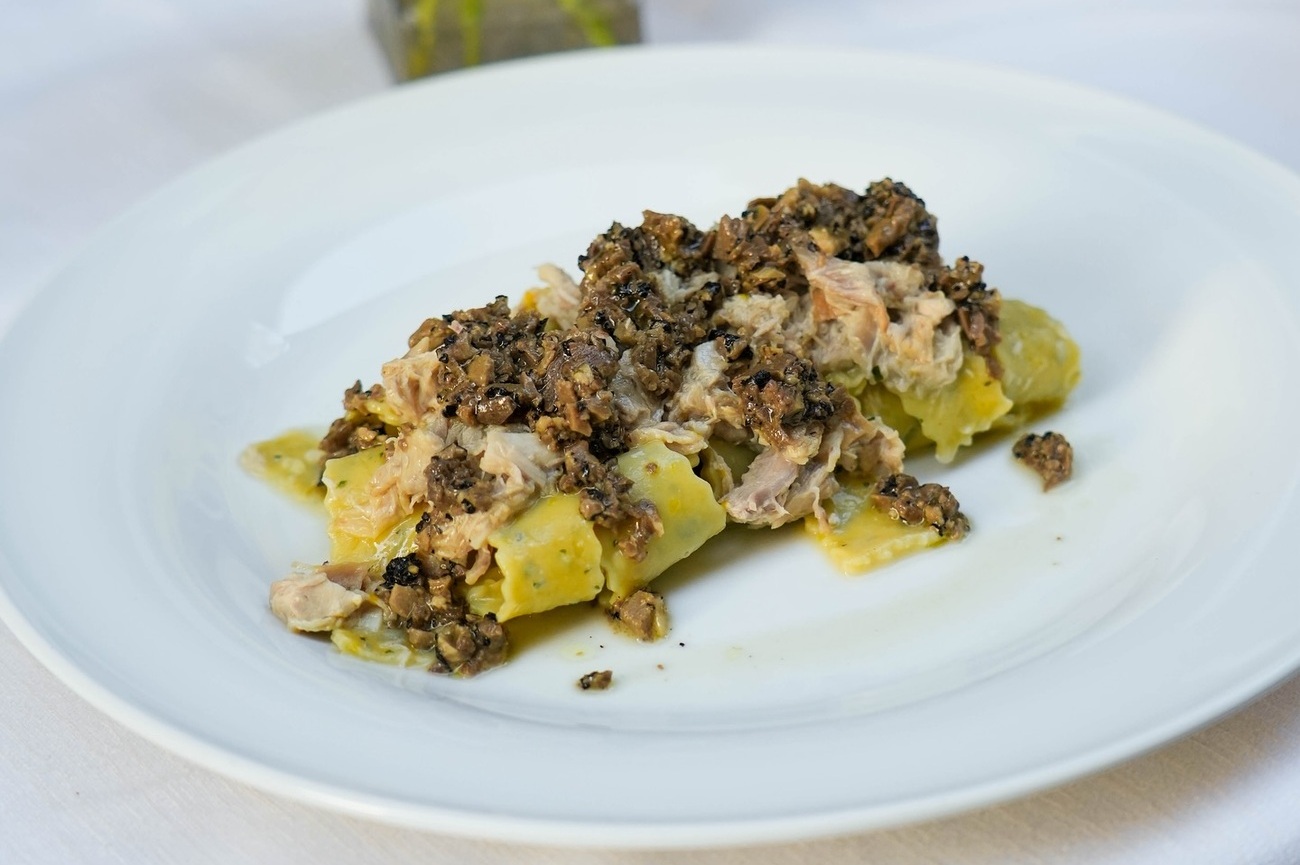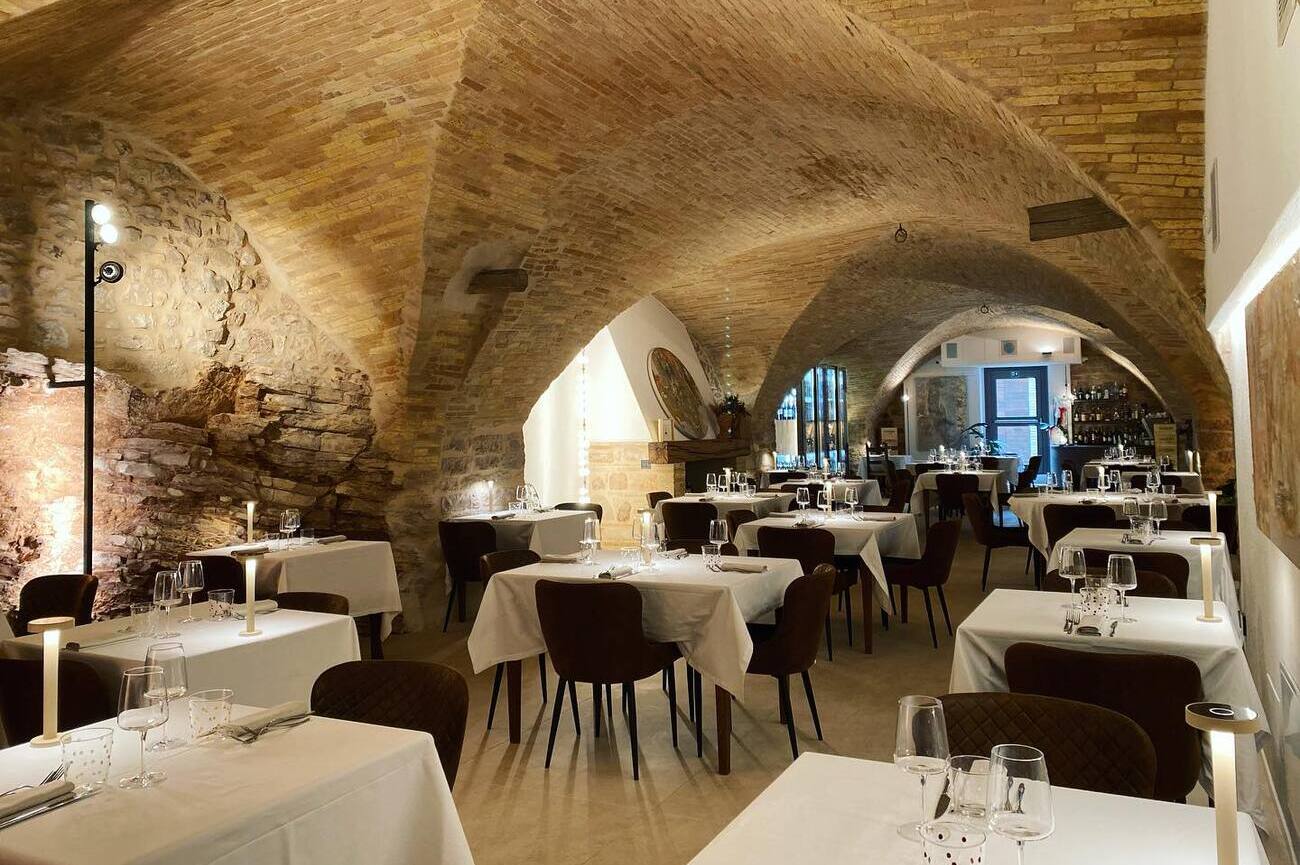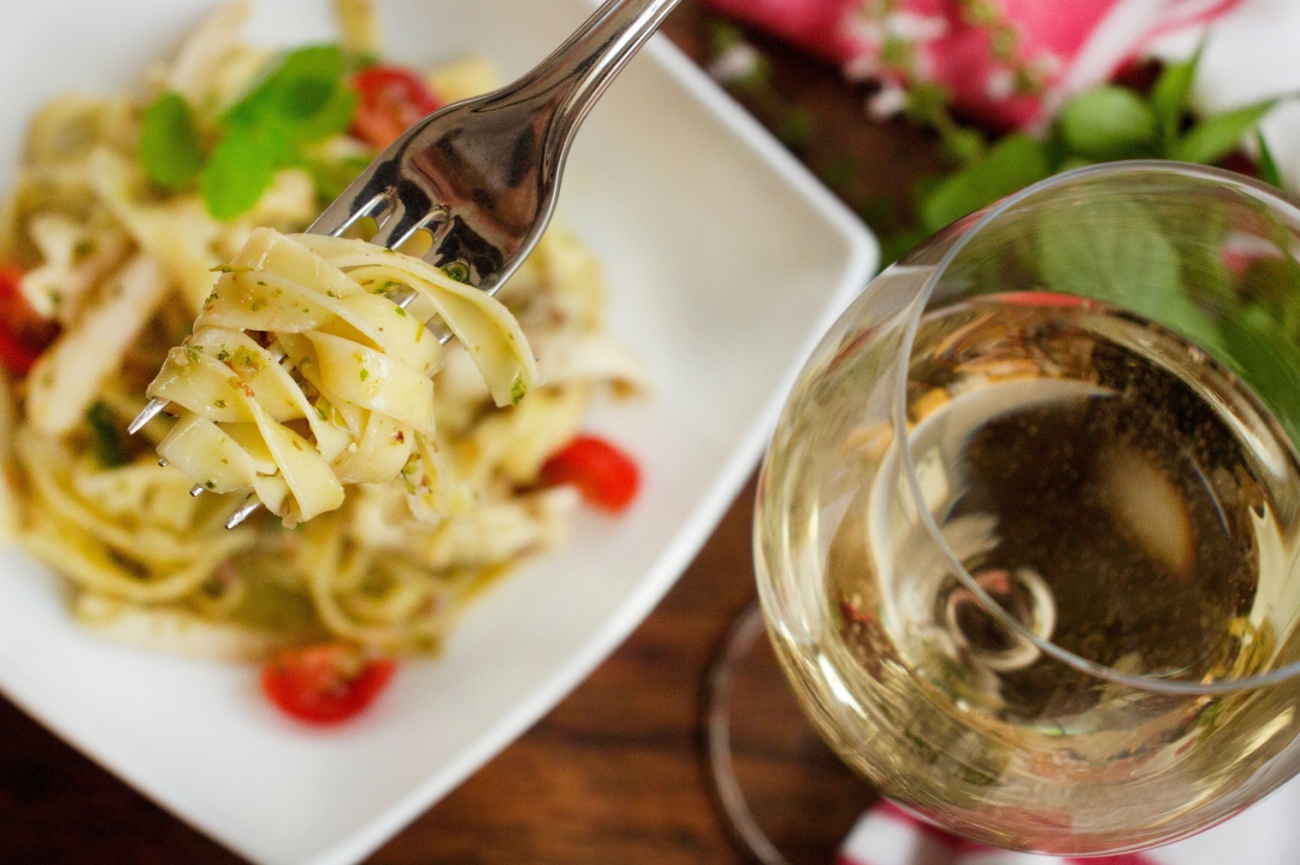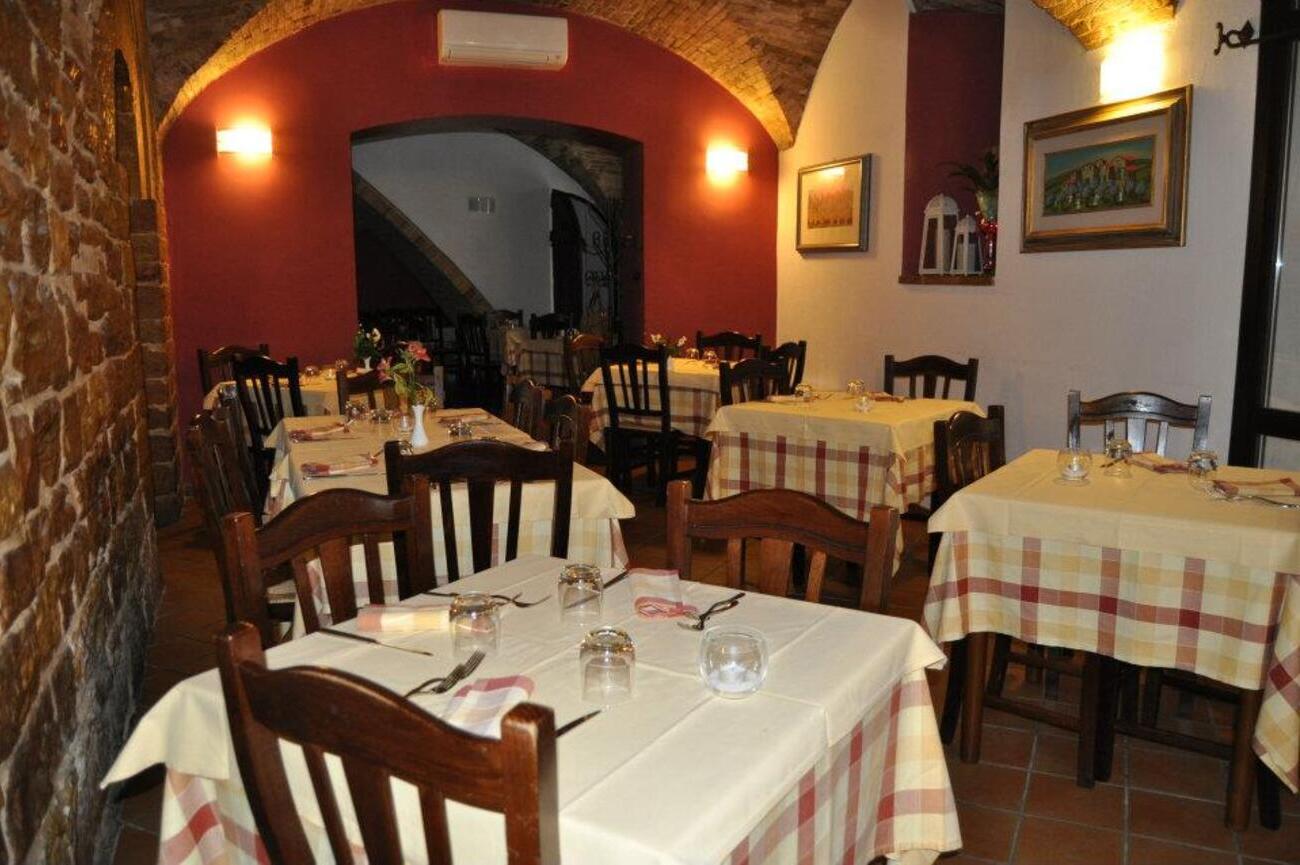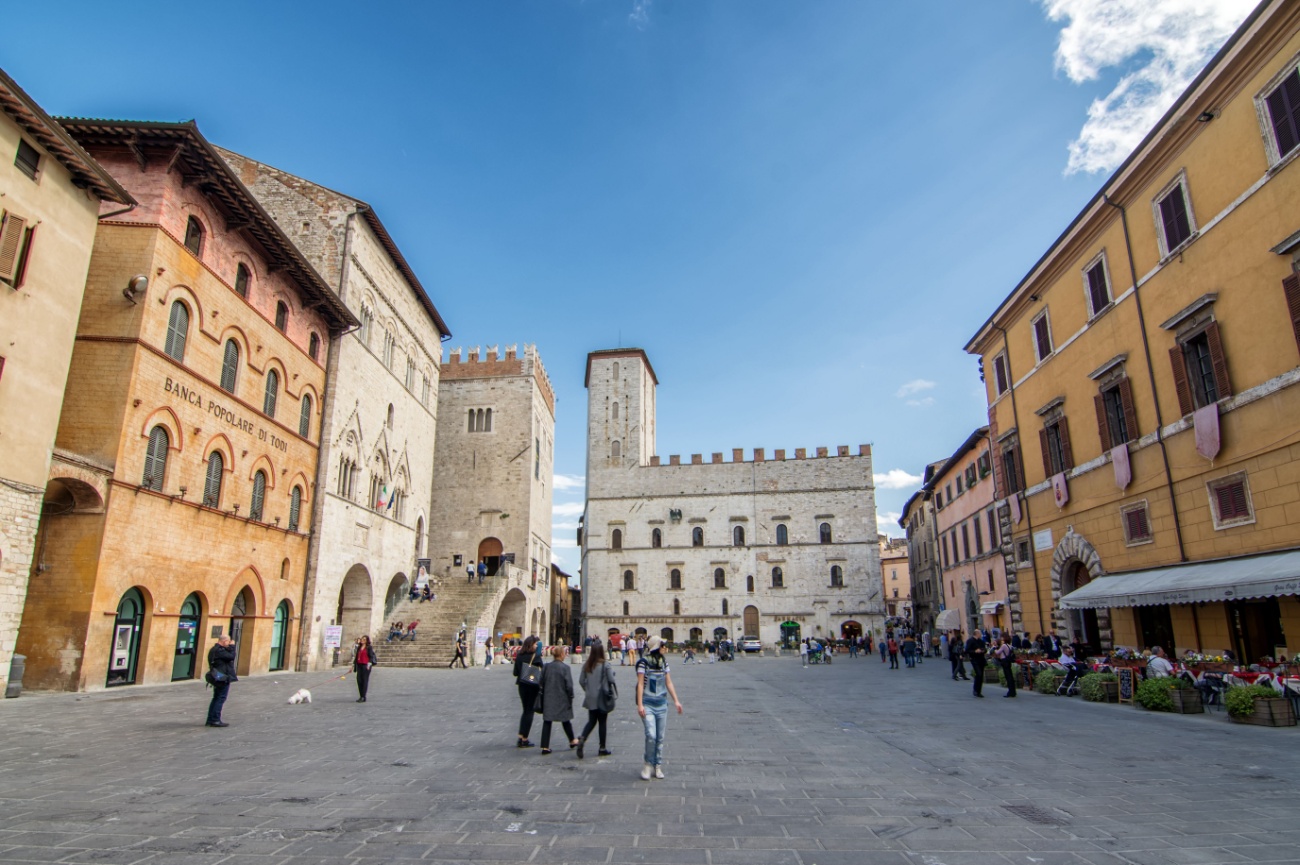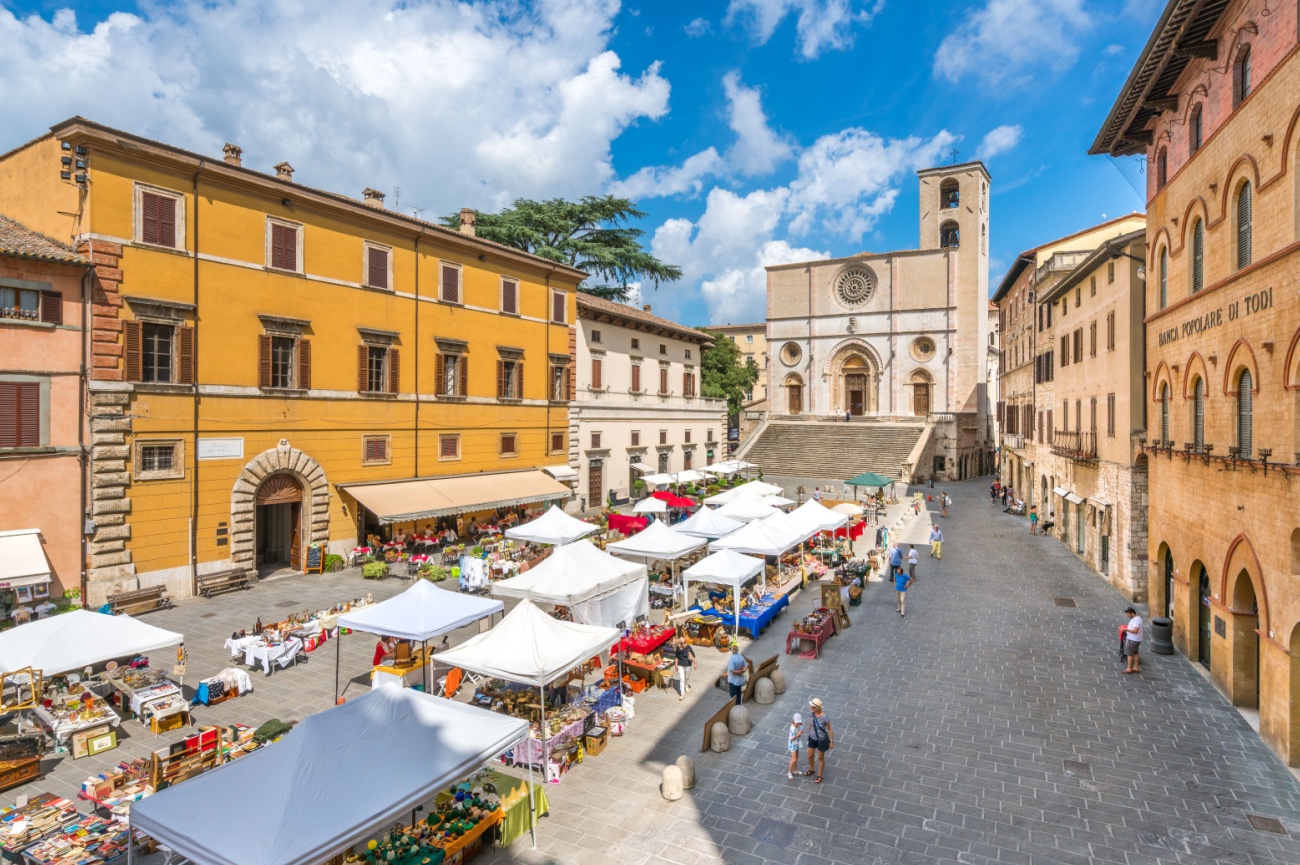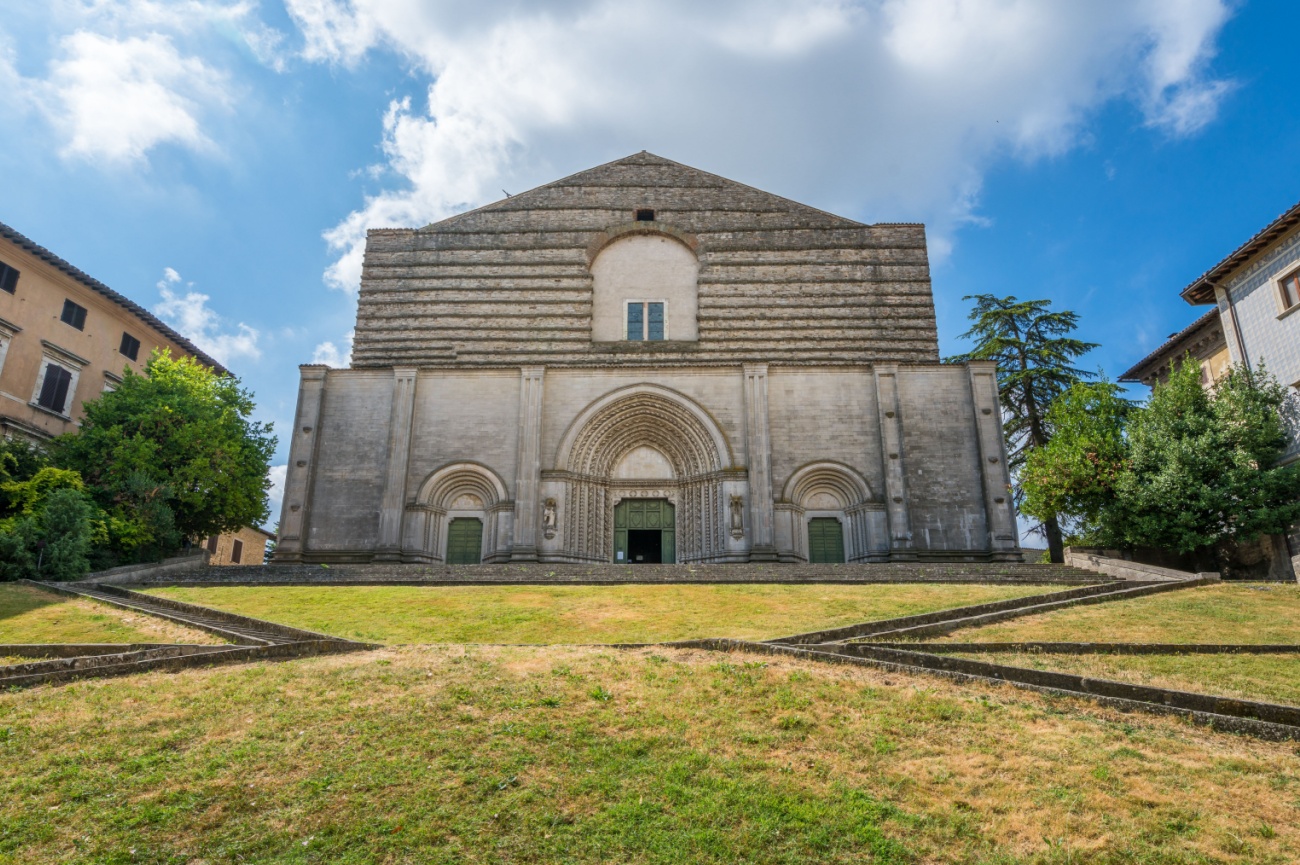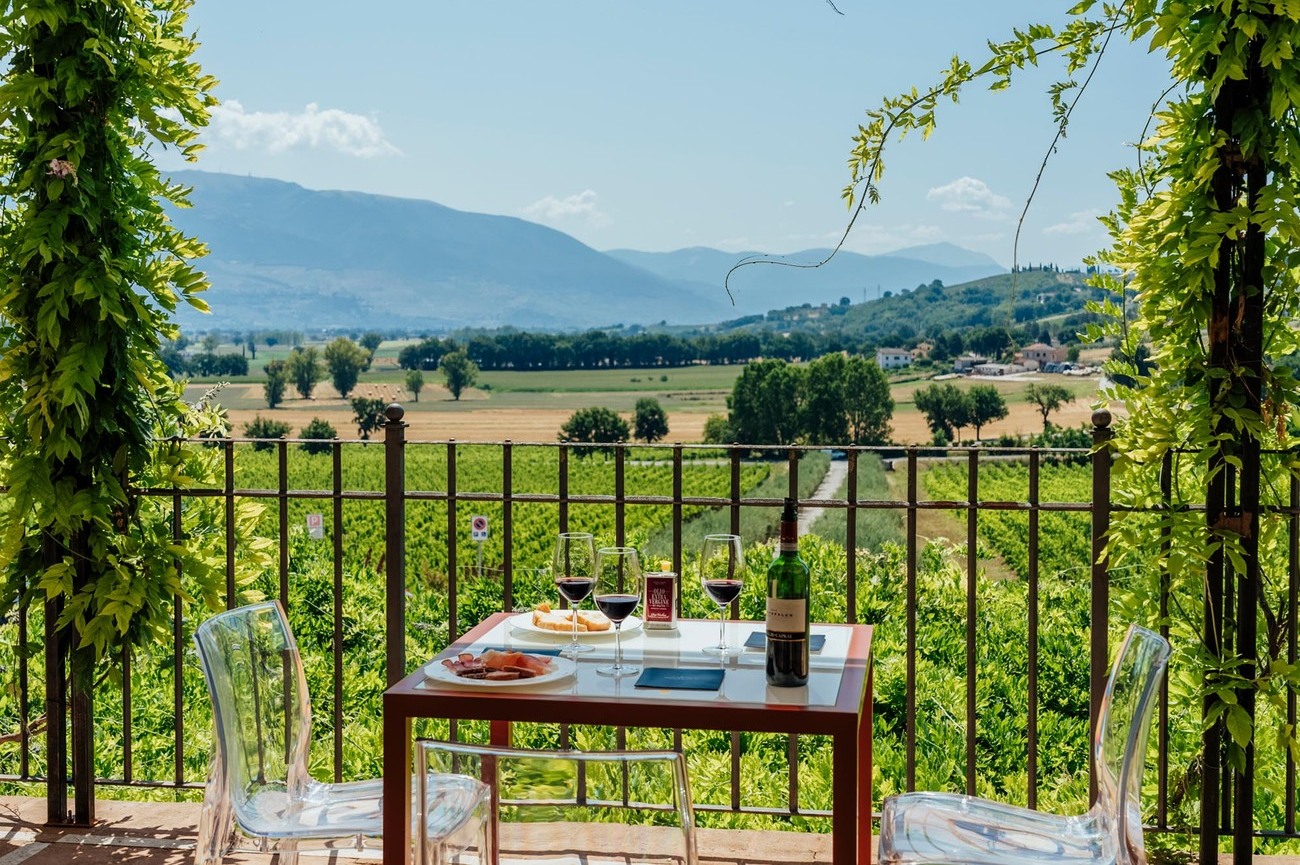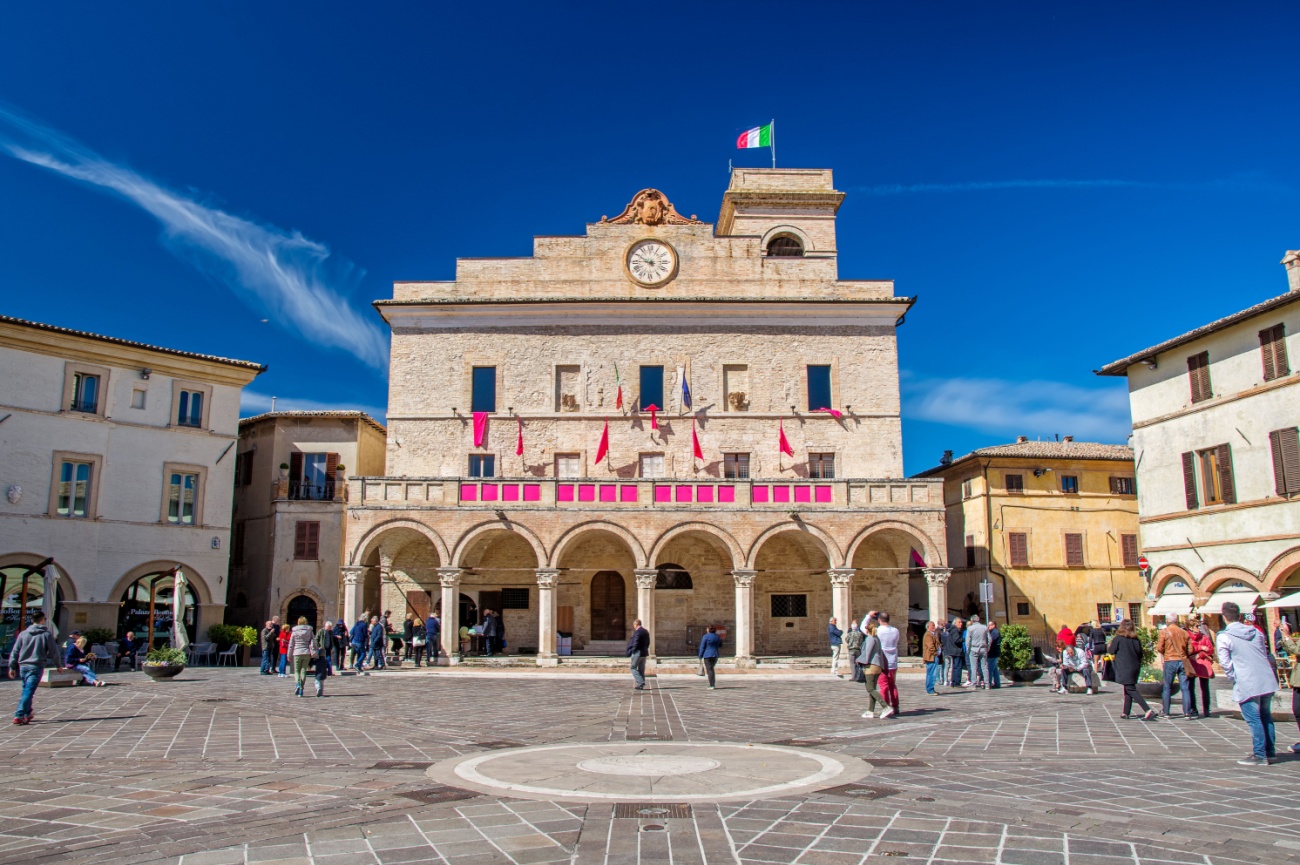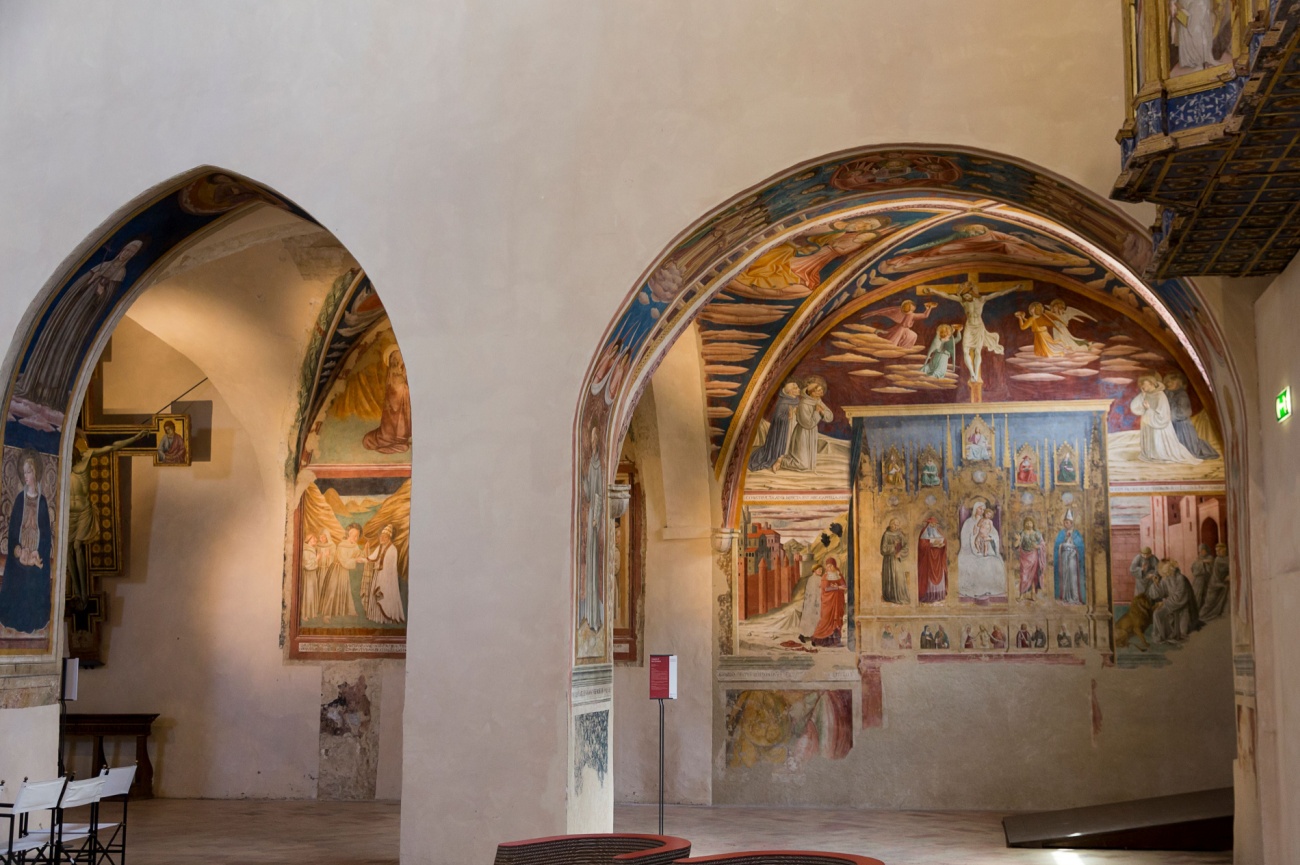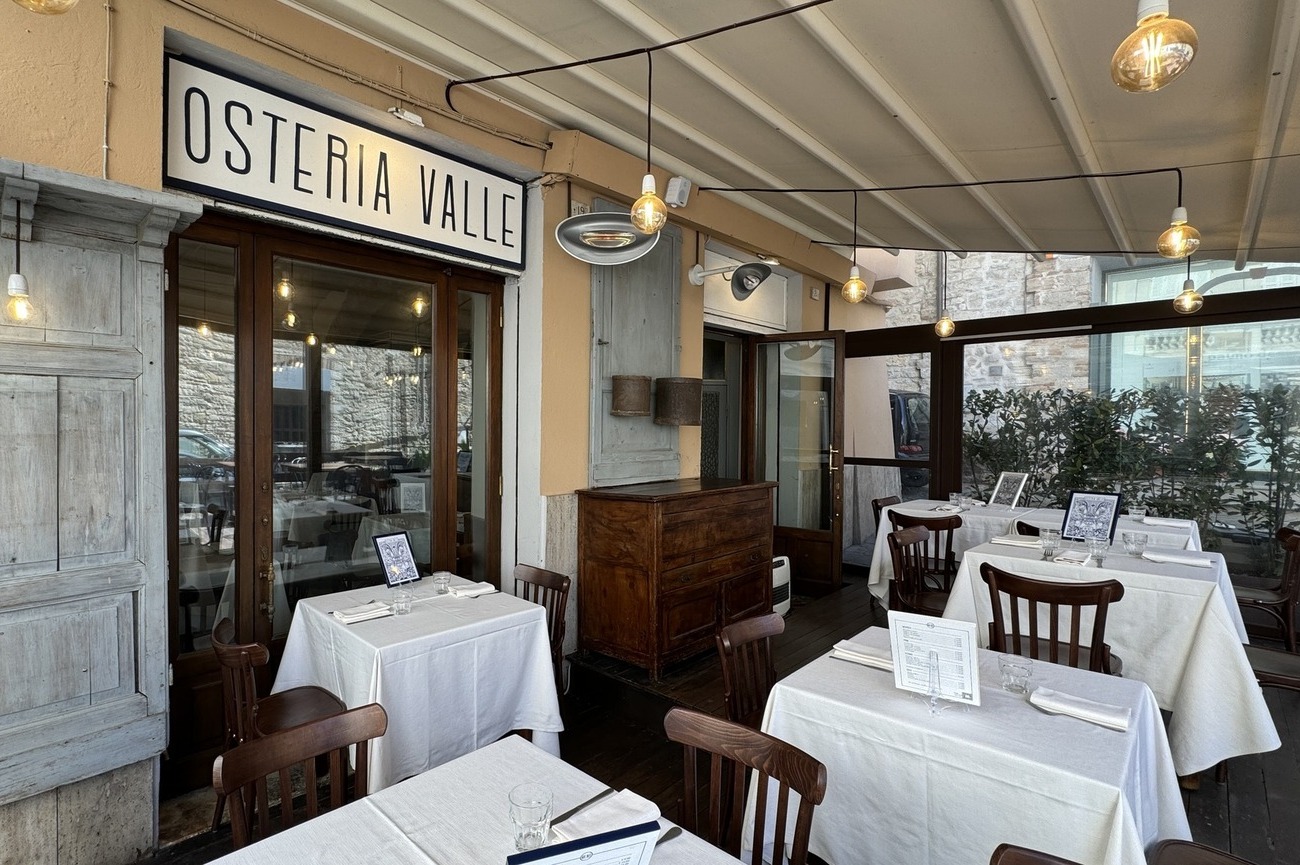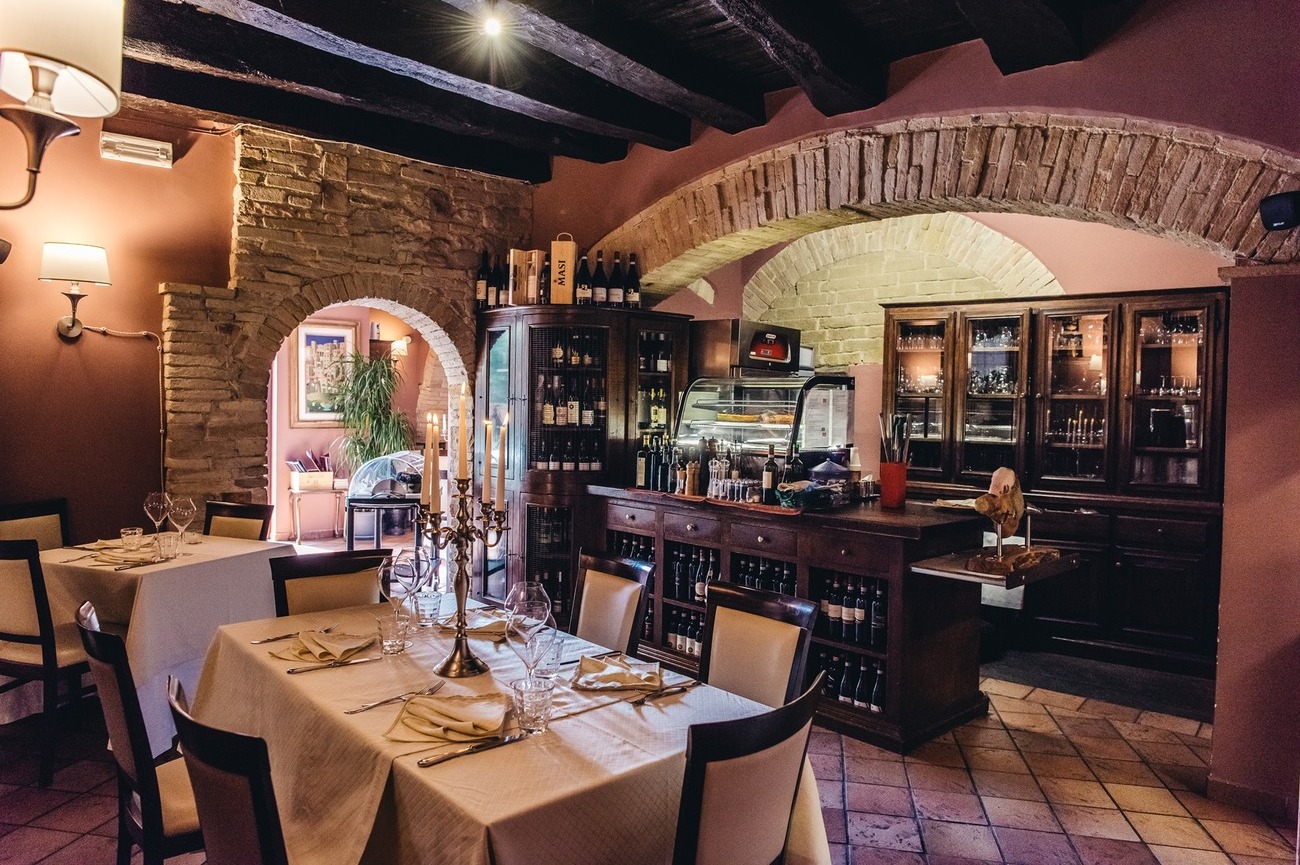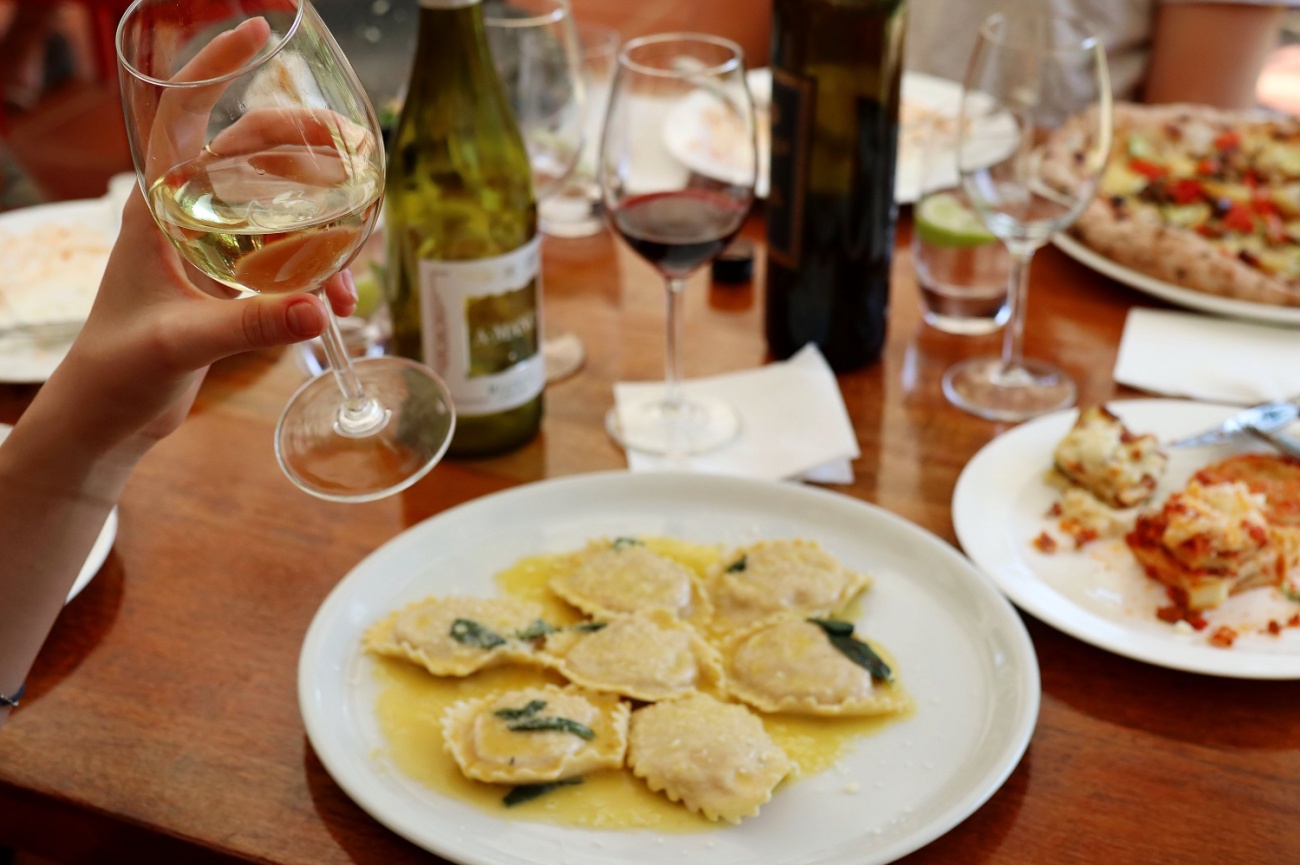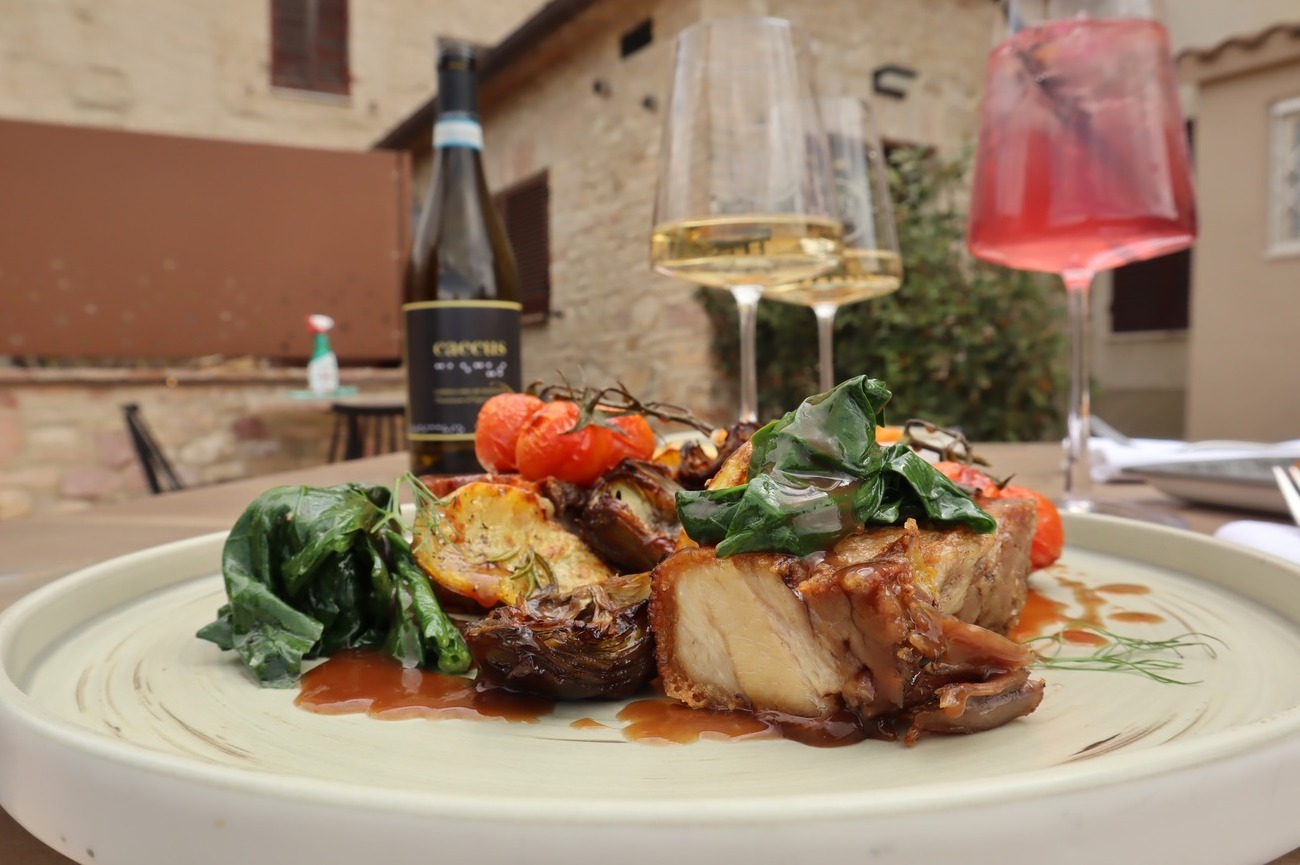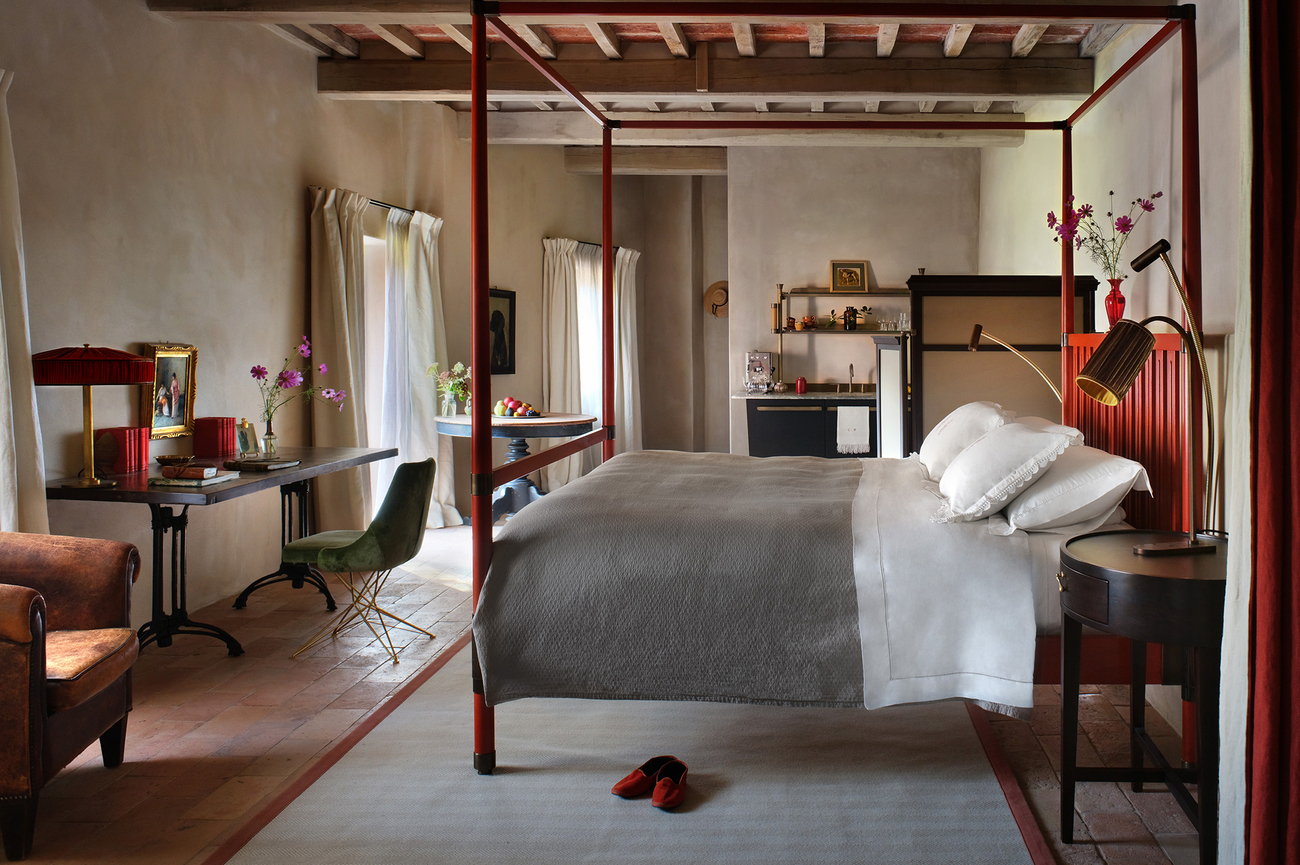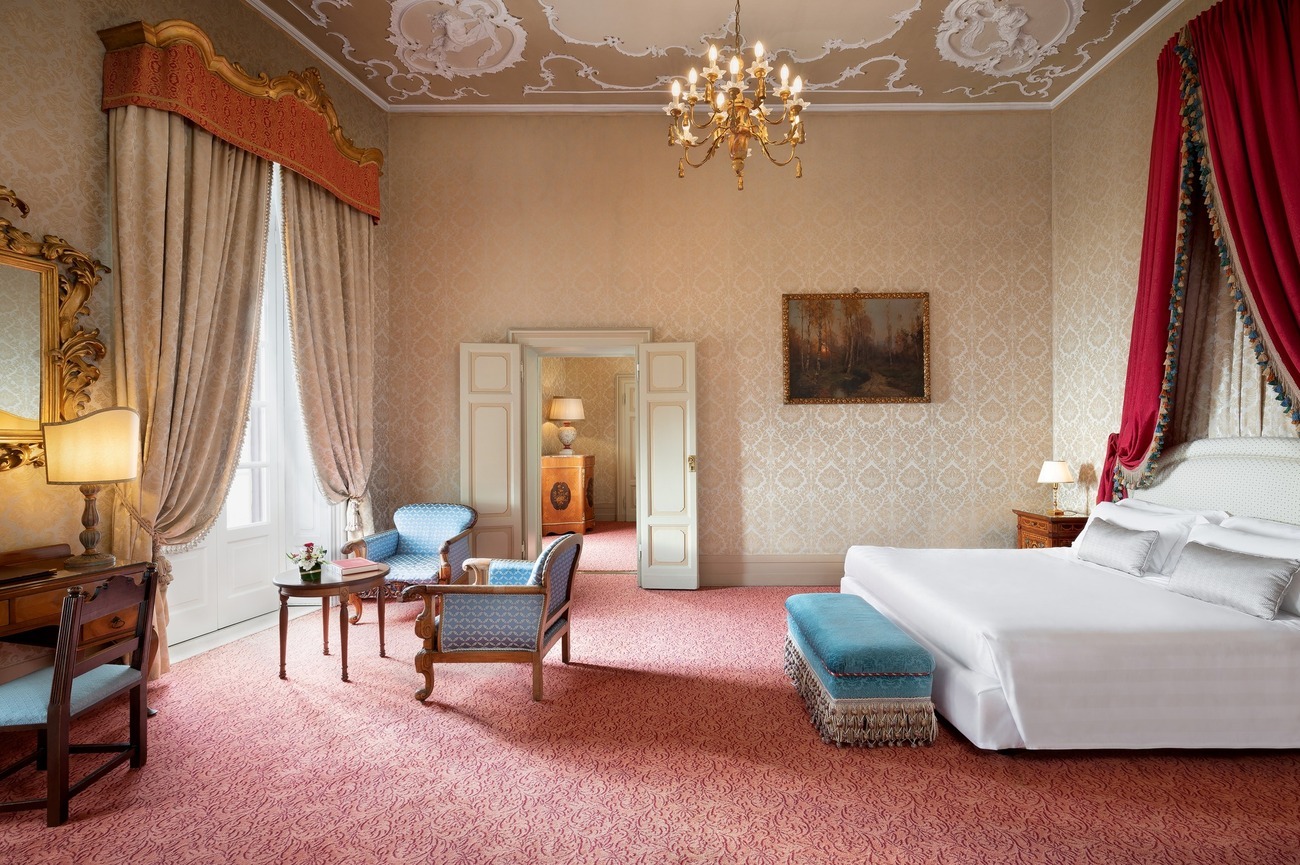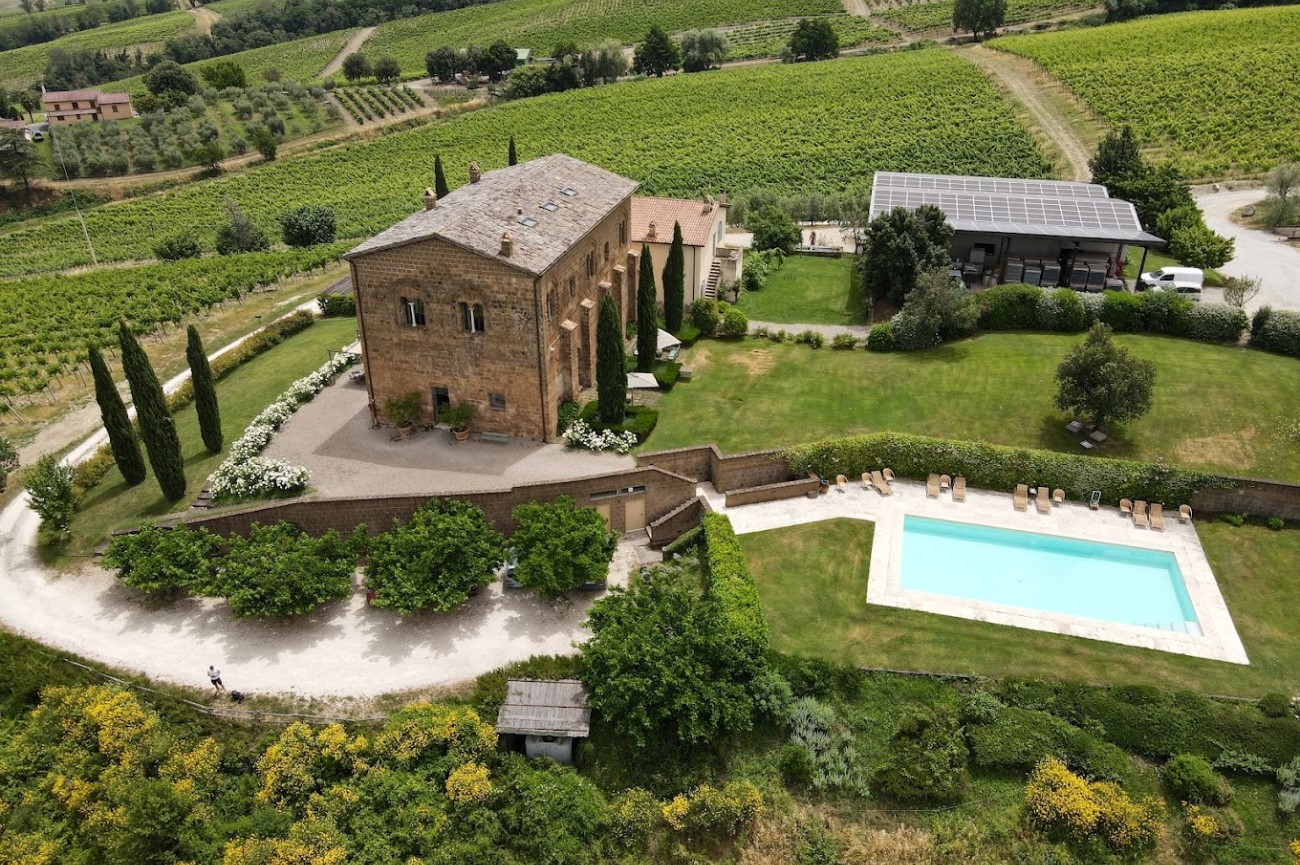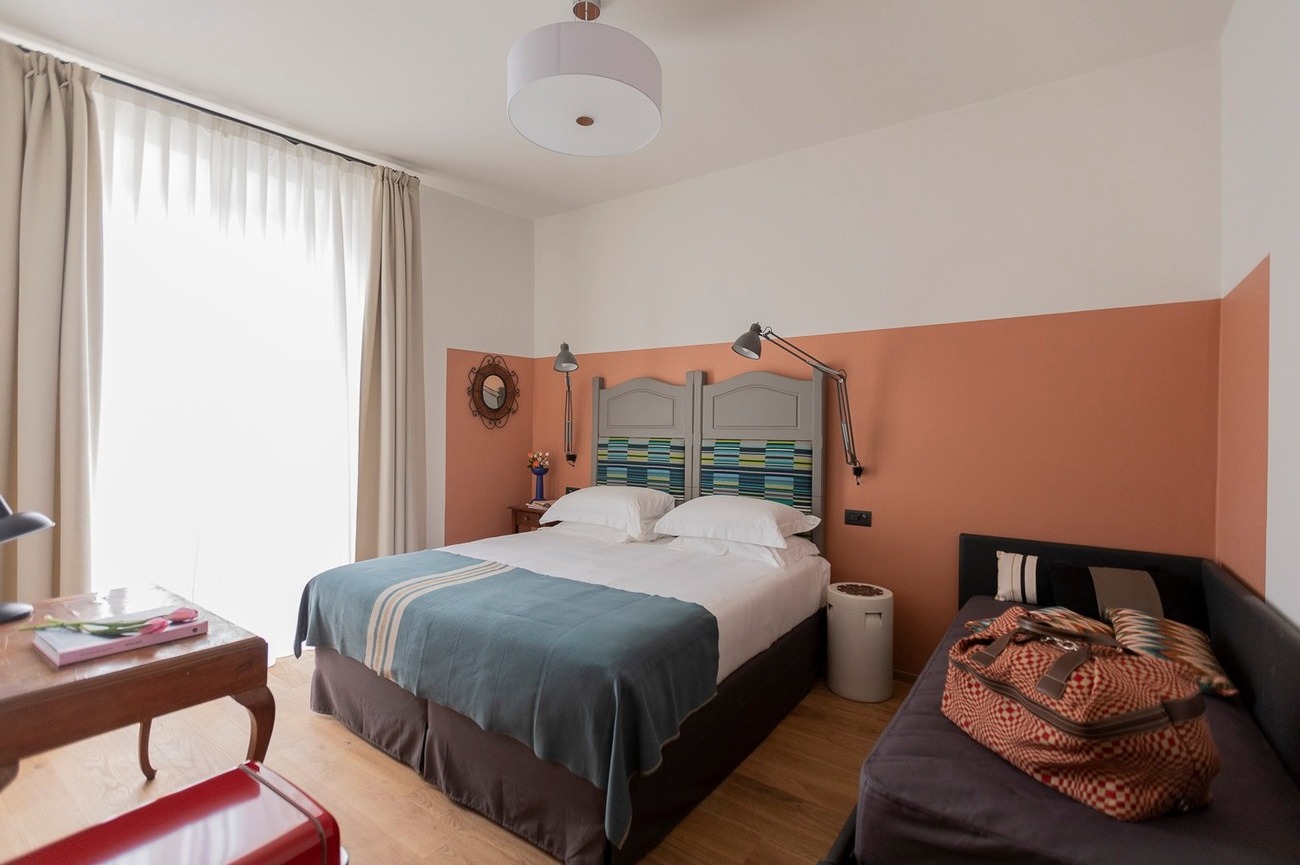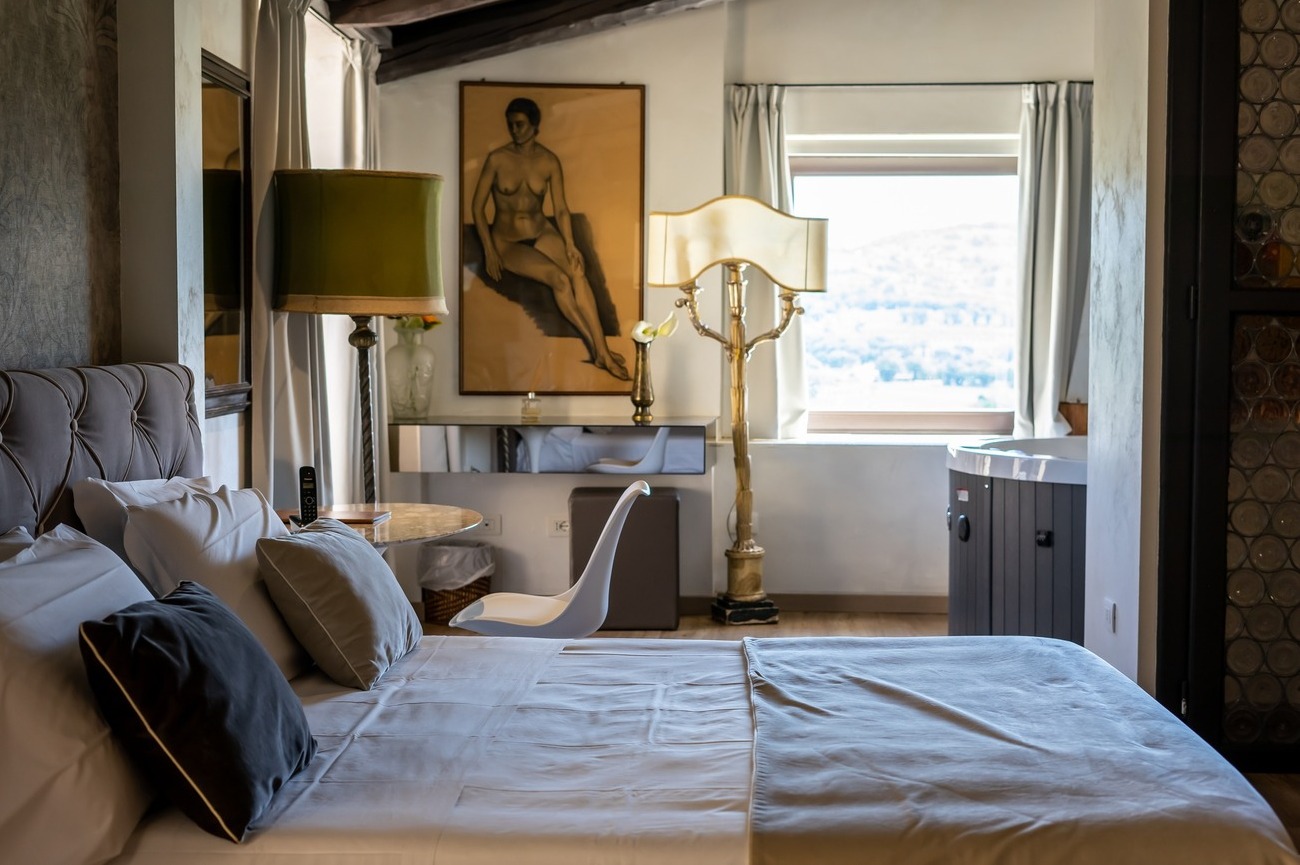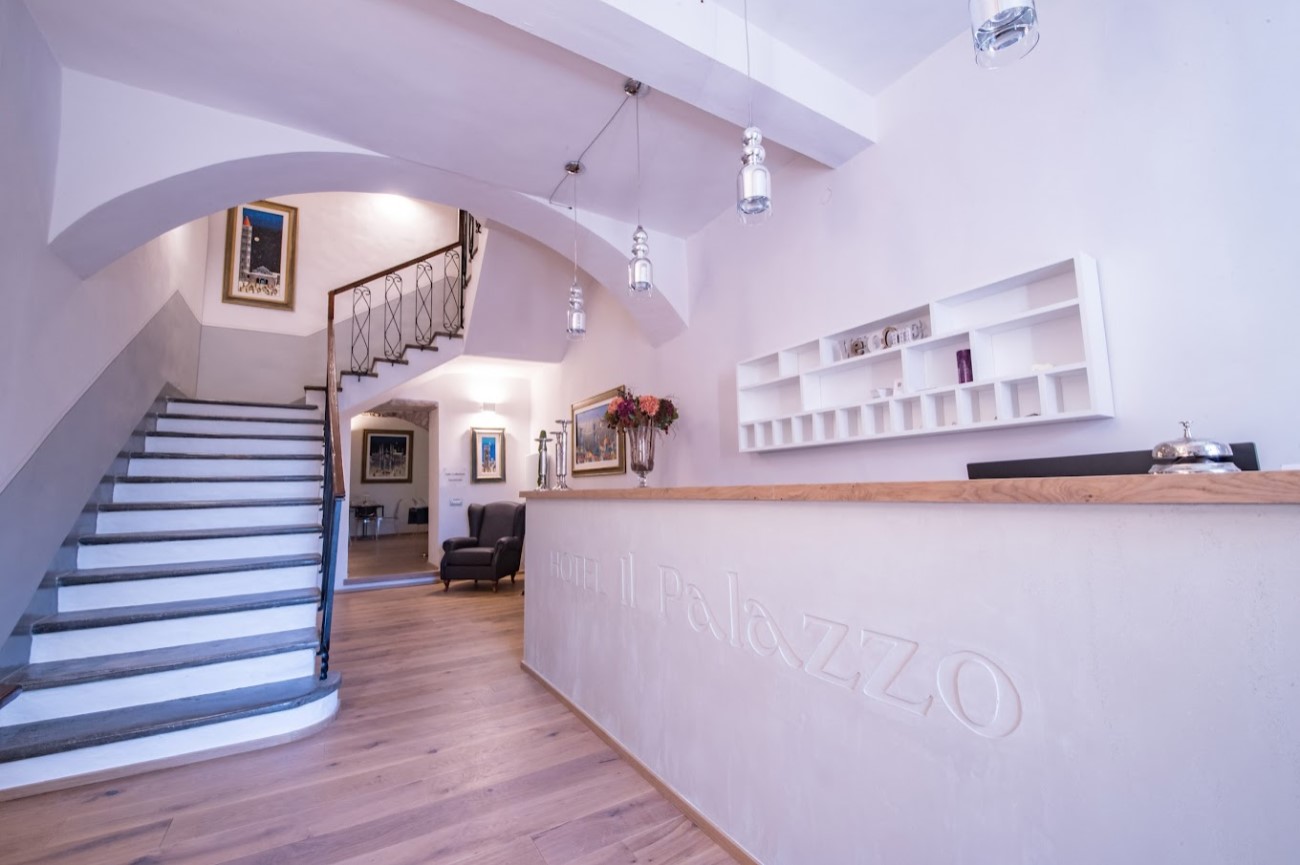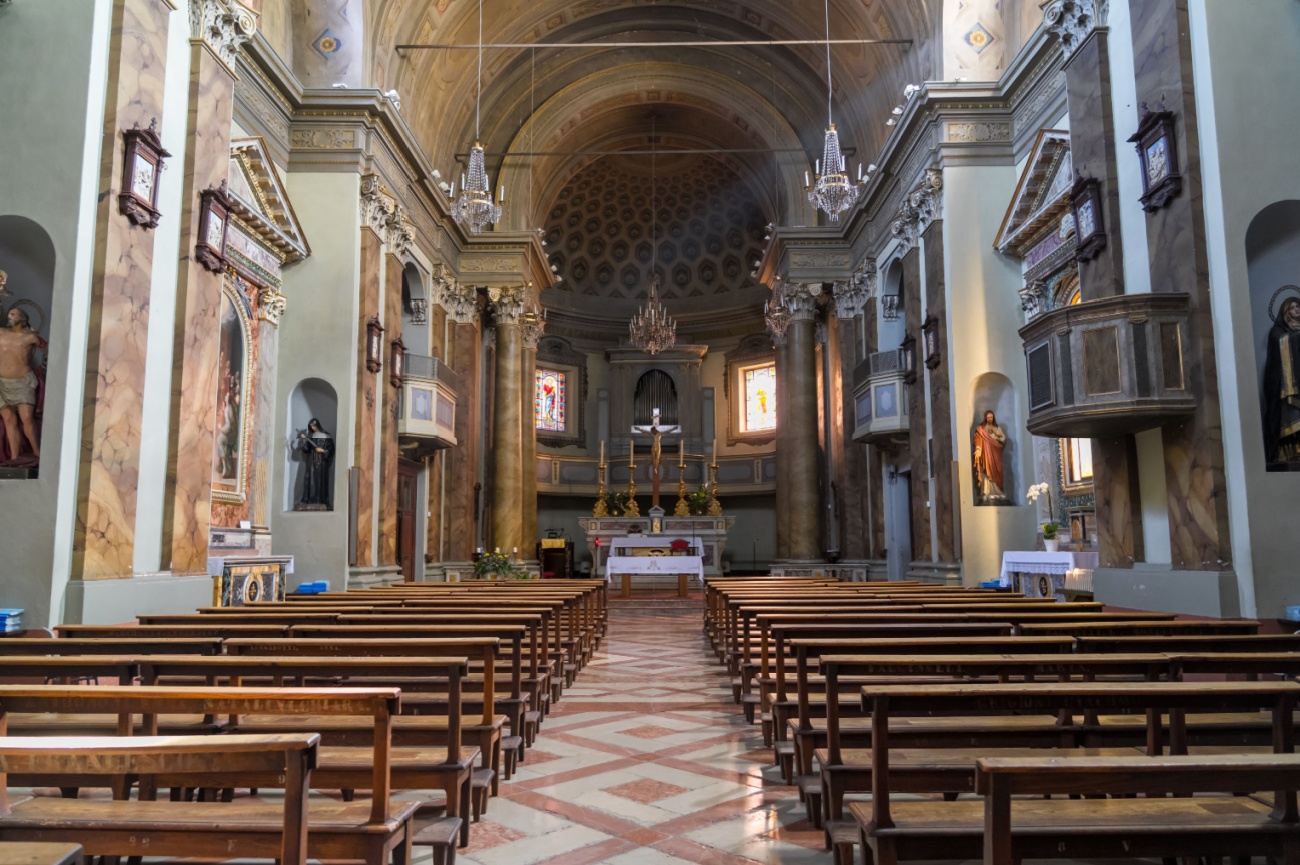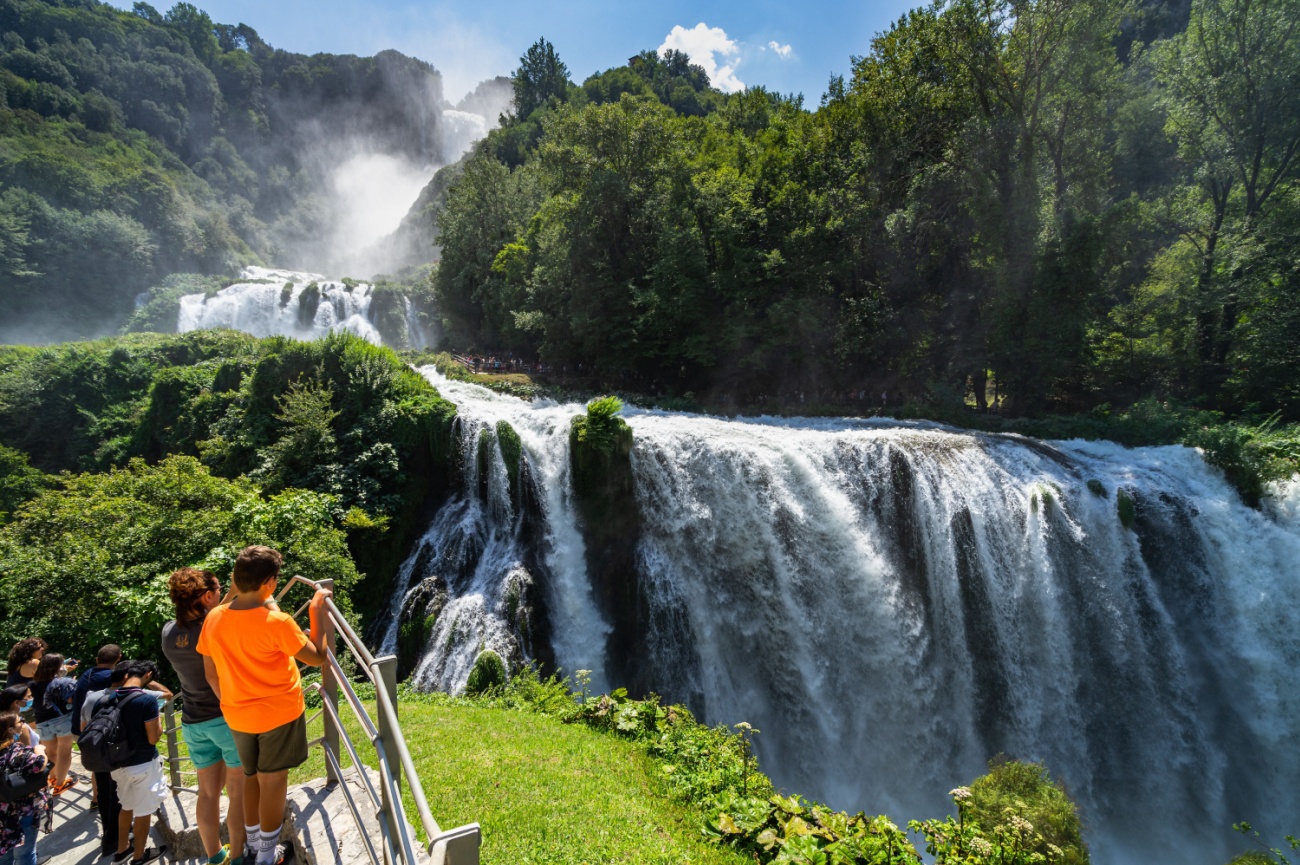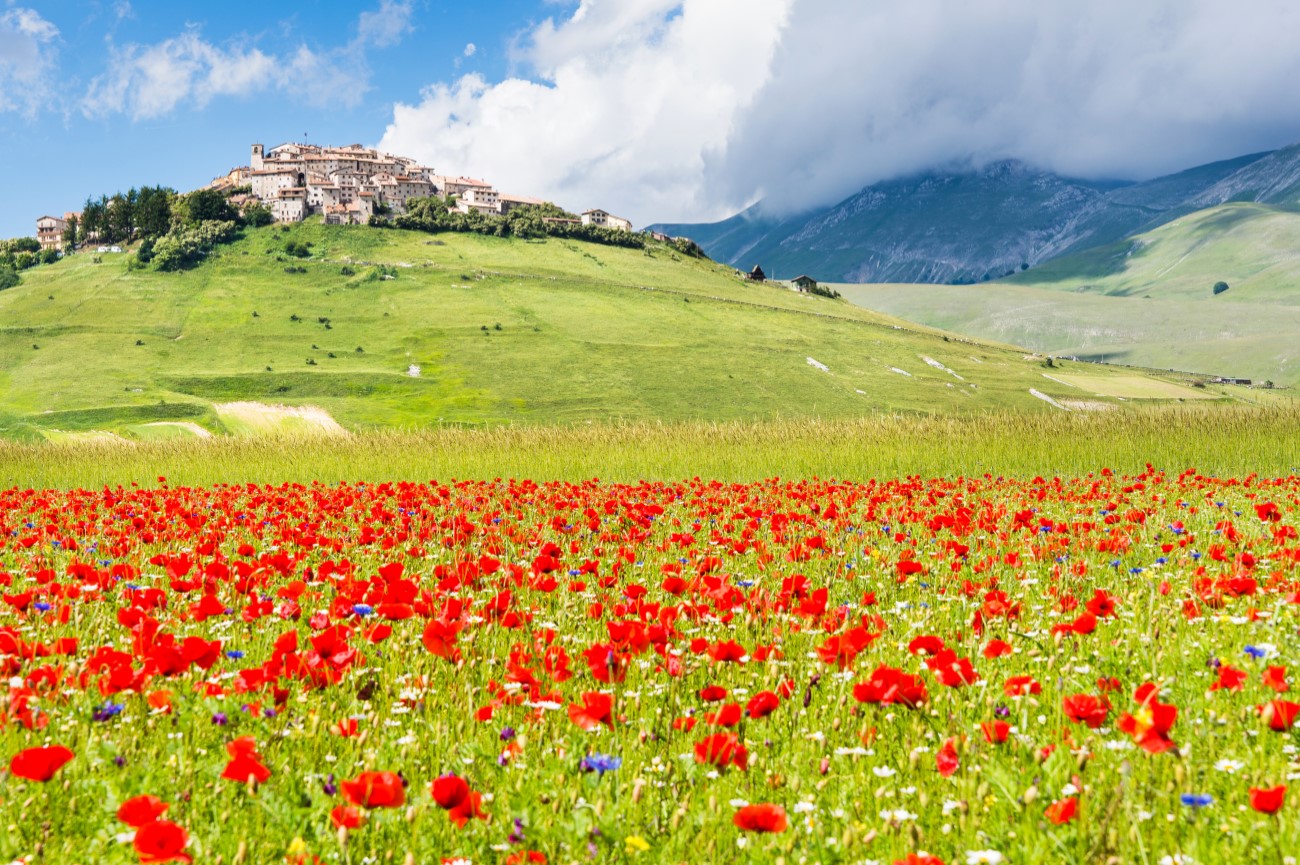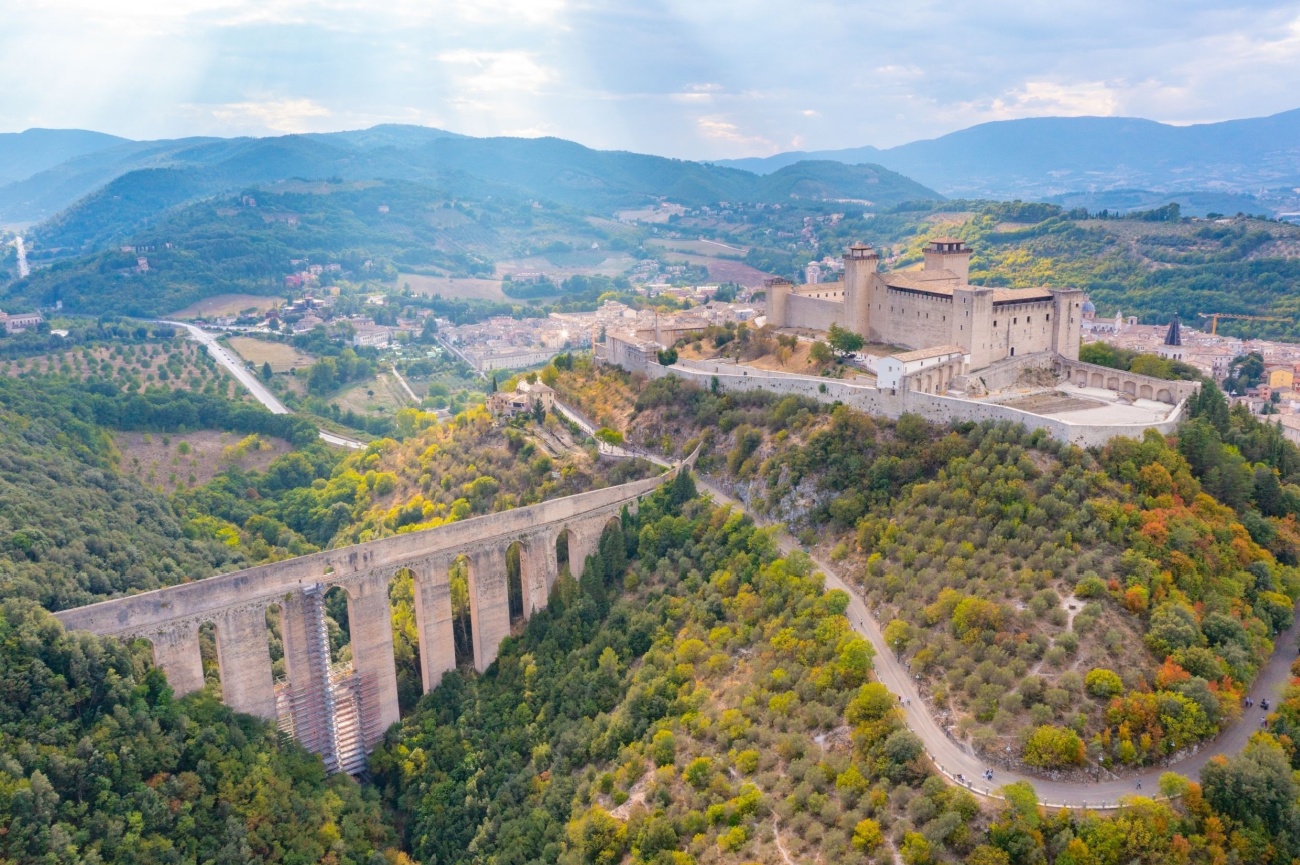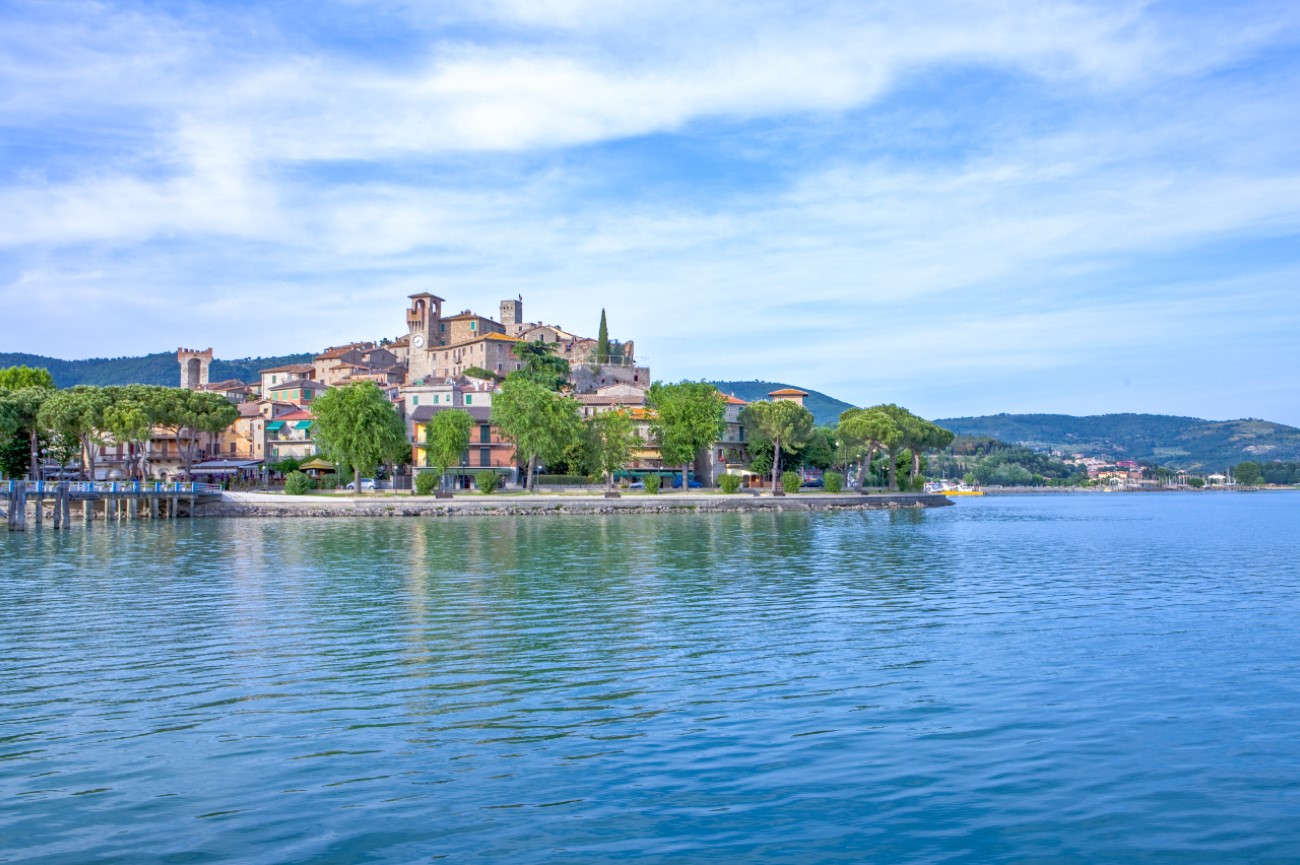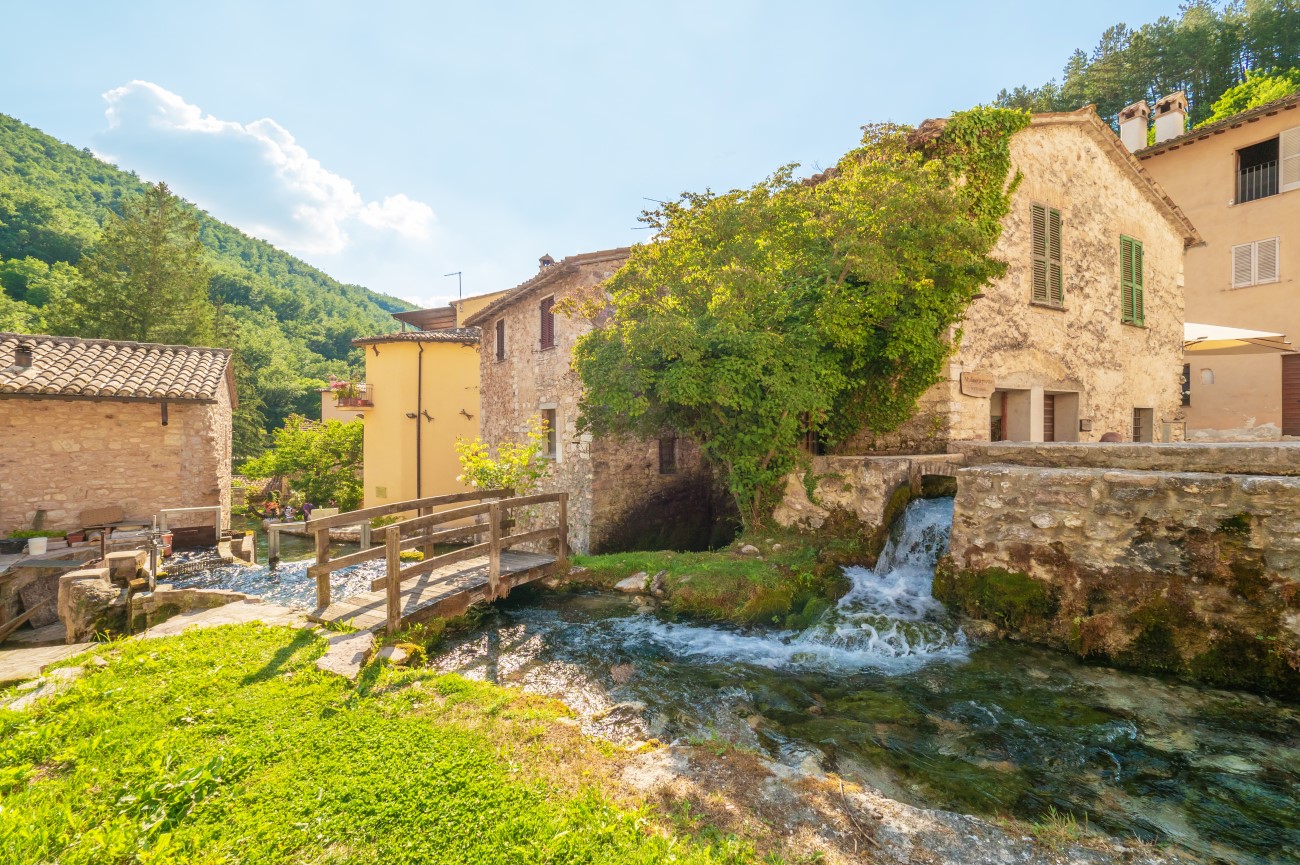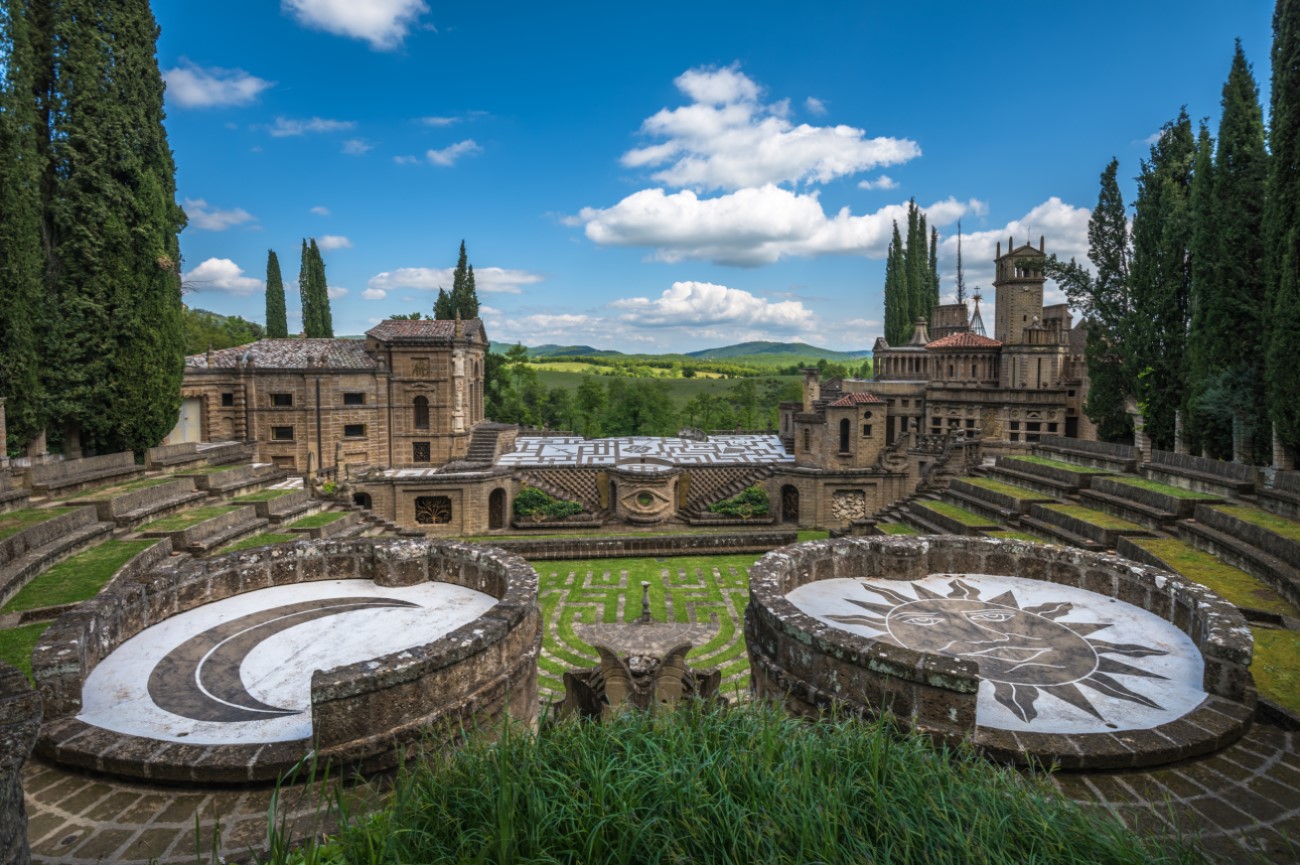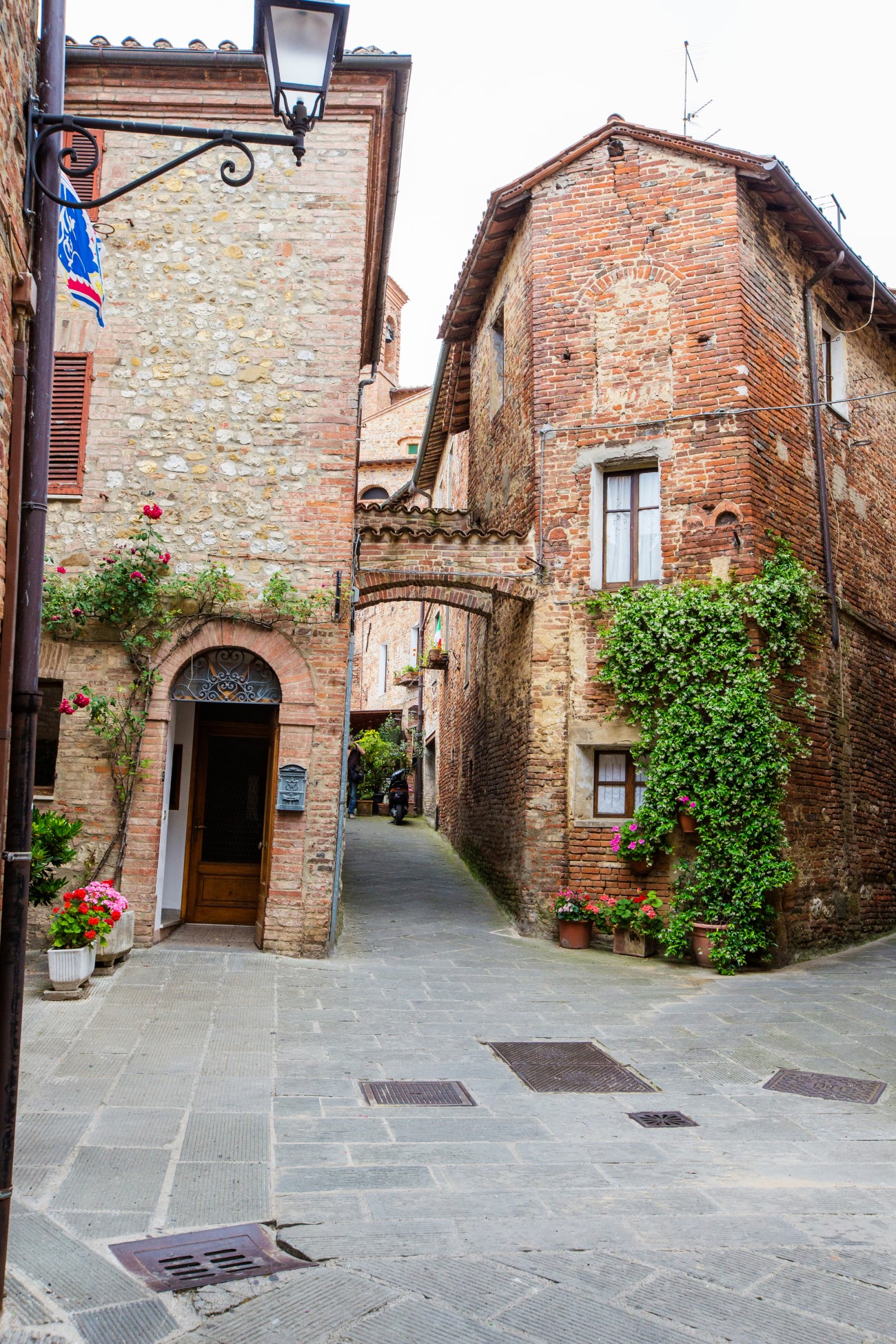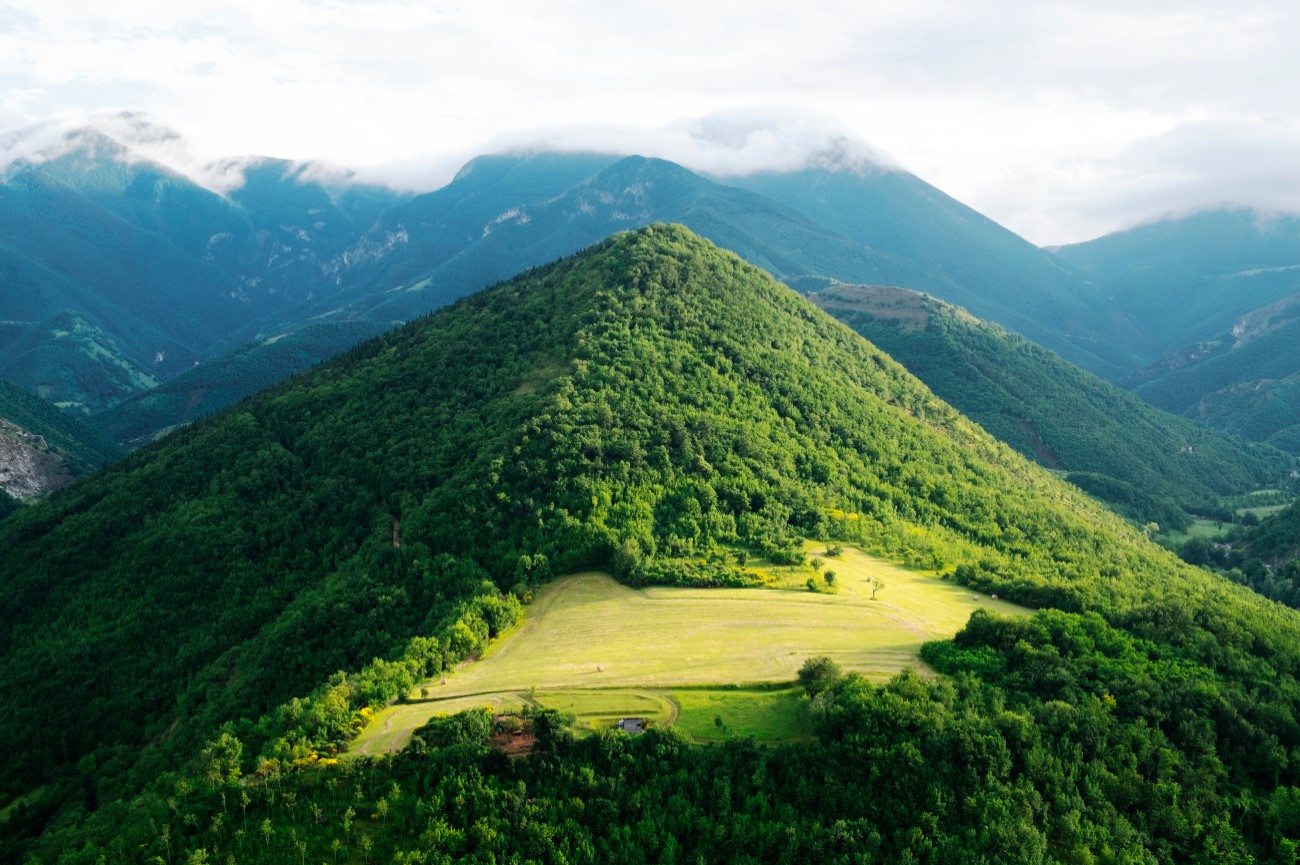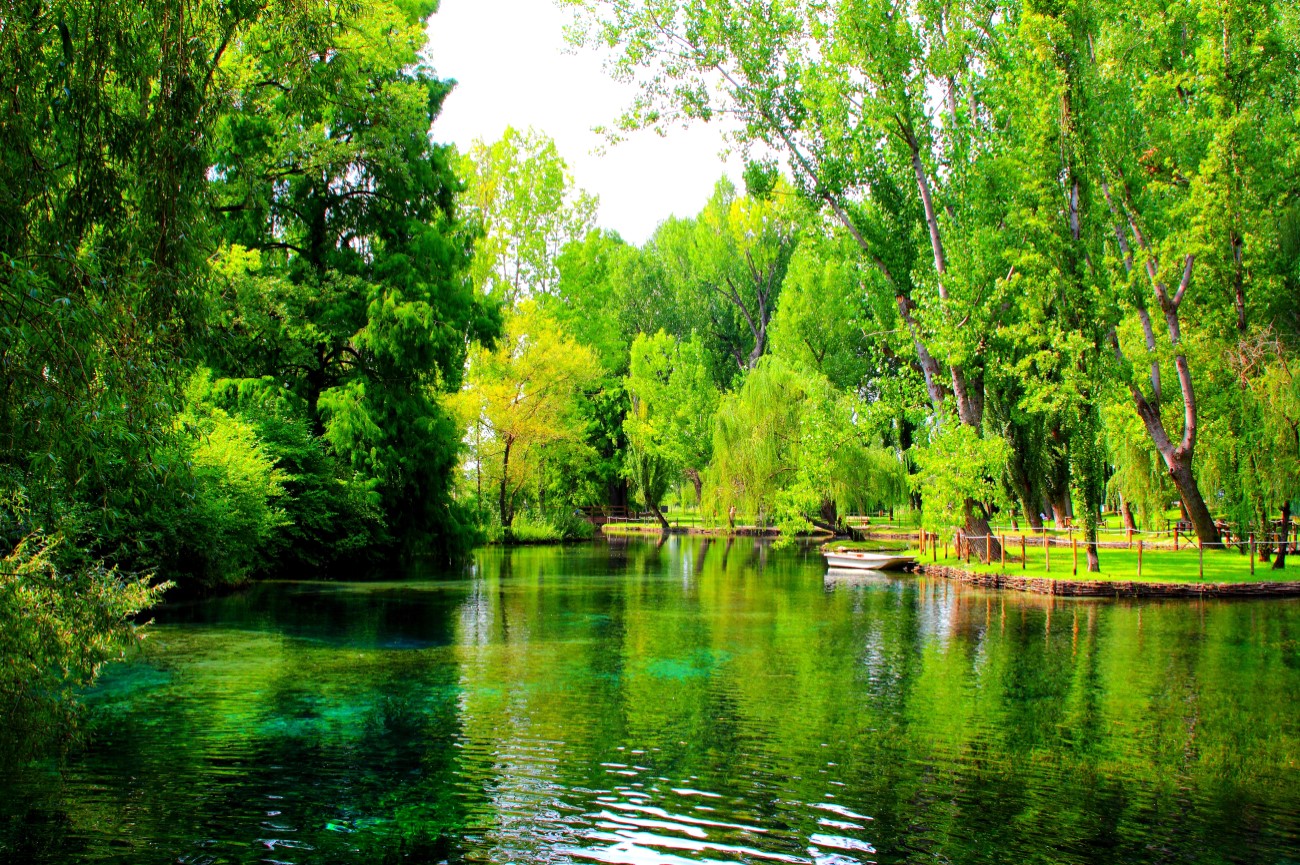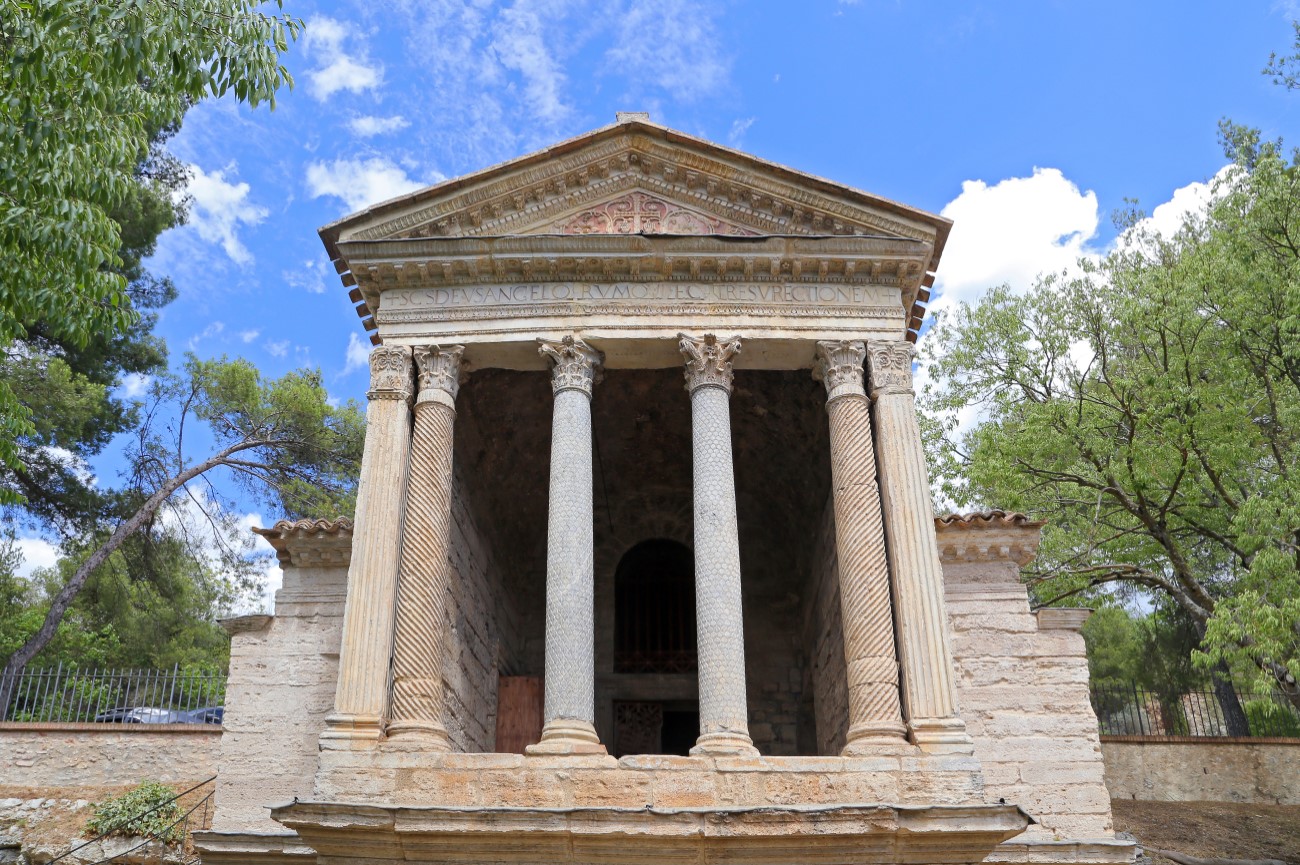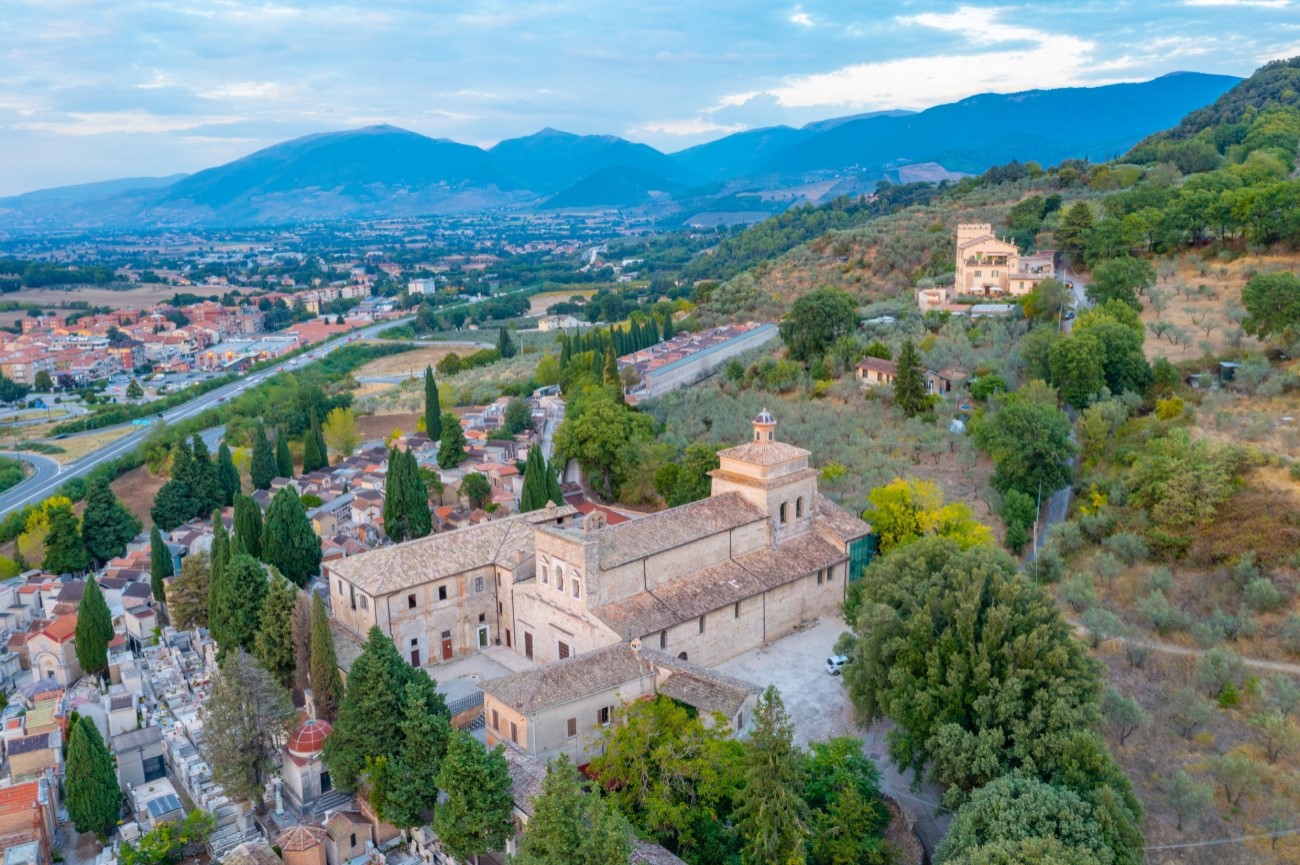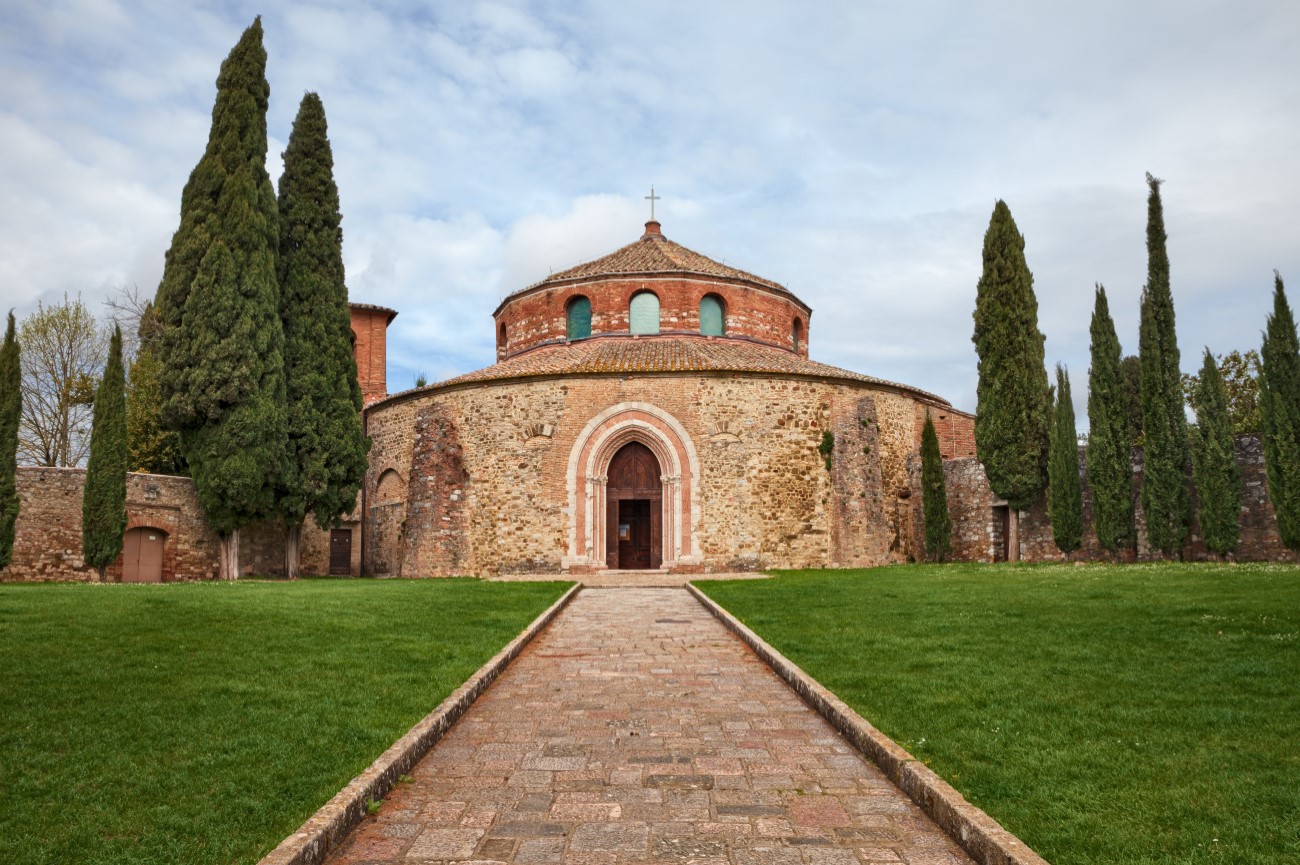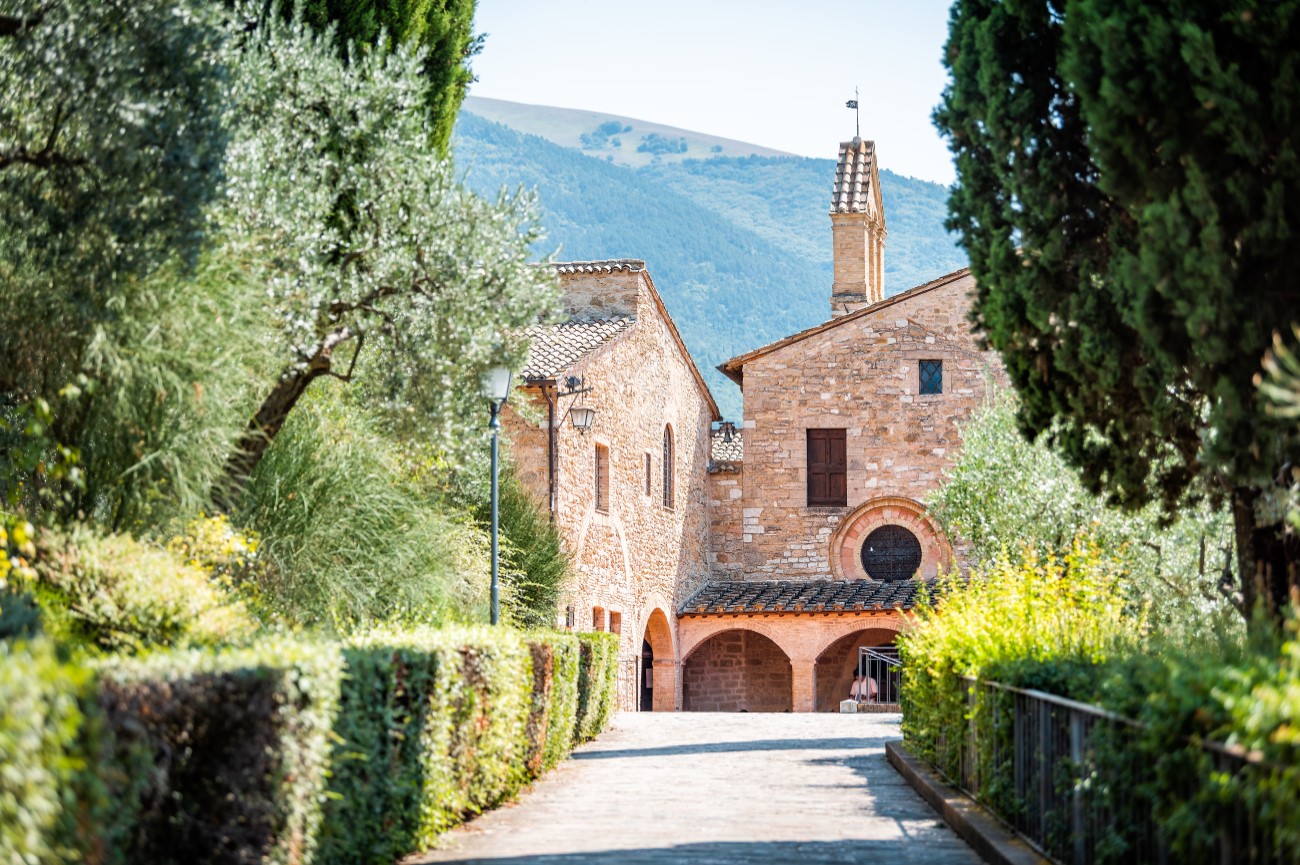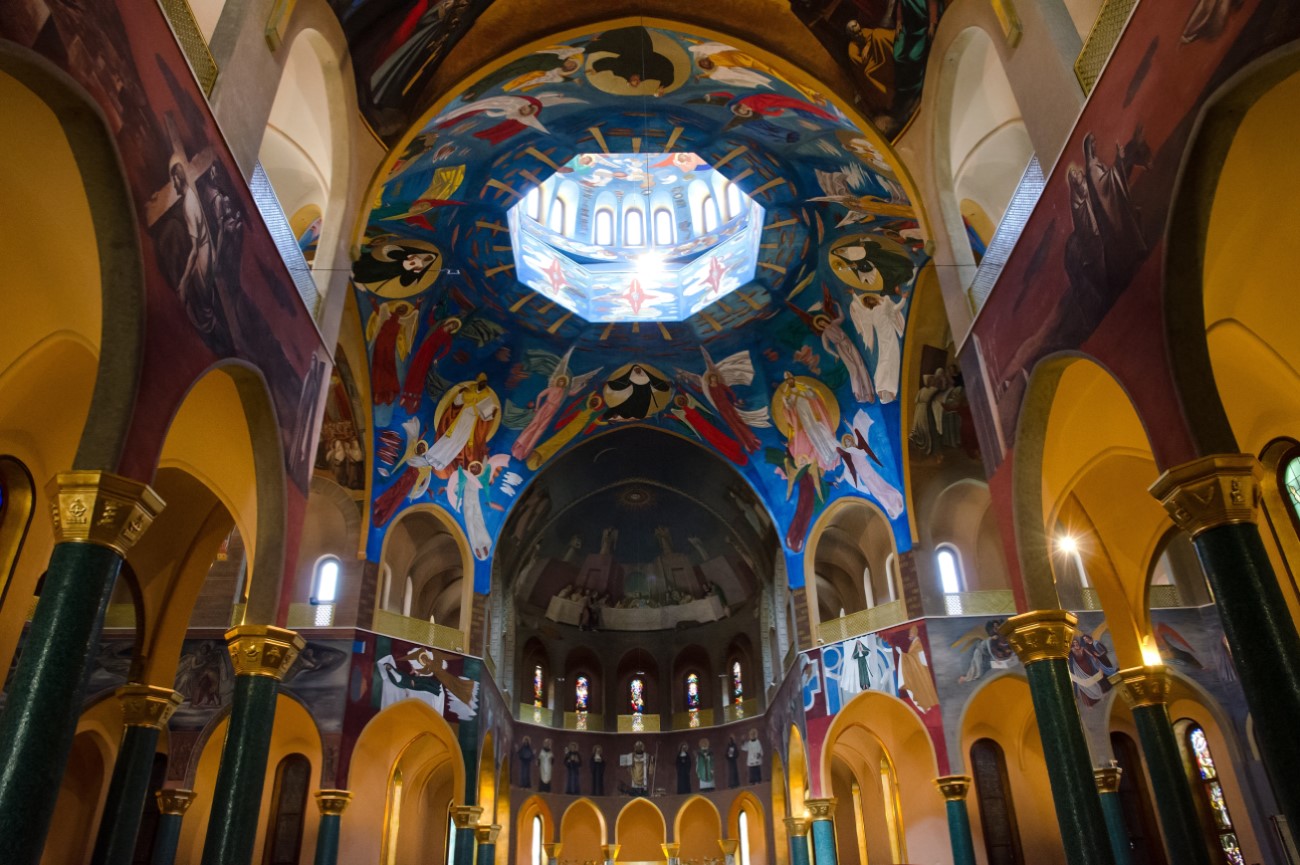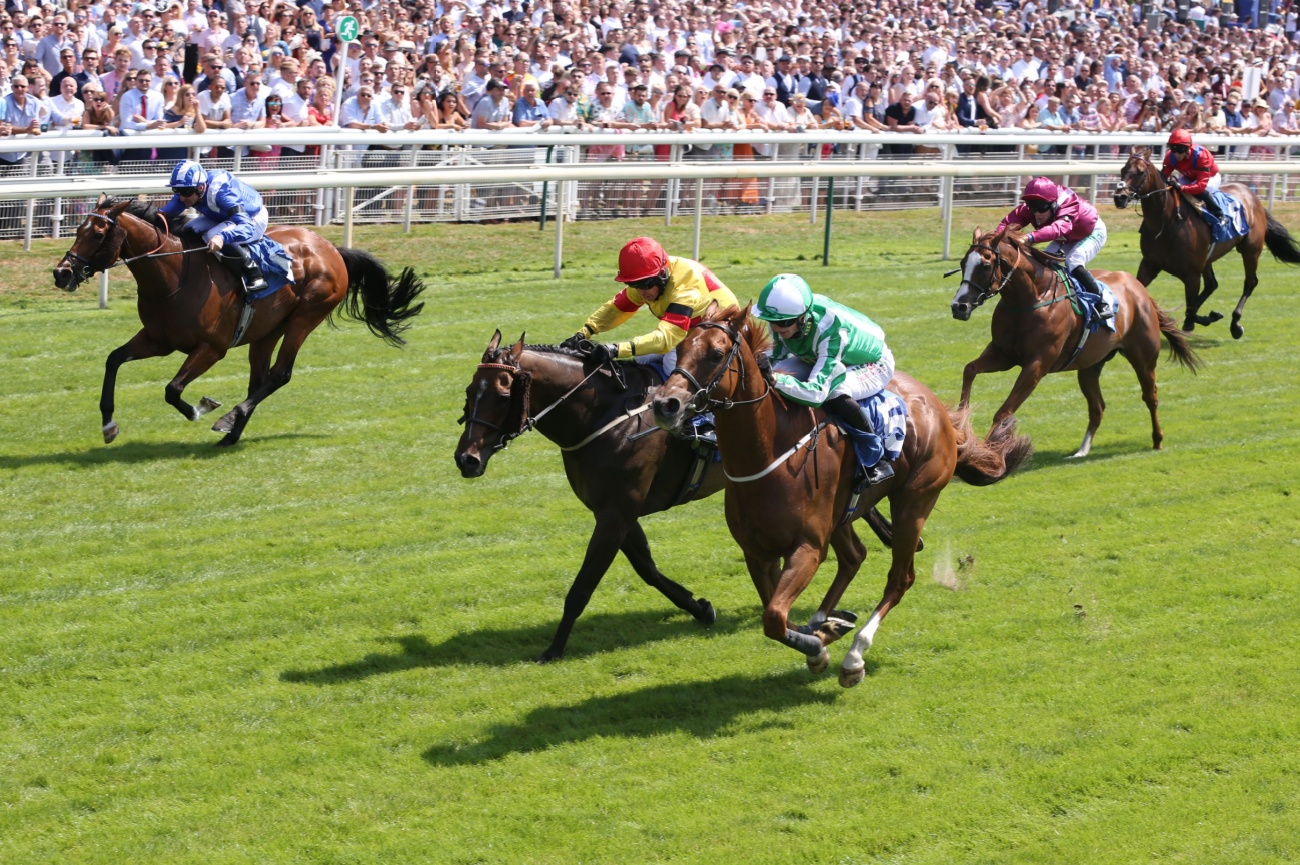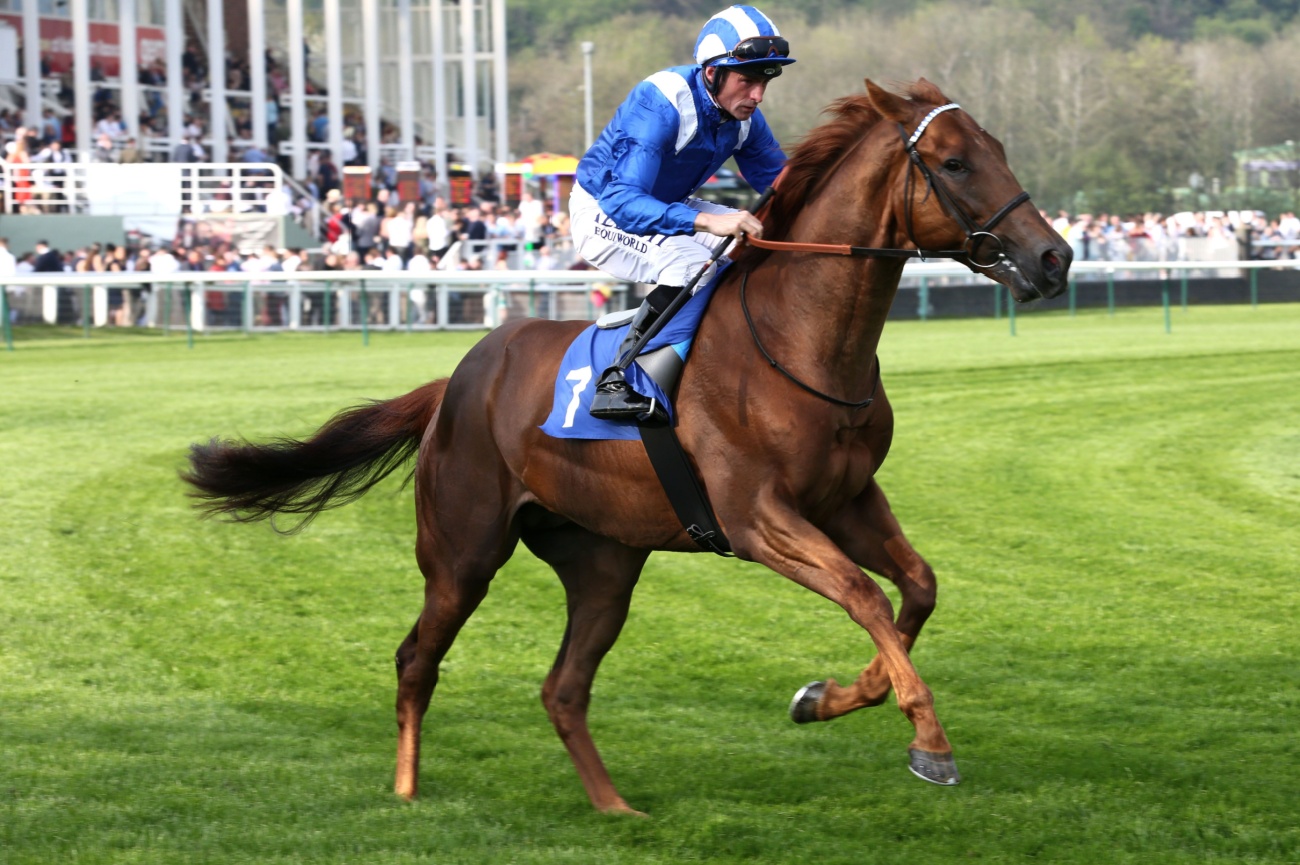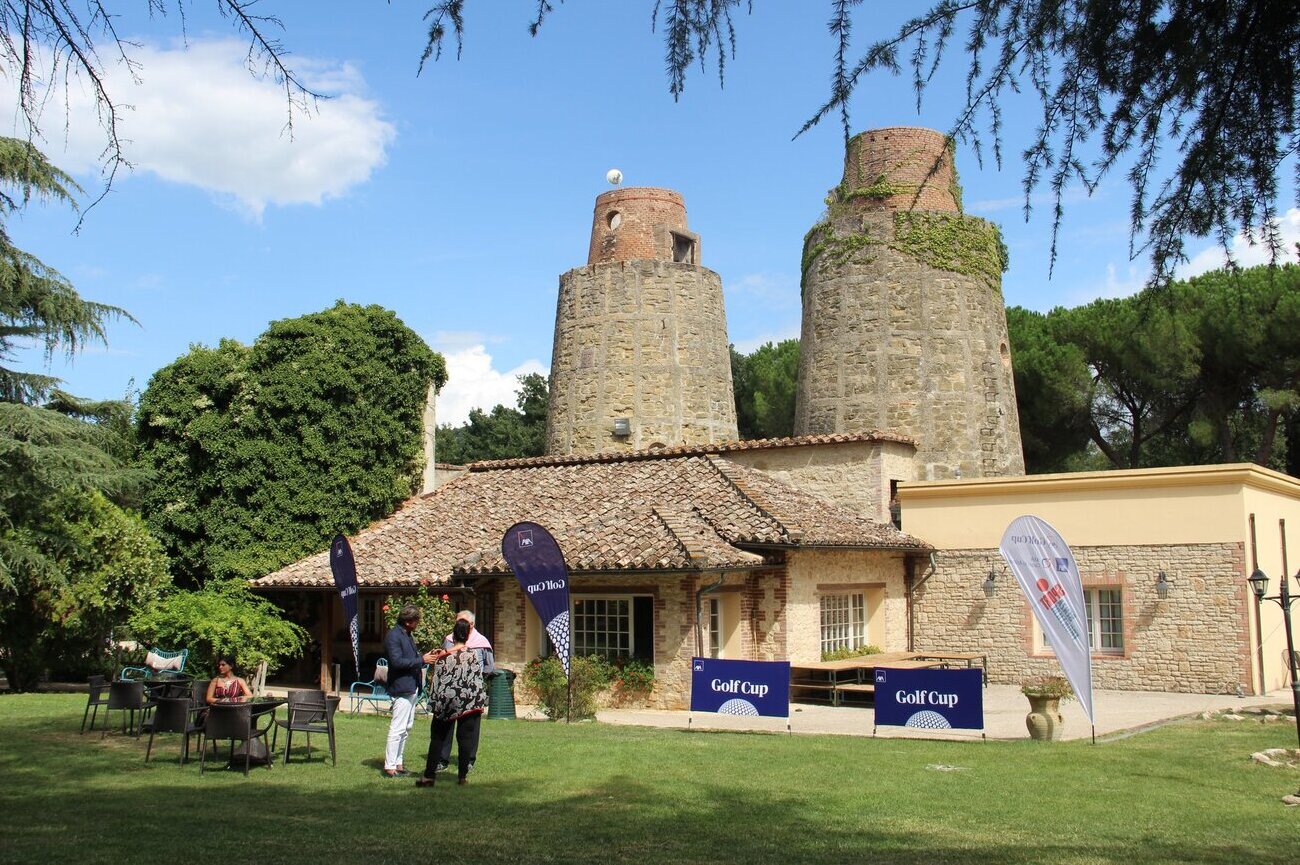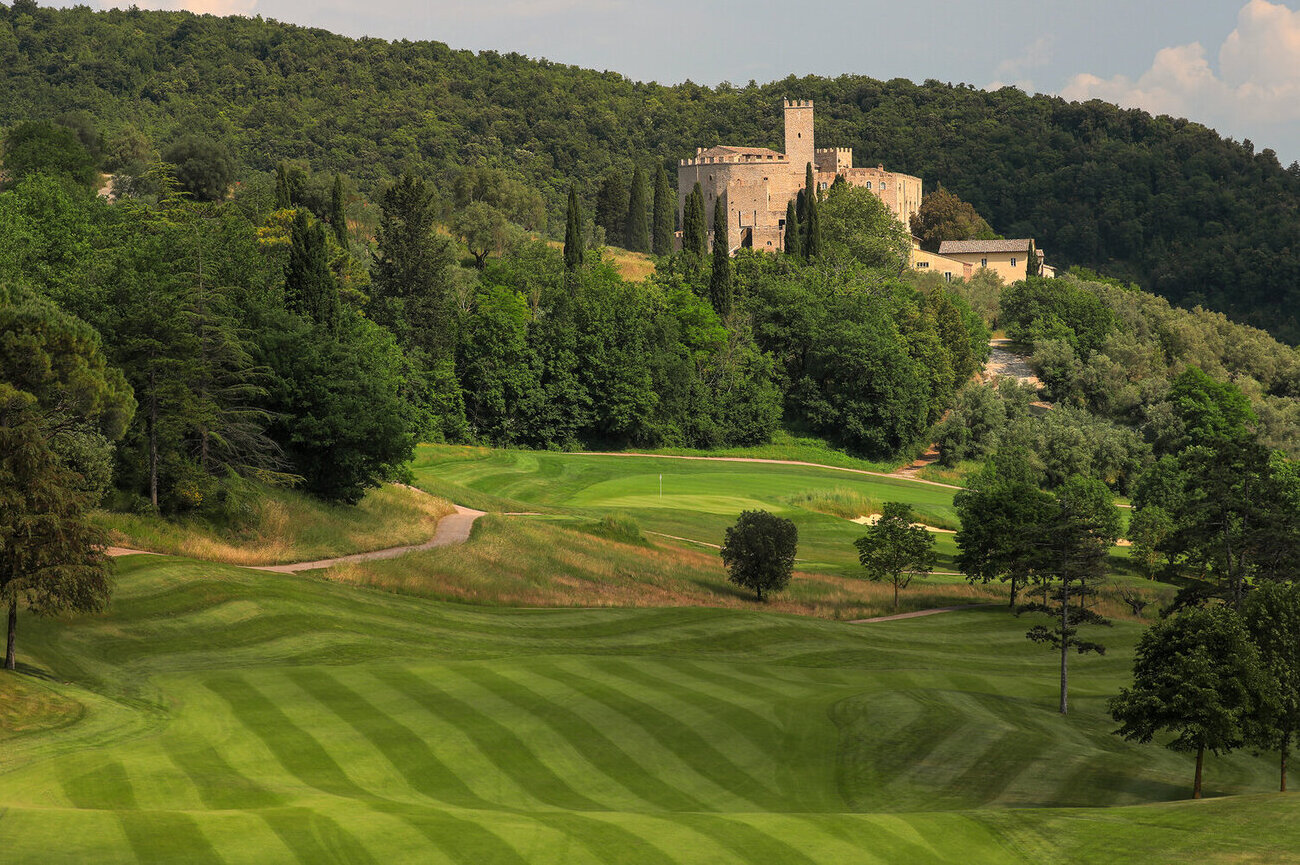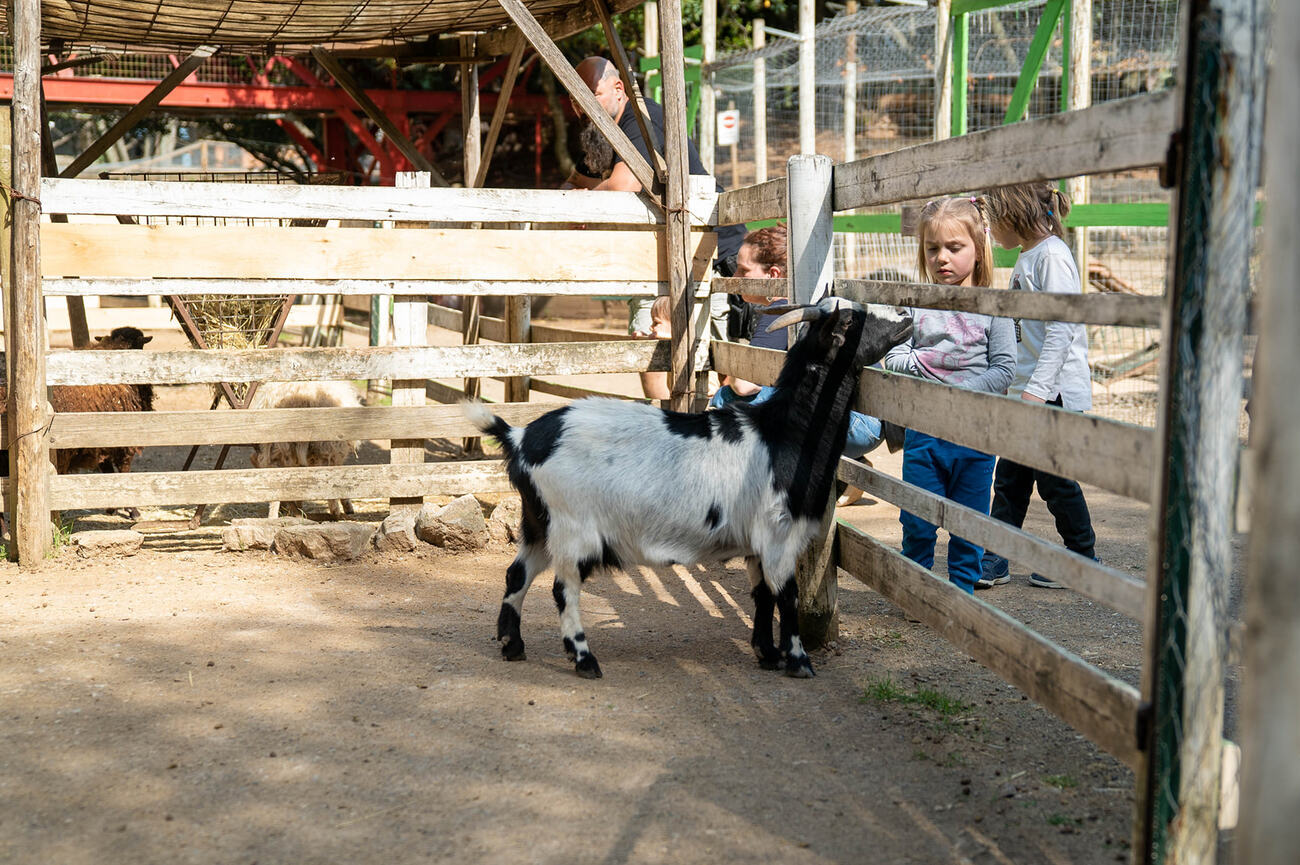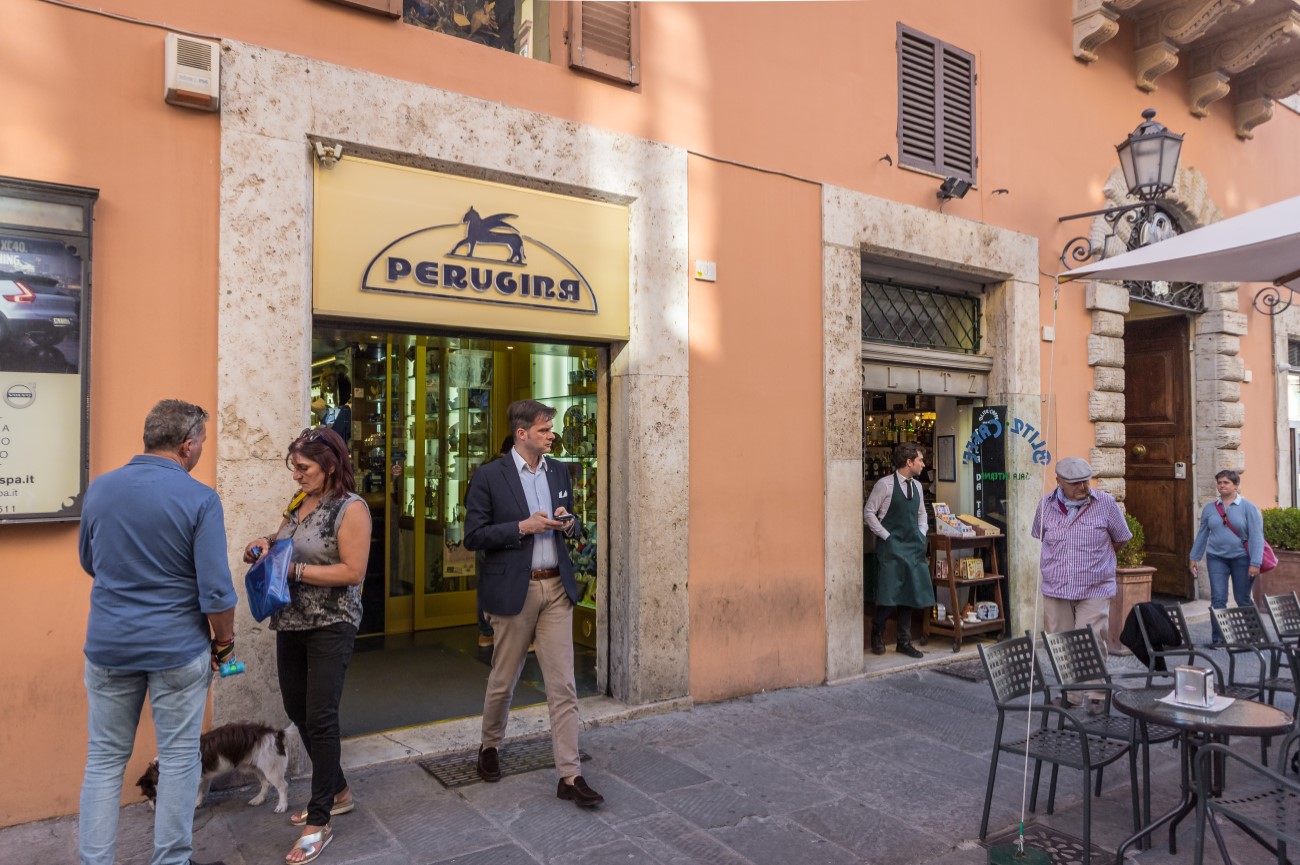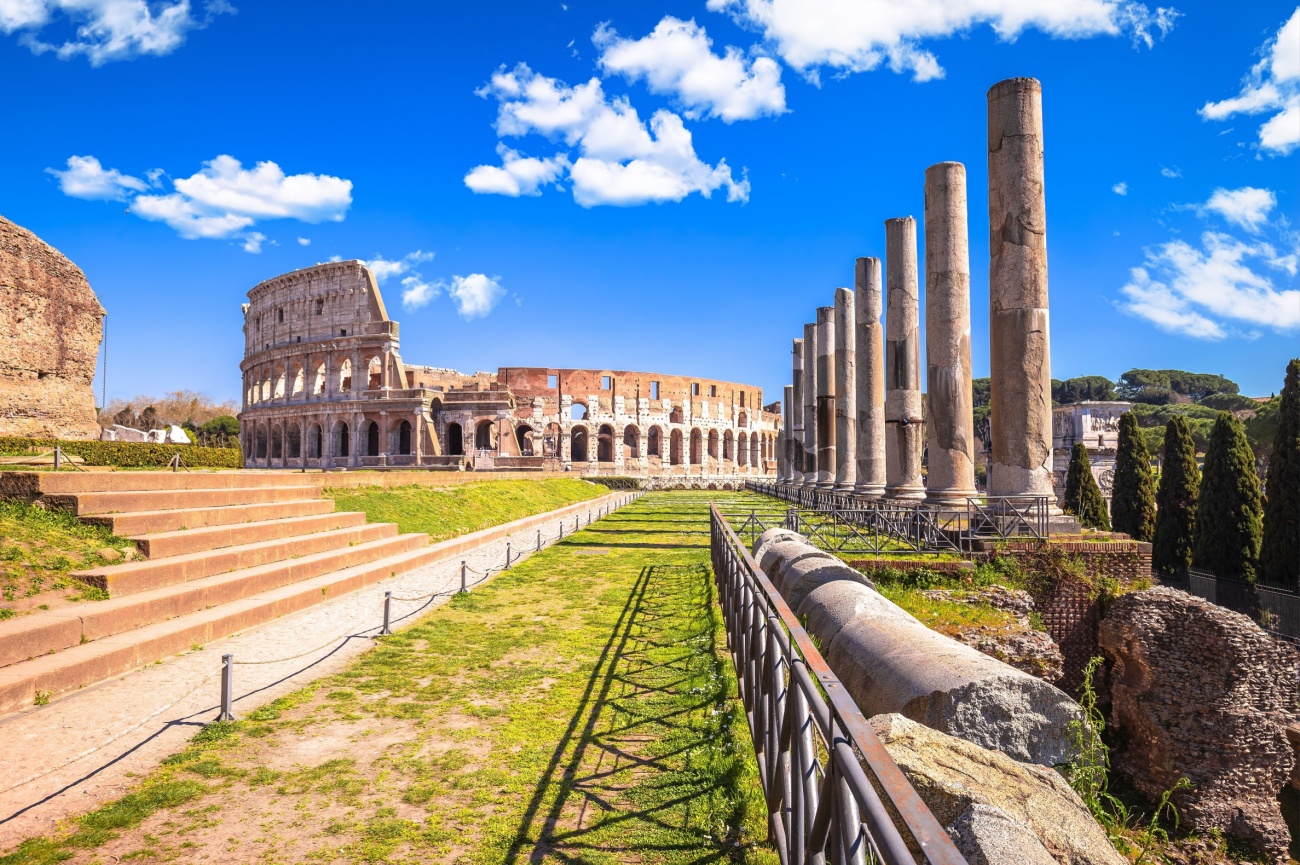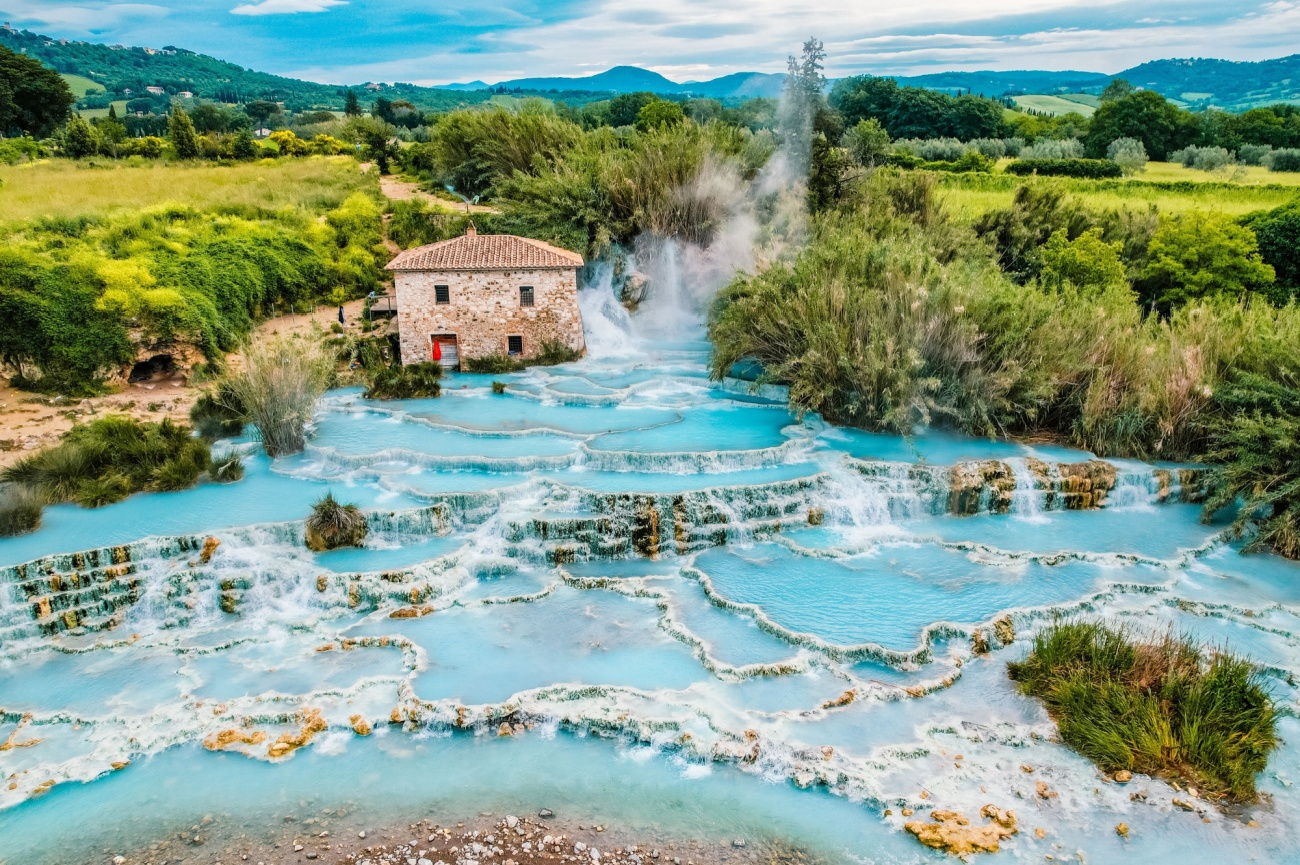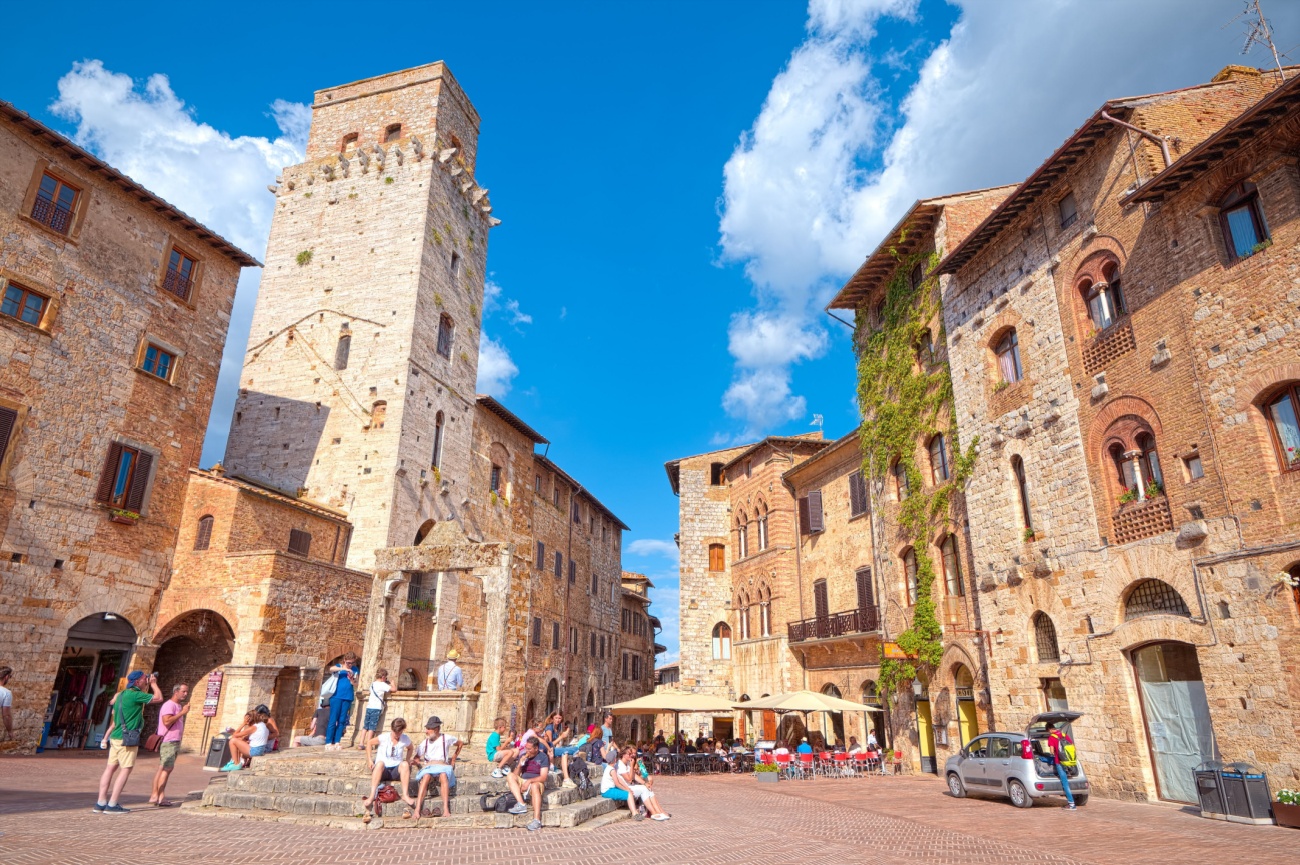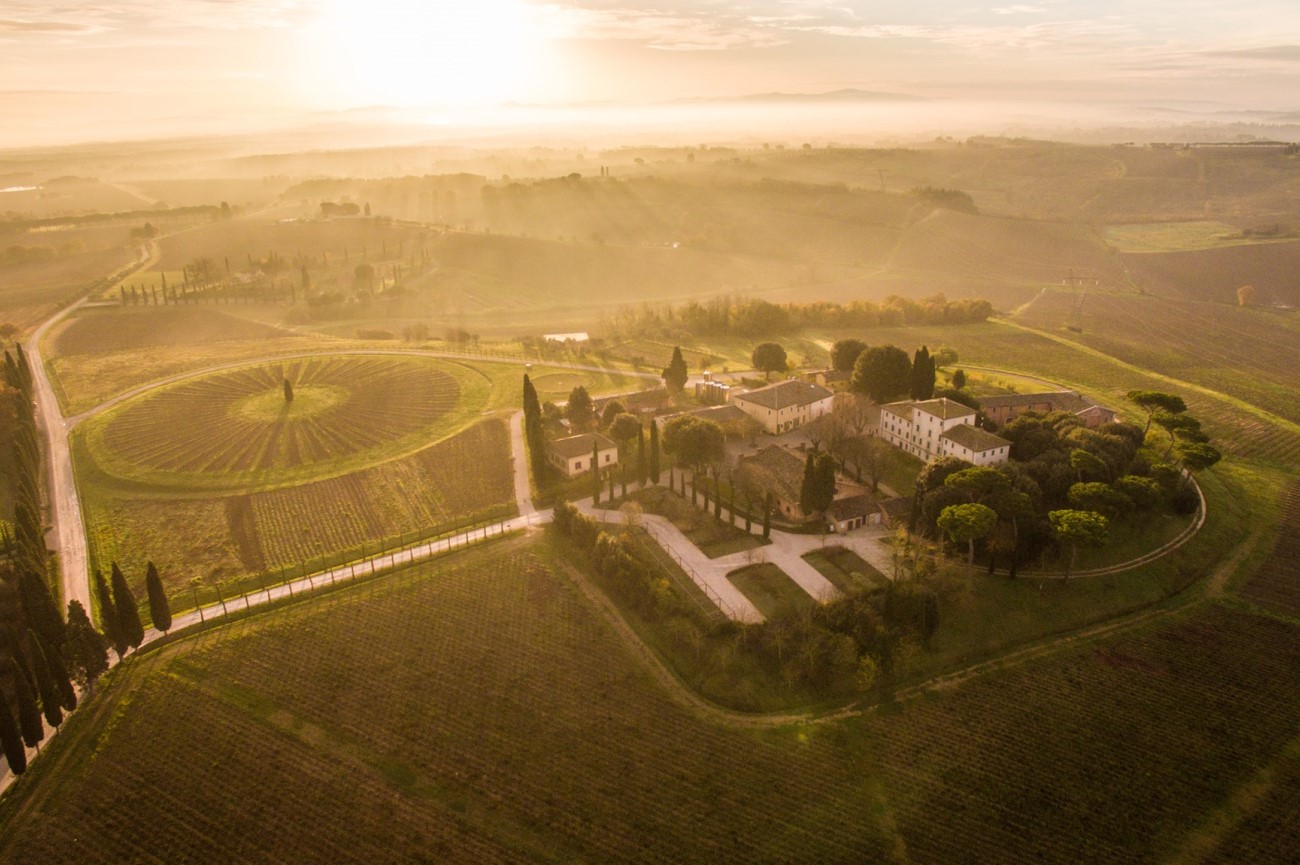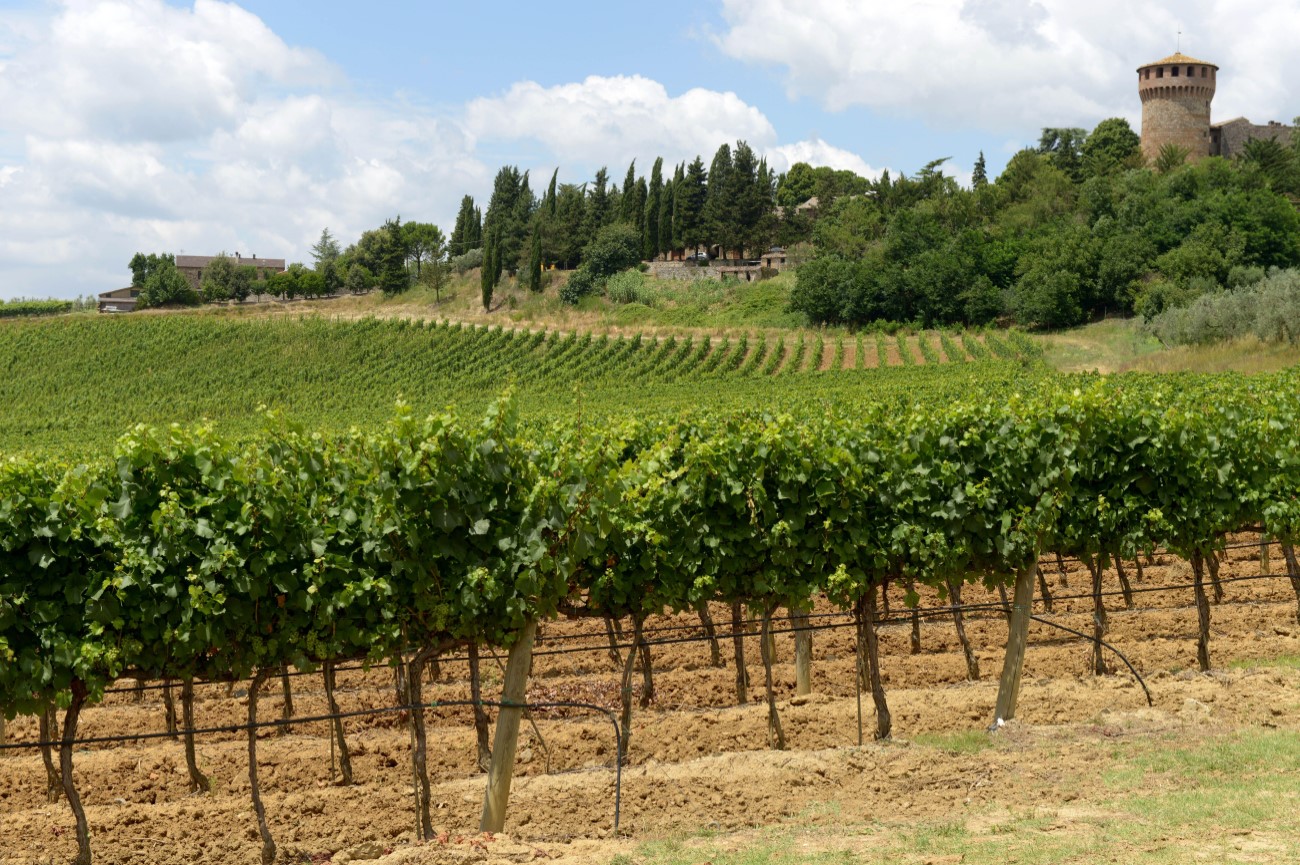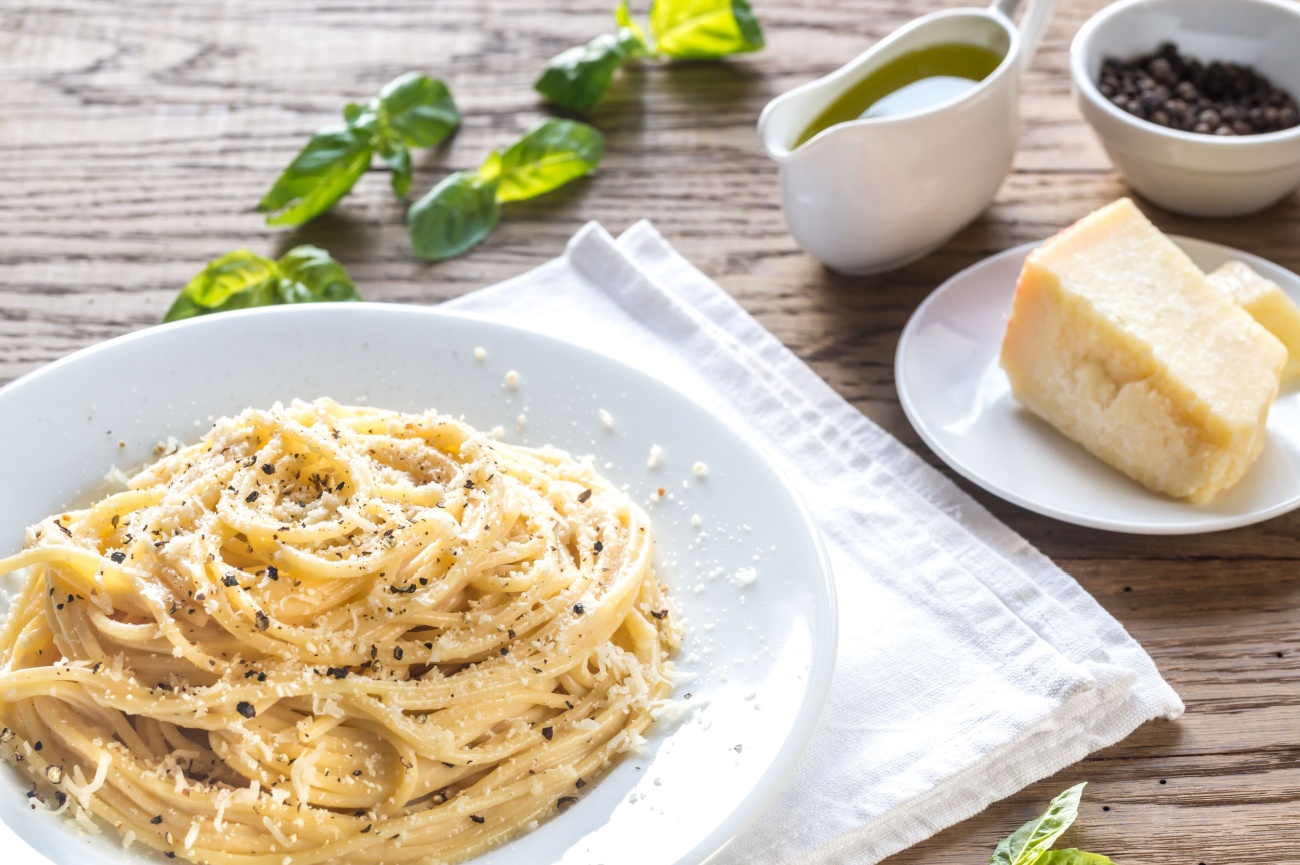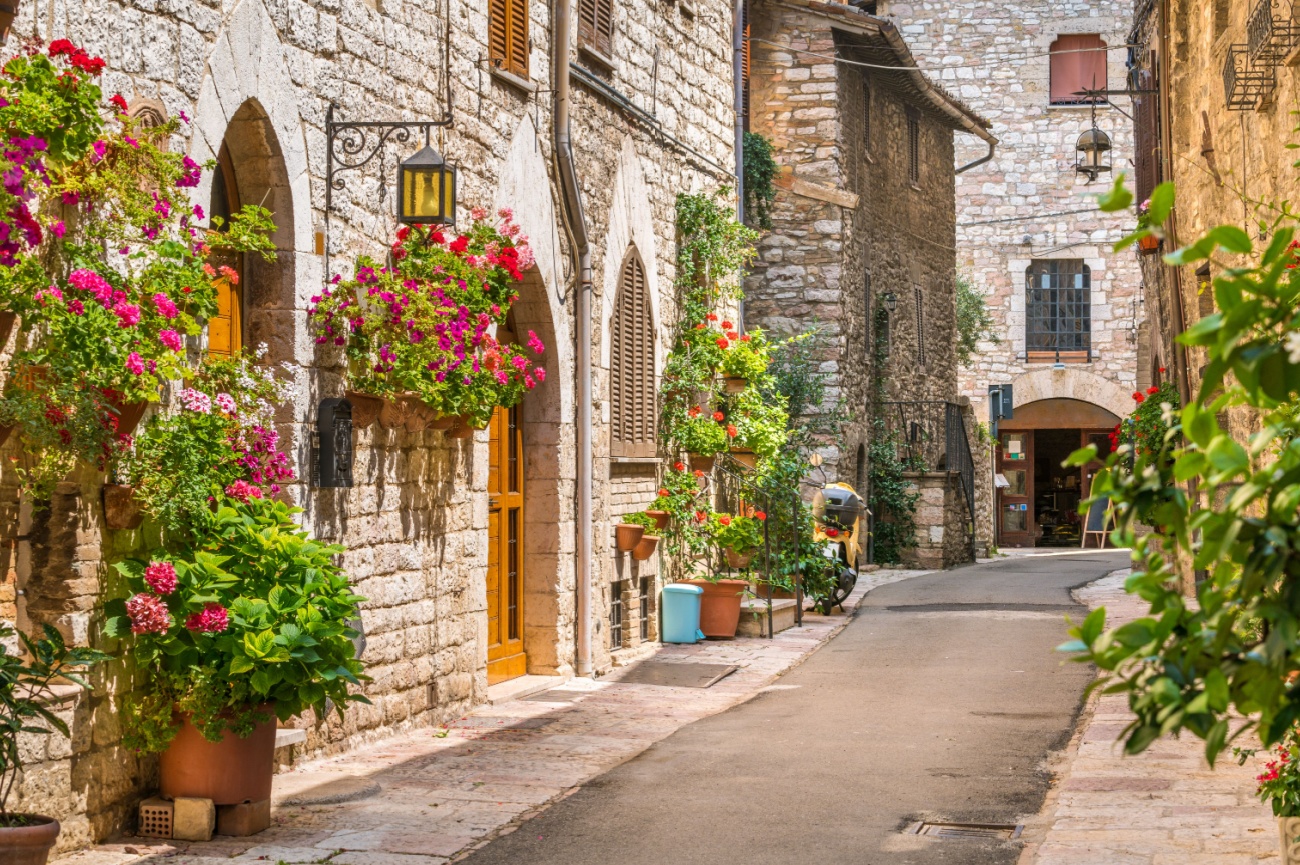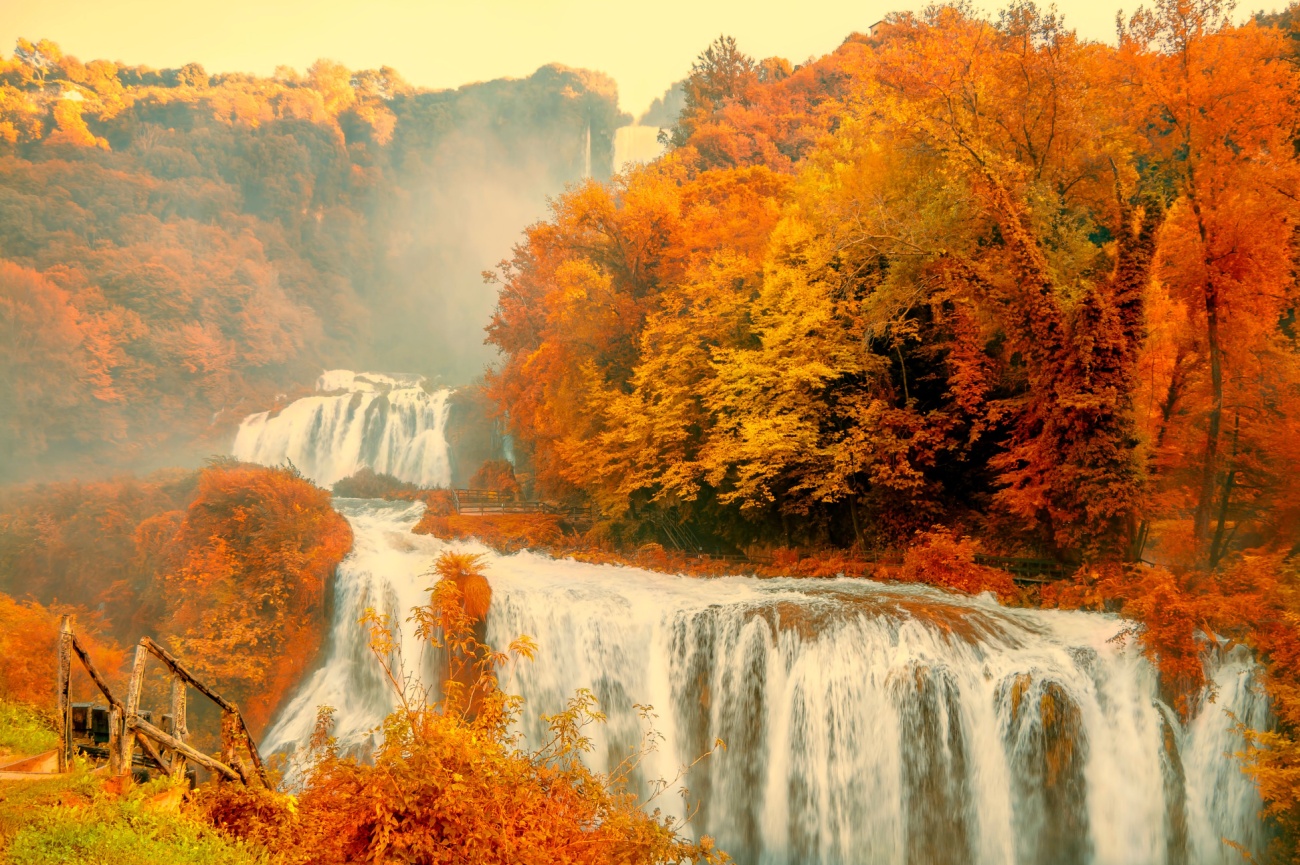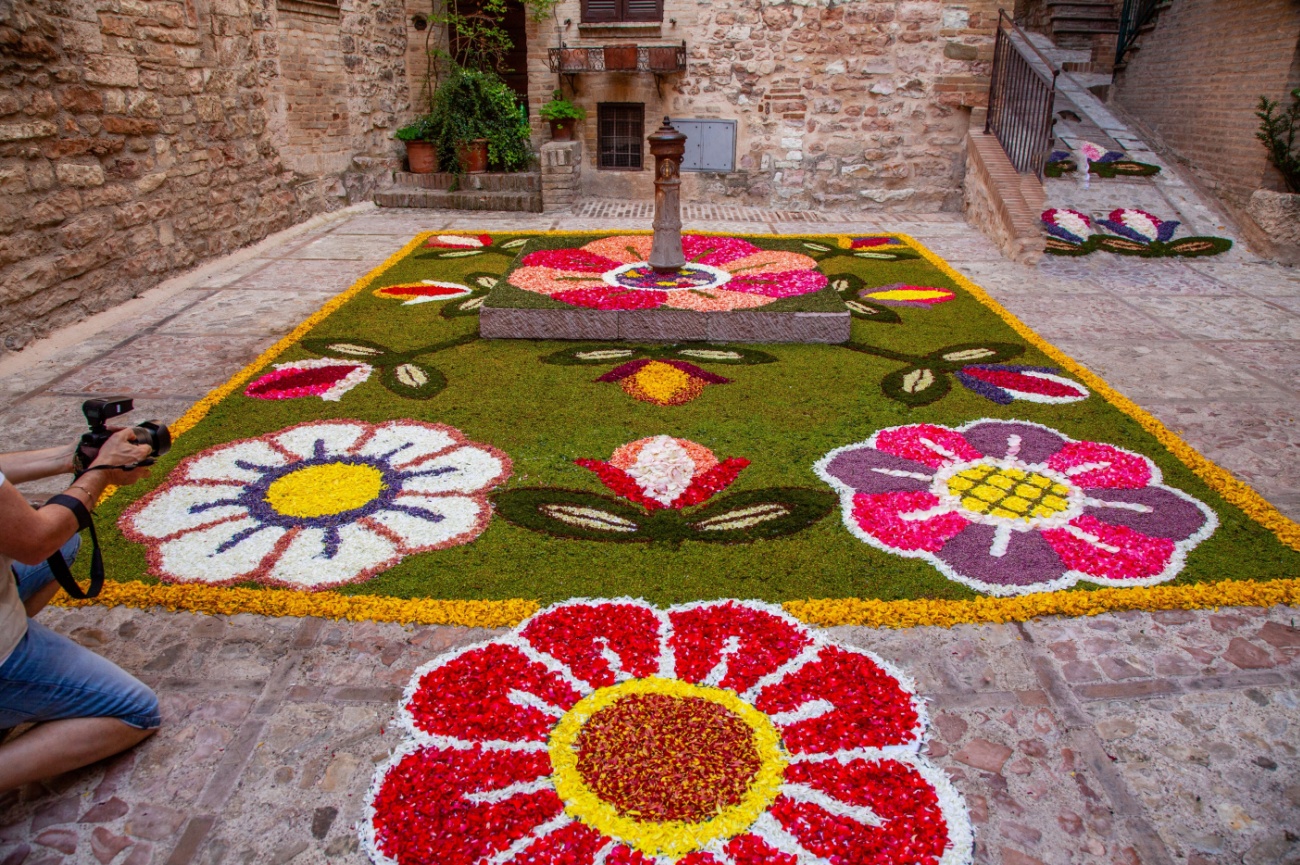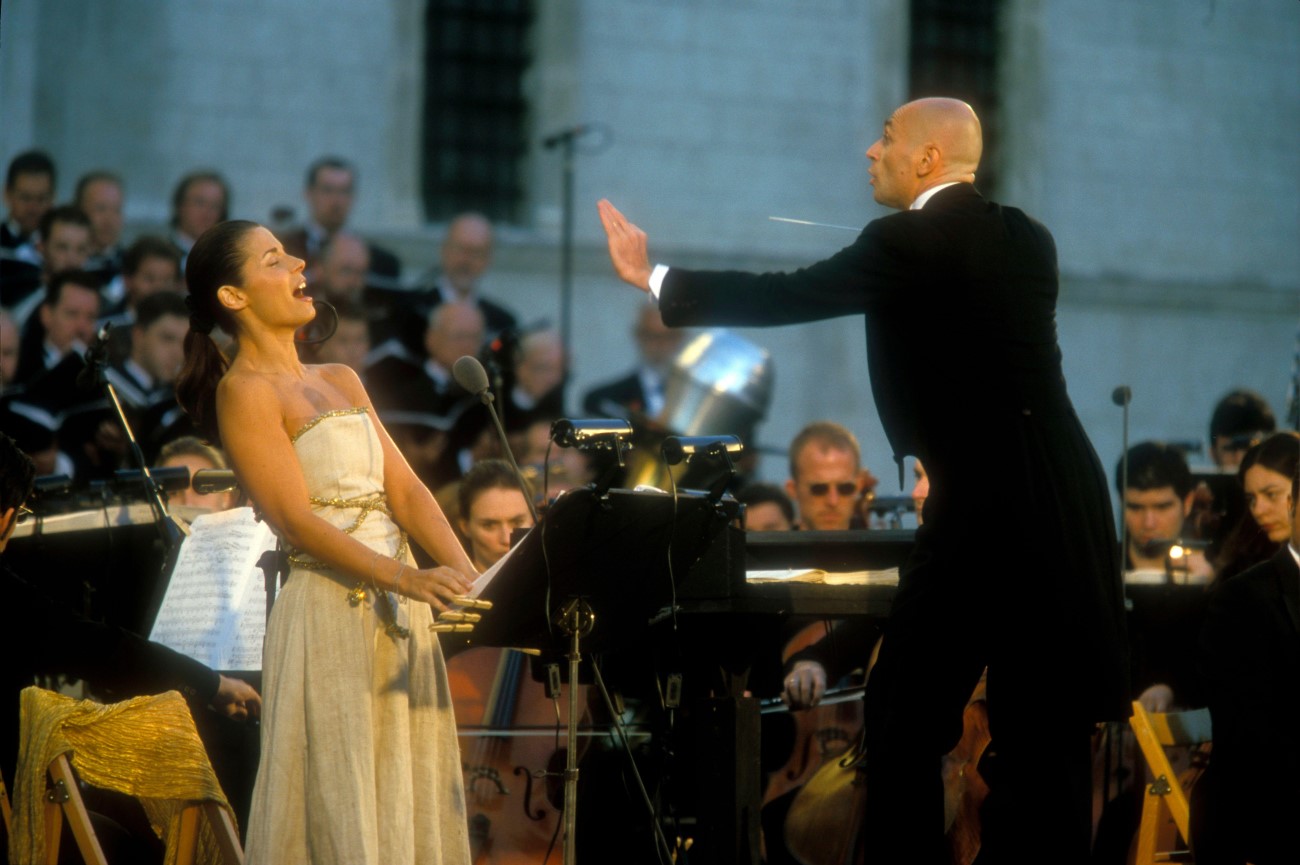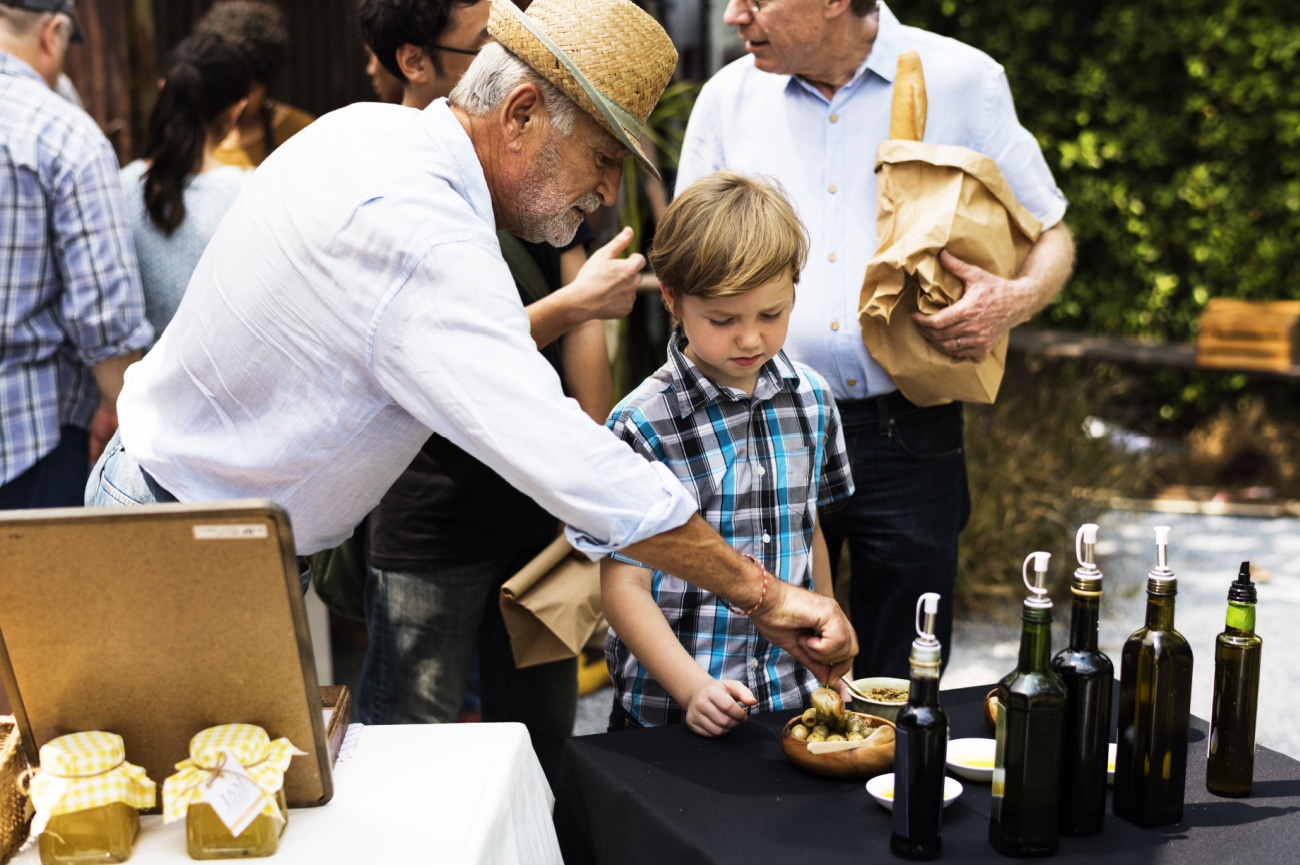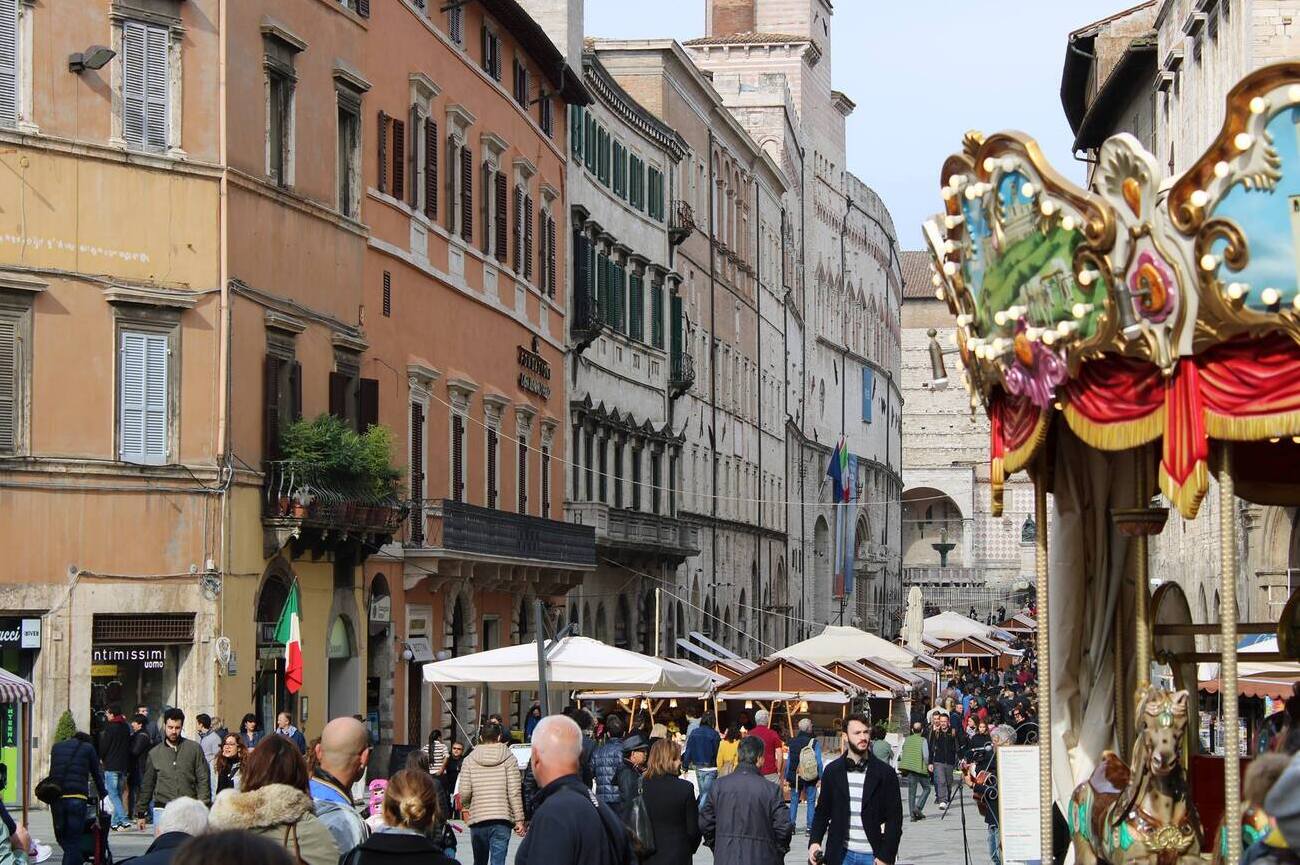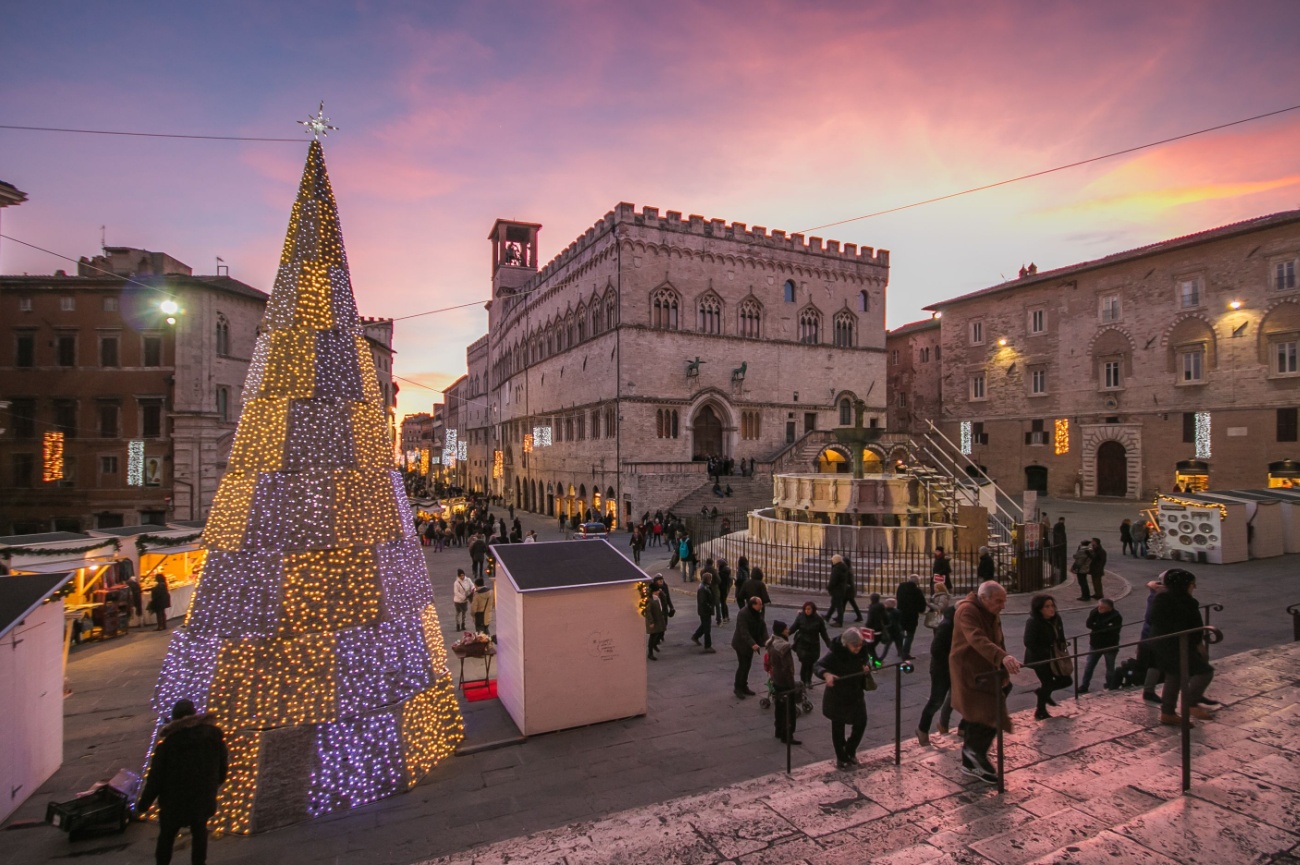Things to Do in Umbria, Italy 5-Day Itinerary
Umbria, referred to as “the heart of Italy" is known for its velvety green hills, medieval towns, and rich history. Its dreamy landscapes, dotted with ancient towers and vineyards, evoke a sense of timelessness.
Tuscany’s landlocked neighbour is about two hours north of Rome, making it easy to get to by train or car. Base yourself in Umbria’s capital of Perugia or the charming town of Spello, then make easy day trips to nearby Assisi, Orvieto, or any number of idyllic villages throughout the region. Zip through hills and valleys past olive groves and old farmhouses. Sampling the different Umbrian hill towns is as enjoyable as sampling the variety of world-class wines produced in this area. Vineyards are scattered throughout the countryside, so pick up a few bottles of white Orvieto Classico or the ruby-red Sagrantino di Montefalco.
Explore Umbria’s ancient Etruscan history through outstanding museum collections and underground tunnels, tour elaborately frescoed medieval buildings and visit one of the world’s most glorious Gothic cathedrals in Orvieto. Peruse the many colourful shops selling locally made ceramics as Umbria has been the centre of pottery production since Etruscan days.
Whether you want to pack in the sightseeing or have a relaxing countryside escape, follow our 5-day itinerary for a blend of art, history, and culinary experiences that offer a well-rounded view of Umbria's natural and cultural beauty.
Day 1 - Perugia

Basing yourself in Perugia, the vibrant capital of Umbria, is a wonderful way to experience a region filled with art, history, and delicious food. Perugia’s medieval architecture includes impressive structures like the Palazzo dei Priori and the Fontana Maggiore. The city is famous for the Umbria Jazz Festival, attracting music lovers from around the world. Food lovers will appreciate the city’s exciting culinary scene, renowned for its chocolate production, truffle dishes, and local wines.
Morning: Historic Center
Start your day in the heart of Perugia at Piazza IV Novembre, where the Fontana Maggiore is sculpted with scenes of the mythological founding of the city. Surrounded by stunning medieval architecture, arcaded porticoes, and the impressive Cathedral of San Lorenzo, this square is a lively gathering place.
One end of the piazza is anchored by the Cathedral of San Lorenzo, dedicated to Saint Lawrence. Built between the 14th and 15th-century, its striking striped façade with a beautiful rose window features a mix of architectural styles. The interior soars with tall, pointy arches and a glittering altar form the focal point. The cathedral’s painted wooden ceiling is remarkable, while the chapels overflow with frescoes and significant artworks.
The square is also home to the Palazzo dei Priori, one of the greatest examples of Italian Gothic secular architecture. The huge, crenellated palace with skinny lancet windows houses the National Gallery of Umbria, whose collection of art includes works by Renaissance artists Perugino and Pinturicchio. The Collegio del Cambio (Hall of Notaries) was added in 1294 to house the powerful money changers guild. The vaulted room is impressively covered with frescoes dating to the late 13th century.
Stroll the medieval streets to the Rocca Paolina, a Renaissance fortress built in 1540 for Pope Paul III. The monumental castle complex was built above parts of the medieval neighbourhood and other Roman and Etruscan buildings, forming a labyrinth of underground passageways. Only a part of the imposing castle remains, but you can walk beneath the citadel through the narrow alleys, small rooms, iron gates, and brick vaults of early Perugia. A unique experience not to be missed!
The Benedictine abbey Church of San Pietro was built in AD 996 over an earlier cathedral dating to the 4th century, then underwent a glorious renovation in 1453. This is worth a look for its ornate arcaded nave and colourful frescoes. Its bell tower is the tallest structure in Perugia.
Enjoy lunch at a local trattoria, sampling Umbrian specialities like strangozzi pasta or roasted porchetta, then shop along the charming streets for local products like Perugia’s famous chocolate and colourful ceramics.
Day 1, morning - Perugia Tour Map
Afternoon: Museums
Spend the afternoon learning about Umbria and Perugia through its museum collections and palaces.
Galleria Nazionale dell'Umbria, housed within the Palazzo dei Priori, is home to an impressive collection of Renaissance art, including works by Perugino and Pinturicchio and other Italian masters. The rooms and loggias are full of works that showcase Umbria’s artistic heritage from the medieval era through the 19th century.
Th elegant Palazzo Sorbello House Museum displays exquisite furnishings, art collections, and period décor that puts into context the intellectual life and artistic styles of the 17th and 18th-century nobility in the region. Explore the beautifully preserved frescoed rooms and apartments full of the family’s artefacts, paintings, portraits, and porcelain.
You do not want to miss National Archaeological Museum of Umbria as it holds one of the most important archaeological collections in central Italy. An impressively cavernous 13th-century monastery displays items from the Paleolithic to the Bronze Ages, and ancient Etruscan and Roman settlements throughout Umbria. The cloister houses a reconstructed tomb of a local 1st-century BC family. Throughout the museum are Etruscan handicrafts and pottery from the Hellenistic period.
Day 1, afternoon - Perugia Tour Map
Where to Eat in Perugia
As the day winds down, head to a rooftop bar for sparking views and cocktails or try one of our suggested restaurants to enjoy Umbrian food and wine at its best.
Fine
dining
- Ada Ristorante: A gastronomic experience awaits you in this contemporary restaurant retrofitted into an old granary near the town’s ancient walls. The à la carte and tasting menus are heavy with meat and fish options imparted with flavours of the region. The restaurant prides itself on the chef’s creative plating, superb wine cellar, and stellar service.
- Ristorante Al Tartufo: As the restaurant’s name suggests, the region’s “black diamond” turns up in just about every dish on the Truffle Restaurant’s menu, including dessert. Earthy aromas waft through the sleek modern dining room while warm colours and exposed stone add romance to dining in the vaulted cellar. Al Tartufo’s outdoor patio overlooks one of Perugia’s most evocative piazzas.
Casual Dining
- Dalla Bianca Restaurant: Explore Umbrian cuisine in a casual trattoria-like setting. The menu is extensive and reasonably priced, while the house wines are superb local varieties. Find favourites like homemade pasta, Umbrian chicken and pork dishes, and great salads and antipasti. The popular Dalla Bianca is in a great location near the archaeology museum and easy to find.
- La Prosciutteria Perugia: The delightful little restaurant near the cathedral is a riff on an old-timey osteria, full of eclectic antiques and vintage decor. It’s a lively place to stop in for a charcuterie board and a glass of wine or cocktail. The large chalkboard lists daily specials, which include occasional hot dishes, but La Prosciutteria is the place for salads, sandwiches, and small bites.
Markets
Perugia has many weekly farmers' markets. Piazza del Circo carries farm fresh produce and other handicrafts. Piazza Danti hosts an open-air market also selling seasonal produce, home goods, handbags, and clothing. Coldiretti Mercato Contadino Perugia is a small farmers' market that takes place at Pian di Massiano.
Day 2 - Orvieto

Orvieto, Umbria’s grand hill town, is built high on a bluff of volcanic tufa and is home to one of Italy’s most spectacular cathedrals, which can be seen for miles. If driving, park your car at the base of the hill and ride the steep funicular to the top where a shuttle transfers you to the cathedral square.
Built during the Etruscan era, Orvieto has an intriguing underground network of tunnels, galleries, and cellars, while above ground, is a delightful town with well-preserved medieval architecture.
Umbria has strong links to the ceramics industry, with Orvieto at its centre. The town is also renowned for its white wine, particularly Orvieto Classico. With an ancient history and breathtaking views from its hilltop perch, Orvieto is a must-visit when exploring Umbria.
Morning: Duomo di Orvieto
Start your day at the gleaming 13th-century Orvieto Cathedral or Cathedral of the Assumption of the Virgin Mary (Cattedrale di Santa Maria Assunta). Its lively Gothic façade swirls with golden mosaics and a lacy rose window. Intricate sculptures depicting scenes from the bible climb along the exterior columns to the gable, where a regal Virgin Mary is crowned by Christ.
Inside, the cathedral’s nave is an optical illusion as it was built wider at the west end and narrower near the altar, so it appears longer than it is. The horizontal stripes add to this trick of the eye. Do not miss the infernal Apocalypse and Last Judgement frescoes by Luca Signorelli, which served as inspiration for Michelangelo’s Sistine Chapel.
Afterwards, take a stroll through the charming cobblestone streets, stopping at a local café for pastries and espresso or lunch of local Umbrian dishes such as pici pasta or wild boar.
Work off your lunch by climbing 250 steps up the Torre del Moro (Moor’s Tower) for commanding views over the Umbrian countryside.
Head to Piazza della Repubblica to see the Palazzo Del Capitano, also referred to as Palazzo del Podesta. The 13th-century palace was built as the residence of the chief magistrate, which reflects Perugia’s political and municipal power of the time.
Visit the Etruscan Museum (Museo Claudio Faina e Civico) to learn about the town's ancient history and explore one of the largest archaeological collections in Italy.
Take a guided tour of the town beneath the town. Orvieto's Underground Tunnels and caves reveal fascinating aspects of the town's rich past. Beneath its winding streets lies an underground labyrinth, which includes ancient Etruscan wells, wine cellars, and storerooms that show the ingenious ways early inhabitants adapted to their environment.
The most notable underground site is the Pozzo di San Patrizio (St. Patrick’s Well), a deep cistern with a unique double helix staircase spiralling around the well, designed to allow one-way traffic flow to and from the water.
As the sun sets, enjoy a leisurely dinner at a restaurant with a terrace overlooking the unforgettable landscape. Pair your meal with a glass of Orvieto Classico, the region's famous white wine.
Day 2 - Orvieto Tour Map
Whete to Eat in Orvieto
Fine dining
- I Sette Consoli: Elegance and simplicity define this welcoming restaurant set in a quiet little square in the heart of Orvieto. Enjoy dinner al fresco with a romantic view of the Duomo from the gazebo. Their signature dishes are eggplant cappellacci and pigeon with cherries but save room for homemade dessert and a fine selection of cheeses. The large cellar has around 900 labels from all over the world and around a hundred types of spirits.
- Coro Ristorante: Nestled in the splendid Palazzo Petrus, Coro Ristorante offers fine dining among the vaults of a deconsecrated 16th-century church. The space is atmospheric with high ceilings, exposed stone, and artworks illuminated with soft lighting. In contrast to the historic setting, the menus are innovative using traditional Umbrian ingredients in modern ways.
Casual Dining
- Bistrò Miranda Orvieto: Just a few steps from Piazza della Repubblica, in the historic centre of Orvieto is a jazzy little restaurant serving upscale Umbrian comfort food, with most of the ingredients sourced very locally. Jazz music fills the cosy modern dining room, and the service is as peppy.
- Trattoria del Moro Aronne: The well-conceived menu features simple, high-quality Umbrian favourites like robust pasta dishes, gnocchi, wild boar, and Orvieto wines. The rustic trattoria, located near the Piazza del Popolo, might feel like your Nona’s dining room decorated with photos of famous musicians.
Market
Vendors in the twice-weekly market in Piazza del Popolo sell fresh fruit, vegetables, salamis, porchetta, and cheese. Swing by to put together an afternoon picnic.
Day 3 – Assisi

Take a 30-minute drive or train ride from Perugia to Assisi, famous as the birthplace of St. Francis, the patron saint of Italy who was born here in 1180. The town embodies a unique blend of history, art, and spirituality. The most significant site is the Basilica of San Francesco, a UNESCO World Heritage site rising above the bucolic countryside. Spend the day touring the historic centre of Assisi, where a peaceful spirit is palpable.
Devote time to Assisi’s crowning glory, the Basilica of St. Francis. Immerse yourself in the upper Basilica Superiore’s sublime fresco cycles by the medieval master Giotto. More glorious gothic artworks by Cimabue, Lorenzetti, and Simone Martini are found in the lower Romanesque Basilica Inferiore, along with the crypt where St. Francis is buried,
Bonacquisti Palace, a 16th-century palace overlooking Piazza del Comune, has a non-descript façade, but magnificently restored ceilings and ancient walls.
Piazza del Comune, located in the centre of town, was built in 1337 on the site of an ancient Roman forum. It's surrounded by other medieval buildings, including the 13th-century Priors' Palace. Also here, S. Maria sopra Minerva retains the original Corinthian columns and façade of a 1st-century Roman Temple to Minerva converted into a church.
Lovers of medieval art need to check out the Basilica di Santa Chiara. Built in the 13th century, the church is dedicated to St. Clare, the founder of the Order of Poor Ladies. The church is renowned for its Gothic architecture and beautiful frescoes by Giotto and Cimabue. The interior features a colorful vaulted altar, ornate chapels, and the tomb of Saint Clare.
While the city generally celebrates Saint Francis, Assisi’s Cathedral of San Rufino (Duomo di Assisi) is dedicated to San Rufino, a 3rd-century bishop from Turkey who was locally martyred. The façade is uniquely embellished with plant motifs and animal figures. Inside the cathedral is a 2nd-century BC Roman cistern and a part of the original temple wall. According to legend, Saints Francis and Clare received the sacrament in the church’s baptismal font.
Make a short walk up to the Rocca Maggiore, a medieval fortress that has loomed over Assisi since the 14th century. Climb the winding staircases to for commanding 360-degree views over the Umbrian valley. Tour the massive towers and courtyards of the upper and lower castle complexes, then take a quick look at the museum’s displays and reconstructions of the mighty Rocca Maggiore.
Enjoy a meal at a local trattoria, where you can try Umbrian specialities like truffle pasta or porchetta and a glass of local wine.
Day 3 - Assisi Tour Map
Eremo delle Carceri
If you have extra time, do as St. Francis did and retreat into the folds of the mountains above Assisi to the sanctuary where he frequently went to meditate and pray. Tour the religious complex with cloisters, chapels, and monk’s cells carved into the hillside. Follow the bridge into the forest to experience the serenity and solitude sought by the Franciscan monks for 800 years.
Day 3 - Eremo delle Carceri, umbria Tour Map
Where to Eat in Assisi
Fine
dining
- Ghiotto Ristorante: A great spot for local Umbrian cuisine can be found up the hill from Basilica San Francisco, tucked away from the crowds. Simply sophisticated dining rooms are cosy with exposed beam ceilings and stone walls. The menu features flavours from across Italy, but Ghiotto is particularly beloved for its homemade bread and baked goods that can be carried out separately. Get the focaccia!
- La Locanda del Cardinale: A refined dining experience begins with beautifully prepared contemporary cuisine and carries through to the restaurant’s unique setting. The old stone-vaulted house, built over an ancient Roman villa with mosaics visible through the glass floors, makes this a truly memorable meal. The menu is small and exquisite, garnering Michelin nods.
Casual Dining
- La Fortezza Restaurant: The focus of this restaurant is on authentic Umbrian home cooking like cannelloni made with fresh pasta filled with veal ragu. The popular restaurant is one of many in the Piazza del Comune but is worth seeking out for the distinctly Umbrian pasta strangozzi with truffle sauce and nice seafood options.
- Taverna dei Consoli: This relaxed second-floor restaurant is in an enviable location on Piazza del Comune. Fill up on tagliatelle with truffles and a few glasses of vino on the shady elevated terrace overlooking the bustling square. Be patient with the service as this is in the tourist centre of Assisi but slow down and enjoy people-watching from your perched position.
Day 4 – Bevagna and Spello

Spello and Bevagna are two lovely little towns about 15 minutes apart and 30 minutes from Perugia, which makes them easy to visit on the same day. Each has medieval charm and a rich heritage, offering a perfect blend of history, art, and culture. The legendary account of St. Francis of Assisi preaching to the birds took place in a field outside Bevagna.
Morning: Bevagna
Bevegna is nestled in the beautiful Umbrian countryside, with dreamy stone buildings, Roman ruins, and a charming central square. Piazza Silvestri is home to one of Umbria’s finest Romanesque churches. San Michele, with its flat façade, rose window, and tall bell tower, has kept watch over the square since 1070. Medieval architecture buffs will appreciate the inlaid pink and white limestone arched doors and the dynamic carvings of Saint Michael slaying the dragon.
The Palazzo dei Consoli, built in 1270 as a town hall, dominates the square. It is adjacent to another Romanesque church, San Silvestro. The 12th-century church has interesting friezes of dragons, plant motifs, hunting scenes, and a medieval crypt.
Bevagna’s 2nd-century Roman bathhouse is one of the few visible vestiges of ancient Roman ruins in this town. You can visit the terme’s mosaic floor to see the fanciful sea creature motifs and find remains of a temple near the Porta Molini, which served as the medieval gate to the city.
Bevagna is famous for its annual festival, the Mercato delle Gaite, which celebrates its medieval history with food, crafts, and costumed reenactments. Bevagna is also renowned for its excellent local wines and olive oil, making it a delightful stop for visitors interested in authentic Umbrian culinary experiences.
Day 4, morning - Bevagna Tour Map
Afternoon: Spello
The colourful hilltop town of Spello is known for its beautifully preserved medieval architecture, Roman ruins, incredible viewpoints, and famous flower festival. The medieval city was built on the 1st-century BC Roman walls, which remain, offering a glimpse into the town's ancient past. As you walk along the vibrant flower-filled streets around the historic centre, you will pass by several of the original gates and towers dating to Roman and medieval times.
A visit to the Villa dei Mosaici di Spello, gives insight into ancient Spellum (Spello), and is one of the most important Roman sites in Umbria. Excavations have uncovered dozens of rooms with well-reserved mosaic floors decorated with geometric decorations, wild animals, mythical creatures, and detailed scenes from everyday life. Walk through the ruins of a heated bath and a dining room, then see the 3-D reconstructions of the villa.
As you stroll around town, take note of the various columns, capitals, and sculptures repurposed from demolished Roman buildings. Fluted columns are tucked into medieval buildings. Ancient capitals are used as planters, while remnants of architectural elements can be found in the church of Santa Maria Maggiore and San Lorenzo.
Another top attraction of Spello is Santa Maria Maggiore, a gothic church given a Baroque facelift. The exterior is stark in contrast to the interior with remarkable frescoes painted in 1501 by Bernardino di Betto, known as Pinturicchio.
Spello is renowned for its annual Infiorata, a flower festival held in June, where locals create elaborate floral carpets on the streets. With its picture-perfect buildings covered in flowerpots, ancient architectural heritage, and charming atmosphere, Spello is a tranquil escape from busy tourist towns.
Day 4, afternoon - Spello Tour Map
Where to Eat in Spello
Fine
dining
- Serpillo, Bevagna: This romantic, rustic restaurant is set among the vaultes of an old olive mill under a covered medieval passage. Regional and Italian cuisine is given a modern flair on the small, but mighty menu. The restaurant’s interior is absolutely charming, with a few tables tucked along the cobbled street for al fresco dining on a warm summer evening. If visiting in the fall and winter, anticipate dining amidst hundreds of candles, making this a truly romantic occasion.
- Il Molino, Spello: The warm and inviting vaulted dining room, combined with its chic decor, is a perfect setting for a relaxed, but upscale dining experience. The dishes are innovative interpretations of traditional Cumbrian cuisine. We highly recommend Il Molino if you are a gourmand looking for fine food and superb service.
Casual Dining
- Ottavius Hosteria d'autore, Bevagna: The picturesque restaurant in the heart of Bevagna is a good spot to indulge in the gnocchi al Sagrantino, their signature dish cooked in Sagrantino wine. Local artworks cover the walls of the 18th-century stone dining room.
- Ristorante Il Pinturicchio, Spello: If you are in the mood for traditional Umbrian meat dishes or hand-rolled pasta, head to Il Pinturicchio, the area’s longest-operating restaurant for lunch or dinner. All the ingredients used here are sourced from the Umbrian region, from spelt flour and olive oil to truffles and wine. The cavern-like dining room has a warm, historic vibe that is elegant but unfussy.
Day 5 – Todi and Montefalco

Todi and Montefalco are about 30 minutes apart, each encapsulating the essence of Umbrian charm. These two towns can be visited in a day and are ideal for those seeking history, culture, and authentic culinary experiences.
Morning: Todi
The 2,000-year-old walled town of Todi, perched prominently on a hilltop overlooking the Tiber River Valley, played an important defensive role in the Etruscan and Roman times. It is known for its medieval architecture and spectacular countryside views. Todi’s cobblestone streets wind through the centro storico to the Piazza del Popolo, where several significant buildings surround the square. Todi’s relaxed atmosphere, combined with its beautiful landscapes and fewer tourists offers an laid-back Umbrian experience.
Begin a walking tour at Todi’s main square, Piazza del Popolo. It is built above a former Roman forum and is considered one of Umbria's finest piazzas. There is no shortage of great medieval buildings to gawk at.
The majestic Palazzo dei Priori (Priors’ Palace) with its fortress-like crenelations, stands on the south end of the Piazza. Built at the end of the 13th century, the palace was enlarged during the Renaissance and is home to the Galleria Nazionale dell’Umbria and a few heavily frescoed meeting halls. The well-known bronze sculpture of an eagle, the symbol of Todi made by Giovanni di Gigliaccio in 1339 hangs on the outer wall overlooking the square.
Also in the Piazza del Popolo is the gothic Palazzo del Capitano, built as a courthouse around the same time as the Prior’s Palace. As the second public building built on the square, it was called Palazzo Nuovo (New Palace) to distinguish it from the earlier Palazzo del Popolo. Today, it houses the Etruscan-Roman Museum and Pinacoteca Civic Museum which is on the top floor stretching between the Palazzo del Capitano and the Palazzo del Popolo, linked by a 17th-century walkway.
Opposite the palace sits the boxy Romanesque Cathedral of Santa Maria Annunziata atop a long staircase. The portals are richly sculpted with saints and coats-of-arms while a trio of rose windows let in the light. The interior is stark, but two points of interest are the 13th-century wood and tempura crucifix and a 16th-century mural replicating scenes from Michelangelo’s Sistine Chapel.
Roman cisterns beneath the square form part of a complex system of subterranean tunnels and Etruscan, Roman and Medieval wells dating from the 2nd century B.C. The cisterns would fill with water streaming from the springs at the top of the hill near the fortress and formed part of a Roman urban planning project to supply water to the town.
Don’t miss the beautiful 15th-century Church of San Fortunato for its impressive architecture, frescoes, cloisters, and tomb of Beato Jacopone, Todi’s beloved patron saint. While the façade was never completed, the portals are heavily sculpted with apostles, angels, and vining floral motifs. Equally ornate is the interior choir screen with its wooden stalls that consume the centre of the church. Climb to the top of the imposing Gothic bell tower dating to 1460 for commanding views over the valley.
Stop by the Tempio di San Bernardino, a stunning example of Renaissance architecture built in 1452, only a short walk from the town centre.
Day 5, morning - Todi Tour Map
Afternoon: Montefalco
Montefalco, often called the "Balcony of Umbria," is a small hill town surrounded by olive trees and grape vines and is best known for its Sagrantino red wine. Its environmental, cultural and artistic heritage has earned Montefalco a spot as one of The Most Beautiful Villages of Italy.
On your way to or from Montefalco, stop by Arnaldo Caprai Winery, a vineyard renowned for its robust red wine Sagrantino di Montefalco. Enjoy a tour and tastings and learn about the Umbrian winemaking process before going into town.
Operate at a leisurely place in Montefalco as you stroll through the medieval streets, which all converge at the unusual circular Piazza del Comune. The round square is dominated by the 14th-century town hall. Stop in to see the magnificent floor-to-ceiling frescoes at the Oratory of S. Maria di Piazza.
The top attraction in Montefalco is the Church of San Francesco, constructed between 1335 and 1338. The pastoral fresco cycle in the apse of the church tells stories from the life of St. Francis and emphasises the importance of vine cultivation even then. The church museum displays paintings, textiles, liturgical instruments, and frescoes from other area churches. The crypt is worth a visit to see medieval artefacts and the ancient cellars of the monastery, with well-preserved wine-making equipment.
Day 5, afternoon - Montefalco Tour Map
Where to Eat in Montefalco
Fine
dining
- Osteria Valle, Todi: Beef and truffles form the base of the menu at this simple yet elegant osteria. While the atmosphere may feel cosy and laid-back, the food and service are consistently high quality. Find this hidden gem a few streets from the Piazza del Popolo. Go for dinner and stay for the tiramisu!
- Ristorante Il Coccorone, Montefalco: Coccorone is in the historic centre of Montefalco. The restaurant's decor reflects the rustic beauty of the region, making it a cosy spot to try refined Umbrian cuisine. The menu highlights handmade pasta, local meat dishes, and homemade desserts.
Casual Dining
- La Cantina Del Mercataccio, Todi: This is a fantastic choice for a meal with a view. Enjoy the house specialities of cacio e pepe, ravioli, or sea bass with a glass of local white wine while overlooking the Umbrian valley from the pretty covered terrace.
- InBolla Enoteca & Cucina, Montefalco: The lively wine bar and restaurant serves a variety of seasonal dishes, including fresh pasta, meats, and cheeses. Stop in here if you are looking for small plates that are just a little different and paired with a fabulous selection of wines by the glass. Take your tasty morsels to the rooftop terrace for great views.
Where to Stay in Umbria
- Reschio Hotel, Perugia 5*: The spectacular hotel is in a 1,000-year-old castle set within a private estate. The atmosphere is a blend of rustic elegance and modern sophistication. Many of the beautifully designed rooms have commanding views of the surrounding countryside. Hotel amenities include a wellness centre, spa, pool, and various outdoor activities like tennis, hiking and horseback riding.
- Sina Brufani, Perugia 5*: Sina is a luxurious boutique hotel housed in a huge building in the heart of Perugia near the cathedral. The hotel has a rich history and elegant ambience, with stunning views of the Umbrian valley. The rooms are sumptuously decorated with antiques and lavish textiles. The panoramic terrace is perfect for enjoying breakfast or a glass of wine while taking in the sweeping views. Other amenities include a wellness centre, spa, and a tranquil indoor pool that adds to the sophistication. Sina Brufani is a great choice for those seeking luxe lodging in a great location to explore city's vibrant shopping, dining and attractions.
- Locanda Palazzone, Orvieto 5*: Enjoy a unique stay in a historic castle dating to the 11th century. Nestled in the Umbrian countryside near Orvieto, the palace is a peaceful retreat surrounded with vineyards and hills. Each room is uniquely decorated with modern rustic four-poster beds and wrought iron details, and most provide beautiful views from its prominent position on top of a hill. Explore the property at Locanda Palazzone to find lovely outdoor spaces, including a terrace, gardens, and courtyards – all the things a castle should have. It is just outside the walled town of Orvieto, known for its stunning cathedral and rich history.
- Priori Secret Garden, Perugia 4*: This charming urban hotel, which is quietly tucked away from the bustle, has a welcoming atmosphere, tranquil green spaces, and comfortable rooms blending traditional and modern decor. The windows in most of the rooms open to lovely glimpses of the city or over the rooflines into the hills. Enjoy your breakfast in the garden, relax in the peaceful outdoor spaces, and take advantage of the hotel’s downtown location to explore the city's rich history and vibrant atmosphere.
- La Bastiglia, Spello 4*: This delightful 4-star hotel, set in a former monastery in Spello, offers a nice blend of modern comfort with ancient character. The rooms and suites are decorated in warm colours and views over the town or countryside. The hotel has a reputable restaurant that focuses on classic Umbrian cuisine, with a terrace to enjoy a meal with spectacular panoramic views. After a day of exploring, relax in the pool, unwind with a cocktail in the garden, or pamper yourself with a treatment at the spa.
- Hotel Il Palazzo, Assisi 3*: Located in the historic heart of Assisi, the beautifully restored building features elegantly designed rooms with simple but comfortable furnishings. Many of the rooms open to magnificent views of the surrounding hills and the iconic Basilica of San Francesco. Enjoy your breakfast in the hotel's peaceful garden. The central location makes it easy to explore Assisi's rich history on foot and is reasonably priced year-round. Agriturismo Consider an agriturismo farm stay for an authentic laidback countryside experience. Camiano Piccolo is a 16th-century farmhouse on a hill overlooking the Spoleto Valley. The family-run estate is an easy 15-minute drive to Montefalco or Todi. The owner-chef creates true farm-to-table meals using vegetables grown in the restaurant’s kitchen garden, local wines and olive oils. Chef will entertain you with lively cooking demos and after a meal on the scenic terrace, relax in the large outdoor swimming pool.
Other
Things to See in Umbria
- Gubbio: Gubbio, the oldest town in Umbria is 45 minutes by car from Perugia. You will understand why Gubbio is dubbed the “city of stone” while exploring the well-preserved architecture and picturesque piazzas. The most notable landmarks are mammoth Palazzo dei Consoli and museum, Gubbio Cathedral’s 16th-century paintings and a baroque chapel, and the Roman theatre.
- Torgiano: Situated along the banks of the Tiber River, Torgiano is only 20 minutes by car from Perugia and is particularly famous for its rich winemaking tradition of robust red wines. Must-see sites are the beautiful Church of San Bartolomeo, the Palazzo Graziani, and the Wine Museum, which showcases the region's viticultural heritage.
- Marmore Waterfalls: Italy's tallest waterfall, located in the Nera River Park is about one hour from Perugia. The dramatic man-made waterfall was built by the ancient Romans in 271 BC. The cascades plunge 165 meters in three tiers and are surrounded by lush greenery and beautiful hiking trails with breathtaking views.
- Monti Sibillini National Park (Parco Nazionale dei Monti Sibillini): The mountainous area, with beautiful river valleys and forests, is a natural treasure just one hour from Perugia. Outdoor enthusiasts take to the trails for hiking, mountain biking, and skiing. Nature lovers can find a variety of wildlife, including wolves, deer, and lots of bird species.
- Spoleto: The captivating town of Spoleto has a charming medieval centre, perfect for casually wandering the narrow passages. The top attractions are the cathedral with a major fresco cycle by the Renaissance painter Filippino Lippi, the massive Rocca Albornoziana fortress, and the iconic Ponte delle Torri, a medieval aqueduct that spans a spectacular gorge.
- Lake Trasimeno: One of the largest lakes in Italy, Lake Trasimeno is a peaceful retreat surrounded by gently rolling hills, olive groves, and vineyards. Dotted with charming medieval towns like Castiglione del Lago and Passignano sul Trasimeno, the lake is ideal for relaxed boat rides, lakeside picnics, and walks along the scenic promenades. Ferries connect the mainland to the lake’s three islands, including Isola Maggiore, known for its lace-making traditions and quiet village atmosphere.
- Streams of Rasiglia: Often referred to as the “Village of Streams,” Rasiglia is a tiny hamlet where crystal-clear waters flow through a network of canals, fountains, and stone footbridges. This fairy-tale village seems frozen in time, with bubbling brooks running between ancient mills and flower-lined houses. The sound of rushing water is ever-present as you explore its cobbled streets, making it a soothing and unique escape. Rasiglia’s charm lies in its authenticity and visual appeal, making it a favourite spot for photography and quiet exploration.
- La Scarzuola: Hidden in the Umbrian hills near Montegabbione lies La Scarzuola, an extraordinary site that defies categorisation. Designed by surrealist architect Tomaso Buzzi, this theatrical dreamscape is built around a 13th-century Franciscan convent and features whimsical sculptures, esoteric symbols, and miniature cityscapes. Each structure is steeped in mysticism and artistic philosophy, making a visit here feel like stepping into a living labyrinth of imagination. Guided tours provide insight into the visionary ideas behind the architecture and its fascinating symbolism.
- Vicolo Baciadonne: Nestled within the delightful town of Città della Pieve, the Vicolo Baciadonne (Kiss of the Women Alley) is said to be the narrowest alley in Italy. Measuring barely 50 centimetres wide, it’s just wide enough for one person – or two people to share a kiss. This quirky passageway has become a symbol of the town’s romantic spirit and is a must for travellers seeking something offbeat and memorable.
- Monte Cucco Regional Park: A natural paradise in the Apennines, Monte Cucco Regional Park is renowned for its dramatic karst landscapes, rich biodiversity, and extensive trail network. The park’s limestone massif is home to one of the largest cave systems in Italy, perfect for adventurous caving tours. Hikers and mountain bikers can explore peaceful beech forests, wildflower meadows, and windswept peaks, while thrill-seekers come here to paraglide from the summit. The views from Monte Cucco extend across both Umbria and Le Marche, offering a true sense of untamed wilderness.
- Le Fonti del Clitunno / Temple of Clitumnus: Set beside a tranquil spring near Campello sul Clitunno, Le Fonti del Clitunno is a serene spot steeped in myth and history. The clear waters inspired poets from Virgil to Byron, and the nearby Temple of Clitumnus, a small early Christian church, is recognised as a UNESCO World Heritage site. Surrounded by willows and swans, the springs are perfect for a gentle stroll or a quiet picnic. The temple’s classical façade, with Corinthian columns and faded frescoes, adds a touch of ancient grandeur to this peaceful corner of Umbria.
- Basilica of San Salvatore, Spoleto: A rare example of early Christian architecture in Italy, the Basilica of San Salvatore dates to the 4th or 5th century and is part of a UNESCO-listed group of Longobard sites. Just outside Spoleto’s historic centre, the church features a striking classical façade, Corinthian columns, and a sober, spiritual interior. Its enduring structure and symmetry reveal the transition from Roman to medieval architectural styles.
- Tempio di Sant'Angelo – Chiesa di San Michele Arcangelo: Often overlooked by visitors, this ancient round church is among Perugia’s oldest religious sites. Dating to the 5th century, the Tempio di Sant’Angelo, also known as the Church of San Michele Arcangelo, is an early Christian marvel with a striking circular plan and sixteen Corinthian columns reused from Roman buildings.
- San Damiano, Assisi: Just outside the town walls of Assisi, San Damiano is a peaceful Franciscan convent where St. Francis is said to have received his divine calling. The simple stone structure, surrounded by olive trees and wildflowers, was also home to St. Clare and her followers. Its rustic beauty and spiritual atmosphere attract visitors seeking a moment of quiet amidst nature. The interior remains largely unaltered since medieval times, offering an authentic glimpse into monastic life. From its hillside location, enjoy lovely views of the Umbrian valley below.
- Monastero di Santa Rita da Cascia or Basilica di Santa Rita, Cascia: Set in the remote hill town of Cascia, the Monastery and Basilica of Santa Rita is one of Umbria’s most significant pilgrimage destinations. Dedicated to Saint Rita, the patron saint of impossible causes, the sanctuary complex includes her tomb, relics, and a museum recounting her remarkable life. The basilica’s interior is adorned with frescoes and mosaics, while the surrounding town offers peaceful views and a spirit of contemplation.
Racecourses in Umbria
- Ippodromo del Galoppo, Milan: Ippodromo del Galoppo, located in Milan, is a famous historical horse racing track with thoroughbred races and various equine events throughout the year. The grandstand has a lively atmosphere and excellent views of the track.
- Ippodromo di Terni, Terni: Ippodromo di Terni, located a bit further away from Perugia, ifeatures both thoroughbred and standardbred races, and is a key venue for equestrian sports in the Umbria region throughout the year. The facility includes amenities for spectators, such as grandstands, restaurants, and bars.
Golf
Courses in Umbria
- Golf Club Perugia: The 18-hole course just outside Perugia rolls through an idyllic parkland setting with views of the Umbrian countryside. The course has a short but challenging layout for players of all skill levels. The unique clubhouse is in an old lime kiln built in 1921 and provides amenities such as a driving range, restaurants, and a pro shop.
- Antognolla Golf: The prestigious Antognolla Golf is nestled within a stunning estate near Perugia. The 18-hole course features a challenging championship layout designed by renowned architect Robert Trent Jones Jr. and winds through natural vineyards and olive groves. Antognolla offers top-notch facilities, with a clubhouse, pro shop, and multiple practice areas.
Things to Do with the Kids
- Park Activo Scheggino, Scheggino: Park Activo Scheggino is a fun way to get the kids outdoors and active through a variety of activities ranging from trampolines, ground games, and archery to tubing, mini-golf, and peddle boats. Fuel the adrenaline with thrilling zip-lining, tree-top courses, trampolines, and climbing walls. The whole family can connect with nature during a leisurely trail hike through the beautiful natural environment with lush forests and excellent views. The adventure park is appropriate for the wee ones as well who can toddle around the baby adventure course.
- La Citta della Domenica Theme Park: La Città della Domenica is a family-friendly theme park in Perugia. The largest and greenest amusement park in Umbria is set in a lush landscape designed to engage the whole family with whimsical attractions, playgrounds, interactive exhibits, go-karts, and a wildlife trail “zoo” with animals from around the world. La Città features enchanting fairy-tale land, Wild West and Medieval themed areas, and the largest reptile house in Europe.
- Playgrounds: These playgrounds are a good choice for their mix of fun, nature, and relaxation, making them great choices for a family day out in Umbria. Parco della Cittadella in Perugia is a large park that features playgrounds for various age groups, walking paths, and picnic areas. Parco dei Sette Frati in Assisi has playground facilities and nature hiking trails. Parco della Rocca in Spello has a nice playground and stunning views of the town and surrounding countryside, appealing to the grown-ups, too.
- The Perugina Chocolate Factory, also known as Casa del Cioccolato, is a delightful experience for families exploring Umbria. Just outside Perugia, this iconic destination invites children and adults to discover the story behind Italy’s most beloved chocolates. From the engaging museum that traces the history of cacao to the guided tours offering a glimpse of the Baci production line, there’s something to charm every visitor. Kids will especially enjoy the hands-on workshops, where they can try their hand at creating sweet treats of their own. You can also visit a Perugina store in Perugia to take home a taste of the experience.
Day
Trips from Umbria
- Civita di Bagnoregio: Get off the beaten path to this extraordinary hill town perched on a rocky pinnacle overlooking a canyon. The traffic-free village is a classic medieval town that transports you to bygone days. Pass through a 12th-century gateway and be enveloped in ancient pillars from previous Etruscan and Roman temples standing in the main square where the church sits atop previous pagan temples. Bask in the subtle charm of the shops and pop into the rustic Taverna Bistro for local comfort food, great wine, and a unique dining room carved into the hillside.
- Florence: You can reach the capital of Tuscany in under an hour and a half by train from Perugia. Your first stop should be the Cathedral district, where the Baptistry’s famous bronze doors, Giotto’s bell tower, and the Cathedral of Santa Maria del Fiore attract the masses. If you have time, consider climbing the 464 steps to the top of Brunelleschi’s massive Duomo for breathtaking views over the Tuscan countryside. Walk by the Palazzo Vecchio where a reproduction of Michelangelo’s David stands watch over the palazzo, then stroll across the Ponte Vecchio to complete your Florentine experience.
- Rome: The magnificence of Rome, the Eternal City, can be experienced through its art and architecture, food and fashion, and diverse neighbourhoods. Walking through the historic city centre showcases the brilliance of Roman and Renaissance architects as seen in iconic landmarks such as the Pantheon, Colosseum, opulent fountains, and grand piazzas. Spend the morning strolling through the Borghese Gardens or shopping along the via del Corso. Enjoy a wine tasting in Trastevere or take in the breathtaking views from Castel Sant’Angelo. Visiting the vast Forum complex underscores Rome's significance as the reputed Birthplace of European Civilization. A visit to St. Peter’s Basilica and the city’s other prevalent churches emphasizes Rome’s importance in Christianity.
- Saturnia Hot Springs: Two hours from Perugia and one hour from Orvieto in southern Tuscany, are the extraordinary hot springs at Saturnia. The best way to visit the natural pools is to hire a private driver for the day or to drive yourself. The springs are free to the public. Changing rooms and a small café at the entrance of the springs are open during the day. On the return trip, stop for lunch in the striking hill town of Pitigliano. The village, perched precariously along a cliff of tufa rock, has plenty of sights to see, including a huge aqueduct, several churches, ornate fountains, archaeological museums, and a synagogue. Pitigliano was nicknamed “Little Jerusalem” for its population of Jews fleeing Rome in the 14th century and still retains a small section with kosher butchers, bakers, and a museum. Slightly closer to Perugia, the Terme di San Giovanni (Bagni di San Giovanni), 20 km away, and Terme di Chianciano, approximately 60 km away, features various thermal pools and wellness facilities, ideal for a day of relaxation and rejuvenation.
- San Gimignano: One hour from Puglia is the magical town of San Gimignano. From miles away, you can see its 14 feudal towers rising out of the landscape. As a UNESCO World Heritage Site, there are many significant 13th through 15th-century architectural sites within the city walls. There were once 72 medieval tower houses packed into this walled city, but today it is an idyllic place to wander a maze of medieval streets and take in the rolling Tuscan hills from the 13th-century ramparts. The busy main street, Via San Giovanni is lined with clothing boutiques, leather and linen shops, ceramics and souvenir stores, and specialized food and wine markets. Don’t miss the impressive medieval frescoes by Ghirlandaio in the cathedral, Duomo di Santa Maria Assunta, which was a popular stop on the Via Francigena pilgrimage road from Rome. Relax with a gelato in the main square Piazza della Cisterna or indulge in lunch or dinner in the charming courtyard of La Mandragola, which serves great modern Tuscan cuisine. San Gimignano is your quintessential medieval Tuscan town experience.
Wineries in Umbria
Umbria is home to several outstanding wineries that draw on the region’s rich volcanic viticulture and winemaking traditions. Here are two of the best wineries to visit:
- Avignonesi, Montepulciano: Located about 40 minutes by car from Perugia Montepulciano, this Montepulciano winery is known for its robust red organic wines, particularly Vino Nobile di Montepulciano and Sangiovese. The estate, set in stunning countryside, offers a variety of tasting experiences and vineyard tours.
- Castello della Sala: Located near Orvieto, this sprawling estate produces exceptional white wines and some red varietals. The walled medieval castle is a beautiful place to enjoy a variety of tastings that highlight the unique characteristics of Umbrian wines and the region's diverse terroir. Tours of the vineyards and grounds can be arranged in advance. Castello della Sala is best known for its white wines, particularly the Cervaro della Sala, which, is celebrated for its complexity and ageing potential.
Must-Try Dishes in Umbria
Umbria’s cuisine reflects its rich agricultural heritage and traditional practices in the “green heart of Italy”. Some local ingredients that define Umbrian cuisine are the prized black truffles from Norcia; excellent extra virgin olive oil; legumes like lentils, chickpeas, and beans; and high-quality meats, such as pork and wild boar.
Be sure to try some of the local dishes, which turn up in some capacity on most restaurant menus. Particularly popular is Cacio e Pepe, a simple pasta dish made with pecorino cheese and black pepper and another handmade pasta served with a truffle sauce called Strangozzi al Tartufo. A specifically Umbrian dish is the thick, hand-rolled pasta called pici, which is served with various sauces, including boar ragù. Porchetta, roasted pork seasoned with herbs and spices, is often served with Lenticchie di Castelluccio, the famous lentils used in soups and side dishes.
Best Time to Visit
The best time to visit Umbria, Italy, is in the spring (April to June) and early fall (September to October). During these months, the weather is pleasant, with mild temperatures and fewer tourists. Spring brings beautiful wildflowers and colourful landscapes, while fall offers blazing autumn foliage. Summer can be quite hot and crowded, especially in urban tourist areas. If you’re interested in festivals, October is a great time to experience local harvest celebrations.
Festivals in Umbria
- February: In February, lively and colourful Carnivale celebrations filled with parades, music, and traditional festivities is celebrated in villages across Umbria. One of the most popular is Carnevale di Foligno for its elaborate floats and over-the-top costumes. Other towns, like Gubbio, Terni, and Orvieto, also host their own Carnivale celebrations, featuring street parties and fancy masks. Spoleto even has a child-friendly Carnivale.
- June: Infiorate is the vibrant flower festival in Spello where locals transform the streets into colourful floral carpets by using petals to create stunning artistic designs and religious symbols. It is always held the ninth Sunday after Easter to celebrate the Feast of Corpus Christi. Mercato delle Gaite in Bevagna is a historical festival that brings the town’s medieval past to life as locals dress in period costumes and reenact the vibrant atmosphere of medieval markets. The town is divided into four "gaite," or districts, each competing in games, crafts, and other challenges.
- July: The Festival dei Due Mondi (Festival of the Two Worlds) is an annual summer music and opera festival held in Spoleto each June and early July for the past 60 years.
- October: Rantoi Aperti Olive Oil Festival, Italy's biggest olive oil festival is held in late October or early November in the town of Montone. The festival highlights Umbria’s rich olive oil industry, with tastings, workshops, culinary activities, and educational seminars about the history and significance of olive oil in Italian culture.
- November: The " Fiera dei Morti", held in early November, is the biggest and most important fair in Perugia, dating back to medieval times. Today, the fair is a huge market, with more than 500 stalls, selling everything from clothing and household items to handicrafts and local food products.
- December: Christmas in Perugia is a fairy tale. Festive lights and decorations transform the city into a holiday wonderland. A traditional Christmas market is held in the main square, Piazza IV Novembre where vendors sell local crafts, warm drinks, and food gifts, like panettone and Umbria’s famous chocolate. Traditional music, nativity scenes, and various holiday events are held throughout the city. Gubbio is home to the world’s largest Christmas tree. The shape of a tree made from coloured lights strung along the slopes of Monte Inginowith. The tree roots weave down the hillside into the walls of the village and at the top, the star is the Basilica of Sant'Ubaldo.
- Whether you’re looking for a romantic escape, a deep cultural dive, or a countryside break with friends, our tailor-made Umbrian itineraries deliver comfort, depth, and discovery. Let Revigorate design yours.
